
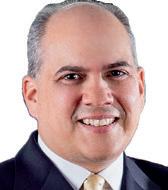








ISSUE#28
ON THE HOMES FRONT ADDRESSING RETAIL LENDERS’ BIGGEST CLIMATE RISK, WITH ING ‘OPEN’ TO SUGGESTIONS LESSONS AND SOLUTIONS, POST-PSD2 FINCRIME TIMES LEXISNEXIS ASKS: HOW LONG CAN THE INDUSTRY BEAR THE COST? SunTec ● Wahed ● Worldline ● LexisNexis ● Nationwide ● tbi bank ● Glint NAB ● Nuapay ● EcoVadis ● Zopa Bank ● Neonomics ● FIDO Alliance ● Barclaycard Payments INSIGHTS FROM G +D and Netcetera: Shaping the future of payments GABRIELLE BUGAT & COLLEAGUES ON TRUST, ACCESSIBILITY AND SUSTAINABILITY GOOD BOT, BAD BOT ACI WORLDWIDE , RABOBANK & HSBC ON AI, ETHICS AND EXISTENTIAL THREATS
FIGHTING


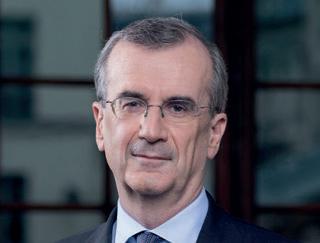













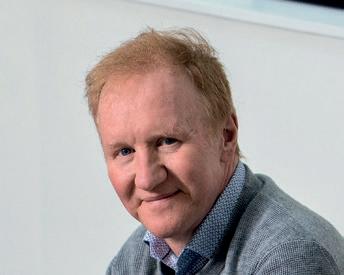




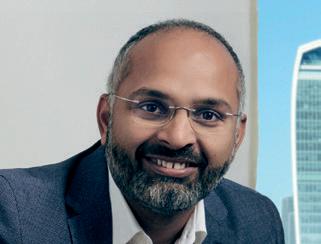
∞ Networking 10 0 CEOs on stage 50 Participants 4 0 Countries ∞ Networking 10 0 on stage 50 0 Participants 4 0 Countries Paris ∞ Networking 50 0 Participants 4 0 Countries Paris ∞ Networking 4 0 Countries Paris ∞ Networking Paris parisfintechforum.com JOIN US 30 - 31 MAI F. VILLEROY DE GALHAU Banque de France (FR) Governor V. ROSS ESMA (FR) Chair L. DAVID BNP Paribas (FR) Deputy CEO / COO JP. MAZOYER Crédit Agricole (FR) Deputy CEO P. AYMERICH Société Générale (FR) Deputy CEO S. BOUJNAH Euronext (NL) CEO M. ROUSO La Banque Postale (FR) CEO Retail Banking JM. CAMPA European Banking Authority (FR) Chair J. LAMBERT Mastercard (US) Chief Digital O cer G. GRAPINET Worldline (FR) CEO H. KARONIS Viva Wallet (GR) CEO C. HOGG Visa Europe (UK) CEO F. SIMONESCHI TrueLayer (UK) CEO P. GAUTHIER Ledger (FR) CEO P. TAYLOR Thought Machine (UK) CEO M. TAYENTHAL N26 (DE) Co-CEO S. PARK Anthemis (UK) Co-Founder E. GUEZ Papaya Global (IL) CEO JC. SAMUELIAN Alan (FR) CEO J. JANARDANA Zopa (UK) CEO
FINTECH FOCUS
13 Lemmings don’t run off cliffs… intentionally, anyway What does the SVB story tell us about human behaviour – and could new uses of AI amplify it?
26 Parents don’t teach kids financial literacy… apps do Kids’ finance is a hotly contested market in the UK, and not before time, says Stuart Thomas.

49 Rock on, fintech!
If Ohio isn’t on your destination list, it should be, says the state’s fintech flagwaver Ron Rock. And fellow Buckeye Jim Marous tends to agree!
82 Where now for startups?
The curious demise of TechNation in a period of investment uncertainty
COVER FEATURE
6 Shaping the future of payments
How Giesecke+Devrient and Netcetera plan to tackle the industry’s biggest challenges together
NEOBANKS



16 Keeping the faith
The rise of Sharia-compliant products is a way of righting age-old inequalities in finance, says Junaid Wahedna, Founder and CEO of Wahed

18 Retail banking reimagined
tbi bank took a new look at retail banking seven years ago and built an entirely new model that leverages the power of alternative payments for the benefit of merchants and consumers, as Petr Baron explains
21 Credit where it’s due Zopa Bank’s Chief Strategy Officer Merve Ferrero explains what a responsible BNPL product looks like
24 Glittering success
We ask Jason Cozens, CEO of Glint, what’s next for gold-backed challengers?

THEFINTECHVIEW
ISSUE #28 2023
At the risk of adding to an already crowded debate, in which the world and its dog and Elon Musk hold a view, how have we come so far in the development of AI and yet made so little progress on deciding how/if to regulate it in some key jurisdictions – notably the UK and US?
OpenAI’s ChatGPT made history in January by becoming the fastest-growing consumer app, accruing 100 million daily active users in just 40 days – it took TikTok nine months to achieve such popularity.
The unprecedented speed of adoption, and the step change that generative AI presents in the way we interact with machines, has prompted a host of concerned commentary, government hearings and tech bosses themselves to call for closer scrutiny and control of the technology. And yet civil society groups, academics and developers have all been highlighting concerns for years about potential problems with large language models like these.
Not everyone has been sleepwalking into a regulatory and moral mess. The EU is in the process of introducing legislation that, once approved, will be
the world’s first on AI. Biometric surveillance, emotion recognition and predictive policing AI are set to be outlawed and there will be tailor-made regimes for general-purpose AI and foundation models like GPT, with regulatory categories for low, limited, high and unacceptable risk. The rules also allow for complaints to be made about AI. Welcomed by civil society groups, the rules go for a vote before the whole parliament this month.
AI is a thread that runs through this issue – sustainability, open banking, regulation, and the discussion on how to monitor and eliminate AI bias in financial services on p68 is particularly interesting.
When asked recently if AI was a threat to humanity, ChatGPT replied: “It is up to us, as the creators and users of AI, to ensure that it is used in a responsible and ethical manner.” There was a deal too much species confusion in that sentence for me. Regulators need to get a grip. Our last issue’s spine tingler, “How many people had that kind of crazy dream and yet lived to see it come to fruition?”, was by Dee Hock, founder of Visa (1929-2022). Sue Scott, Editor
CONTENTS
Issue 28 | TheFintechMagazine 3 24 26 6 16
OPEN BANKING
28
Layer cake
Open banking hasn’t disintermediated legacy providers to the extent they feared – not yet. As more players build layers of services on top of the data banks hold, Brian Hanrahan, CEO of Nuapay, shares how they can ensure their slice of the action
30 Breadth and depth: open banking at opposite ends of the world
The UK’s NatWest and National Australia Bank recently compared and contrasted the two countries’ approach to open banking and came up with five recommendations for the next stage of their respective journeys. Here, the report’s authors, Clare Melling and Brad Carr, look at what the future could hold

34 Open to change
PSD2 hasn’t unlocked quite as many doors in Europe as its architects hoped. But Nikolaj Hartvig from Neonomics and Tom Wijnen from Worldline – the first ‘pan-European pure PSD2 API providers’ – are optimistic it can still fulfil its potential
REGULATION & TRUST
40 Heroes and villains: the UK’s fincrime debate
Eddie Vaughan from LexisNexis Risk Solutions, Jim Winters from Nationwide Building Society and David Callington from HSBC ask if it’s time for a new approach to fighting economic crime
44 Kill or cure?
Is Secure Customer Authentication just a sticking plaster for a patient that’s bleeding out? Linda Weston, MD and Head of Core Products for Barclaycard Payments, Andrew Shikiar, Executive Director of the FIDO Alliance, and Quintin Stephen, Director of Global Strategy at Giesecke+Devrient discuss vital signs and possible interventions
SUSTAINABILITY
52 Be the change you want to see Is sustainability slipping down the banking agenda? Mobiquity’s Peter van de Venn urges banks to keep their eye on the prize – being a brand with a purpose

55 The heat is on ING’s Anne-Sophie Castelnau explains how the bank is tackling one of the biggest polluting sectors in its lending portfolio… and it’s not who you think
ARTIFICIAL INTELLIGENCE
65 AI see the future
SmartStream CTO Roque Martinez reveals how the company’s significant investment in AI is taking it into new and surprising markets
68 Countering bias in financial AI
It’s become an indispensable technology in financial services, but how does the industry ensure it’s working to the benefit of everyone?
We find out with ACI Worldwide, HSBC and Rabobank
TECHNOLOGY STRATEGY
72 The power of partnerships
Justus Roux, Head of Solutions Engineering, EMEA, at Mambu, says that trust and compatible culture can deliver best-in-class customer journeys
74 Mix and MACH
The UK’s smaller banks and building societies could help ‘unleash’ economic growth in line with the government’s Edinburgh Reforms. But to take full advantage of that they need access to affordable tech… Rajesh Saxena from Intellect Design Arena believes he has the answer
TRADETECH

76 You can’t be it if you can’t see it
In a subbornly homogeneous industry, Man Group is leading by example on inclusion and diversity. It’s hard but worthwhile work, says Rachel Waters, its Deputy Head of Trading Platform Technology, who shares her experience of what it’s like to be in the minority

62
Short of turning off funding for fossil fuels tomorrow, Martin Richards from HSBC, Clinton Abbott of SunTec and Alex Garkov at EcoVadis explore how banks can effect positive change in the global economy
Traditional models underestimate the role of climate as a driver of past events. Jamie Rodney, CEO of Reask, explains why a new approach, using climate-aware AI, is needed
78 Brave new worlds
We speak to TradeTech chair and diversity champion Julia Streets about the opportunities and challenges the metaverse presents to invesrment

80 A thoroughly modern MAN
Gary Collier, CTO of investment manager Man Group’s Alpha Technology Division, describes how technology augments today’s traders and how it will in future
4
76 30 40
CONTENTS
TheFintechMagazine | Issue 28 ffnews.com All Rights reserved. No part of this publication may be reproduced, stored in a retrieval system or transmitted in any form or by any means, electronic, photocopying or otherwise, without prior permission of the publisher and copyright owner. While every effort has been made to ensure the accuracy of the information in this publication, the publisher accepts no responsibility for errors or omissions. The products and services advertised are those of individual authors and are not necessarily endorsed by or connected with the publisher. The opinions expressed in the articles within this publication are those of individual authors and not necessarily those of the publisher. EXECUTIVE EDITOR Ali Paterson GENERAL MANAGER Chloe Butler EDITOR Sue Scott PRODUCTION Taylor Griffin Trinity Yau HEAD OF CONTENT Douglas Mackenzie HEAD OF MARKETING Ben McKenna CONTACT US ffnews.com DESIGN & PRODUCTION www.yorkshire creativemedia.co.uk ART DIRECTOR Chris Swales PHOTOGRAPHER Jordan “Dusty” Drew ONLINE EDITOR Lauren Towner ONLINE TEAM Joshua Hackett FEATURE WRITERS David Firth l Tracy Fletcher Tim Goodfellow l Alex King Martin Heminway Natalie Marchant Martin Morris John Reynolds Frank Tennyson Stuart Thomas l Sue Scott Fintech Finance is published by ADVERTAINMENT MEDIA LTD. Pantiles Chambers 85 High Street Tunbridge Wells, TN1 1XP ACCOUNTS TEAM Jacob Bruce l Tom Dickinson Nicole Efthymiou Emillie Snelgrove VIDEO TEAM Lewis Averillo-Singh Alexander Craddock Max Burton l Luke Evans Louis Jean La Grange IMAGES BY www.istock.com PRINTED BY Print it 24 seven "PROUDLY NOT ABC AUDITED" THEFINTECHMAGAZINE 2023 ISSUE #28
The activist bank
58
Calm before the storms


THE POWER OF
PAYMENTS Download our latest whitepaper Scan the QR code to get your free copy
UNLOCK
DIGITAL
Shaping the future of payments
How Giesecke+Devrient and Netcetera plan to tackle the industry’s biggest challenges together
As a global security technology group, Giesecke+Devrient (G+D) is renowned for orchestrating seamless physical and digital customer payments journeys.
Its groundbreaking work on public currencies, cards and issuance, digital payment solutions and, most recently, around designing central bank digital currencies (CBDCs), are just some examples of how it’s not only shaped today‘s financial landscape but is also helping the payments industry prepare for that of tomorrow.
Recently, it’s taken a majority stake in Netcetera, a leading provider of secure digital payments, with whom G+D has worked as a key partner for several years. Together they are doubling down on G+D’s broad mission to ‘engineer the trust to secure the essential values of the world’.
The two companies’ objectives are complementary: G+D’s core value is to create confidence and to protect payments in the physical and digital worlds. Netcetera is dedicated to creating digital trust and value with a comprehensive portfolio of solutions. Together, they offer both plug and play and tailor-made products for clients’ specific needs.
Both are responding to an evolving and complex matrix of customer demands, not just to ensure payments are secure and convenient across every channel and device, but that they are also mindful of ecological costs to the planet and genuinely accessible to everyone on it.
“Payment has become a massively adopted everyday experience: whether online, on a smart device, or in-store, consumers expect a flawless experience where services are designed around their core needs,” says Carsten Wengel, CEO of Netcetera.
“The payment ecosystem faces the challenge of offering an intuitive, scalable, and secure customer experience while creating confidence in the designed payment solutions.
“G+D has more than 170 years of passion for currencies and payments, delivering solutions to the financial services industry, ranging from banks to fintechs, around the globe, while digitally born Netcetera has software-based innovation built right at the heart of its business.
“Collectively, G+D and Netcetera are the perfect match of innovation and trusted expertise.”
With Netcetera, G+D can offer an expanded set of solutions to further optimise e-commerce payments as well as elevate customer experience for digital payments and banking.
The companies’ combined development capabilities will, they say, accelerate innovation, creating a powerful force as ‘global partners supporting local flavours in the payments world‘. Netcetera has already announced that it will be making a multimillion investment in its international digital banking offering, the benefits of which will extend to G+D’s 500-plus banking clients.
DIGITAL PARTNERS
Netcetera is a Swiss-headquartered global software company, providing IT products and individual digital solutions in the areas of secure digital payment and financial technologies.

More than 2,500 banks and issuers, and 160,000 merchants already rely on its digital payment solutions and globally certified 3-D Secure products. It’s recognised as a market leader in payment security.
G+D joined Netcetera as a strategic partner in September 2020 and it took a majority stake in the company in early 2023. It’s led by the CEO of Netcetera, Carsten Wengel.

6 COVER FEATURE:
COMPANY FOCUS
TheFintechMagazine | Issue 28 ffnews.com
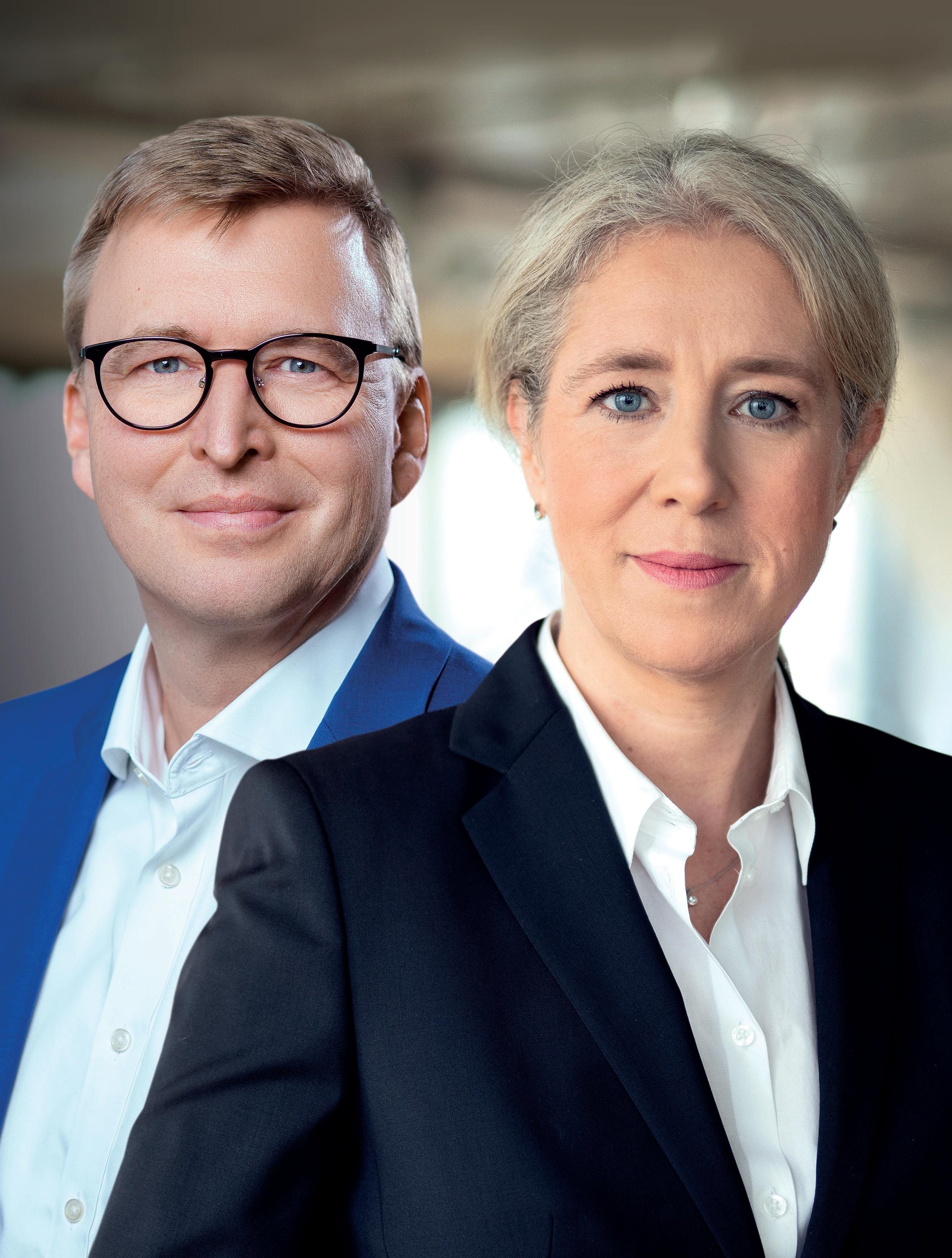

7 ffnews.com Issue 28 | TheFintechMagazine
Our goal is to work with stakeholders across the industry to create solutions that ensure no one is left behind in the payment journey
Gabrielle Bugat, CEO of G+D Mobile Security, heading the Card & Digital Payments business of G+D
Collectively, G+D and Netcetera are the perfect match of innovation and trusted expertise in this fast-paced world, enabling safer, more convenient, more sustainable, and more accessible payments for everyone
Carsten Wengel, CEO, Netcetera
While banks might still – for now, at least – be customers’ chosen partner of trust when it comes to making life’s big financial decisions, many have lost ground to fintechs in the personalisation of services, innovative user experience, and in providing frictionless day-to-day banking.
Omnipresent Big Techs, meanwhile, with their big brands and big budgets, are encroaching into payments and disintermediating banks’ relationship with customers. Alipay, PayPal and Apple Pay. taken together, are now the leading payment method globally, taking a 49 per cent share of e-commerce transactions, and 32 per cent of point of sale transactions, according to the FIS Global Payments Report 2023.
Rather than simply presenting account holders with a menu of conventional banking services, G+D and Netcetera’s solutions are designed to help banks build offerings around their customers’ core needs while also allowing them to be fully personalised to consumers’ individual lifestyles and requirements.
How does that work? Well, a digital-first consumer journey could start with issuing a virtual card, to be used immediately while the customer waits for the physical card to be mailed. That virtual card can unlock a diverse range of added-value digital solutions that enable payments with effortless authentication, all of which exist alongside the consumer’s traditional physical banking journeys.
While that helps banks maintain their current position in the payments firmament, there is another vacancy in the digital ecosystem that they’re more than qualified to fill. And that’s as a custodian of what is arguably customers’ most valuable and most vulnerable asset: their digital ID.
By leveraging the trust they still hold and their unique access to customers’ financial and personal information, banks could be a one-stop shop for authentication within the transaction process – be that age verification for restricted purchases, assessment for insurance or a loan, or even paying their taxes.

For consumers, using the bank for
verification is reassuring, because data does not leave their bank’s domain, while it greatly accelerates their transaction process.
On another level, payments are also increasingly being seen as a way to strengthen a bank’s brand by demonstrating its actions on issues that matter – including tackling environmental challenges and addressing social inclusion.
G+D and Netcetera are addressing all these inflection points for banks by focussing their efforts on four key areas: redefining trust and customer experience in e-commerce; supporting the phygital
awareness to navigating through fraud, data security, and payment processing.
The act of payment is clearly the most vital concern for e-merchants and improving the customer experience is the top reason they add new payment methods, according to the Merchant Risk Council. And yet paying online is still one of the most significant friction points for customers: a trusted one-click checkout is still a long way from being the everyday experience.
Merchants continue to lose a quarter of all online sales because shoppers are
finance revolution; providing authentic eco-solutions; and making payments easier and accessible for all.
REDEFINING TRUST AND CUSTOMER EXPERIENCE IN E-COMMERCE
In 2022, worldwide e-commerce accounted for more than a fifth of overall retail sales, exceeding $5trillion for the first time, with the vast majority (almost 61 per cent) of those sales conducted over mobile.
By 2025, it’s forecast that a quarter of all spending will be online. But the e-commerce ecosystem is facing a multitude of challenges in its day-to-day operations – from supporting a plethora of new payment methods and increased ecological
confused or frustrated by the checkout process. That friction is more often than not caused by a clunky authentication experience. And yet secure authentication is essential to protect both the customer and the business from historic levels of fraud that sapped US $41billion out of the e-commerce market worldwide between 2020-2023. Those losses were compounded by false positive declines.
Online shoppers’ expectations leave no room for a poor payment experience anywhere on the journey, not just at the checkout, of course. G+D and Netcetera believe that the way to success for merchants is to improve all aspects of the customer journey, says Peter Frick, managing director of secure digital payments at Netcetera.
“The continuous growth in e-commerce


8 COVER FEATURE: COMPANY FOCUS TheFintechMagazine | Issue 28 ffnews.com
Improving CX: Merchants lose a quarter of all online sales because shoppers are confused or frustrated by the checkout process
The continuous growth in e-commerce fuels the importance of best-in-class user experience and the highest compliance to security in all façades of digital payment
Peter Frick, MD, Secure Digital Payments, Netcetera
fuels the importance of best-in-class user experience and the highest compliance to security in all façades of digital payment,“ says Frick.
“We strongly believe that both of these aspects are not yet available to consumers and businesses in everyday life, nor have we reached a level where fraud is cornered or even contained in our industry. That is why Netcetera and G+D, put their combined strengths at our customers’ and partners’ disposal.”
Netcetera covers the full spectrum of the digital payments industry, providing

reconciling the need to maintain physical as well as digital touchpoints and services – a duality that’s likely to exist for several years yet, as evidenced by the most recent Global Data Banking Survey.
It found that 80 per cent of neobanks acknowledge that a physical presence is important – it’s why the majority continue to offer customers the choice of a physical card as well as a digital wallet and why many invest in human call handlers to help customers with more complex issues.

between branch visits and phone app, laptop and letterbox – believes Heidari. And the payment card can act as the key to that new way of interacting as the customer’s physical and digital worlds converge.
“The payment card is a tangible symbol of the trusting connection between the bank and the customer,” says Heidari. “At the same time, it represents the entry ticket to the digital world by giving consumers access to a vast network of services and applications – tailored, individualised messaging, with print materials enhanced with cutting-edge alternative reality and video solutions; customer-generated payment card designs made available in digital formats instantly; and even unmanned, instantprint card kiosks.”
G+D and Netcetera can help implement all these and more, says Heidari.
“It’s about being open and creative, putting the customer at the centre of every activity and recognising their needs before they arise,” he adds. “The focus is not on blindly chasing every trend, but on keeping a finger on the pulse.”
DRIVING SUSTAINABILITY WITH AUTHENTIC ECO-INNOVATION
end-to-end solutions for issuers, acquirers, merchants and PSPs. With G+D, it’s committed to improving every aspect of the customer journey and addressing the biggest challengers that providers face –from enabling e-commerce transactions without exchanging vital account information, to providing a seamless checkout experience and everything in between. By enabling the e-commerce ecosystem to build a superior experience for their customers they can, in the process, enhance those business's success.
SUPPORTING THE PHYGITAL PAYMENTS REVOLUTION
G+D is one of the few payment technology providers covering both the virtual and physical worlds of payments. That gives it a unique perspective when it comes to
Meanwhile, both neo and incumbent banks are, at the same time, investing in the valuable data that can be collected via digital channels.
For Mehdi Heidari, head of product management digital issuance at G+D, phygital banking is the sweet spot between physical-only and online-only services. He believes it is the best way of creating a personalised customer experience.

“Customers’ lives already blend the physical and digital almost everywhere they go. From entertainment to transportation, smart digital services enhance, elevate, and personalise these experiences. Payment and banking solutions are no different,” he says.
Phygital services must be omnichannel – offering a seamless, consistent experience as the customer switches
With sustainability rising up the banking industry’s agenda, how we pay goes beyond just a technological choice.
“As a society, we have a responsibility to create a more sustainable future,” says Chitua Kalio, global head of client services in the Card & Digital Payment business of G+D. “The payment industry is stepping up to the challenge, leading the way toward a more eco-conscious payment landscape.
“By embracing these environmentally friendly business methods, banks and financial institutions can play a crucial role in influencing society’s sustainability journey and minimise the damage we leave behind.”
G+D has worked towards that goal since 2010, when it signed the United Nations Global Compact – a declaration of intent by commercial companies to adopt sustainable and socially responsible governance policies.
9
It’s about being open and creative, putting the customer at the centre of every activity and recognising their needs before they arise. The focus is not on blindly chasing every trend, but on keeping a finger on the pulse
ffnews.com Issue 28 | TheFintechMagazine
Mehdi Heidari, Head of Product Management Digital Issuance, G+D
It has made huge progress since – both on an individual corporate level and in putting the payments industry on a more sustainable footing. G+D has set transparent and clearly formulated targets, in line with the principles of the UN’s Sustainable Development Goals, and recently raised its own carbon neutrality target, committing to reduce its Scope 1, 2, and 3 emissions and thus achieve net zero across the group.
In 2021, G+D initiated its first partnership with a new breed of eco-innovator in the payments space, Doconomy. More recently, Patch was made part of an expanding G+D ecosystem of environmentally-focussed fintechs that are offering end-to-end eco-payments solutions that support G+D’s clients in their own sustainability commitments. They provide tools that can be embedded in banking and payment apps to track and measure consumers’ carbon emissions through their payments activity and encourage them to have a more sustainable lifestyle or offset their CO2 footprint.
our environment,” says Kalio. “[We want to] embark on an authentic transformation together and lay the foundation for a better, greener tomorrow."
MAKING PAYMENTS EASIER AND ACCESSIBLE FOR ALL

Alongside environmental sustainability, social responsibility is deeply ingrained into the foundational ethos of G+D. While it might not generate as many headlines as climate initiatives, tailoring services to meet the needs of an increasingly older population and improving the user experience for those living with impairments are equally vital.
According to UN, one in six people in the world will be over 65 by 2050, up from one in 11 in 2019, and life expectancy beyond 65 is set to increase by 19 years. These demographic shifts underline how important it is for socially responsible enterprises to meet the diverse needs of individuals.
“Payments are for all, aren’t they?,” says Gabrielle Bugat, CEO of G+D Mobile Security, heading the Card & Digital Payments business of G+D. “And, as we move towards a more digital and diverse society, payment methods must be easy, convenient, and secure for everyone. Technology has a critical role to play in fostering accessibility and inclusion.“
into the card, so users don’t have to enter a PIN at checkout; Braille-embossed cards, cards with larger font sizes, and highcontrast text for visually impaired users are all design features within G+D’s scope. Solutions have also been extended to the onboarding experience. By scanning a large QR code on the letter that accompanies a card, users can hear instructions on how to activate their card, obtain a PIN, and find out about the rewards and benefits associated with the card programme, with preferred language, layout or colour settings for greater accessibility.
Recognising that the eco-card is a symbol of change with a potentially powerful multiplier effect in the hands of the user, the company became the first in the payments card industry to pledge the elimination of virgin plastic in all its payment card bodies by 2030. Its Convego® Beyond card bodies already consist of 100 per cent recycled or compostable plastic, including a card body made entirely from plant-based materials. All this has required a true, cross-industry effort.
“We envision a future where the entire industry adopts truly sustainable practices, making a significant and positive impact on
With a rapidly ageing population globally, a new demographic structure will drive new demands on different forms of payment methods or experiences. A card is still, however, the most-used, non-cash daily payment method worldwide and represents not only the physical bond between banks and customers, but also a strong branding statement for banks.

G+D is supporting many of its clients in addressing the payment card issuance journey to make it easier for older people and those with visual impairments. Its More Accessible Payments (MAP) solutions provide a range of enhancements for its clients’ customers. Identification bumps on payment cards that signal to a user whether they are holding a credit or a debit card; a notch at one end of a card to help customers orient it the right way for insertion into an ATM or card reader; a biometric fingerprint reader embedded
The digital onboarding of vital services is also being enhanced. By identifying themselves via a secure ID process and facial biometrics, users don’t need to present themselves at a physical branch or get a notary public to confirm their identity. Meanwhile, Netcetera has launched the ToPay Senior wallet with design features that increase accessibility for any customer looking for a simpler mobile interface. Solutions that support customers with impairments provide a starting point for extending banking services to a broader population who may not benefit equally from the advance of innovative payment technologies. So, designing with different groups of users in mind can actually improve the experience for everyone, believes Bugat.
“At G+D, we believe in leveraging technology to create reliable payment solutions that empower customers and enable accessibility for all individuals,” she says. “Our goal is to work with stakeholders across the industry to create solutions that bridge the gap and ensure that no one is left behind in the payment journey.”

10 COVER FEATURE: COMPANY FOCUS TheFintechMagazine | Issue 28 ffnews.com
As we move towards a more digital and diverse society, payment methods must be easy, convenient and secure for everyone
Gabrielle Bugat, CEO of G+D Mobile Security, heading the Card & Digital Payments business of G+D
We envision a future where the entire industry adopts truly sustainable practices, making a significant and positive impact on our environment
Chitua Kalio, Global Head of Client Services, Card & Digital Payment, G+D
Giesecke+Devrient became the first in the payments card industry to pledge the elimination of virgin plastic in all its payment card bodies by 2030
We build so you can scale faster
We build so you can scale faster
We build so you can scale faster
One digital payments infrastructure witheverything you needto globalise your payment platform.
One digital payments infrastructure witheverything you needto globalise your payment platform.
One digital payments infrastructure witheverything you needto globalise your payment platform.









Let's meet at Money 20/20 Europe!
Let's meet at Money 20/20 Europe!
Let's meet at Money 20/20 Europe!
You deliver the experience, we power the payments. Seamlessly embed financial services into any user journey with our suite of functional APIs. eps.edenred.com Accounts & Payments Card Issuing Processing
I was sitting in a Soho bar on Coronation Day, talking to a tech entrepreneur about Silicon Valley Bank.
As the jazz duet played a little too loudly behind us, he told me how he’d emptied his SVB UK business account in March, when news reached him that the US parent ‘bank for the innovation economy’ was on the point of collapse. How he’d had to explain to – albeit very understanding – investors that the cash was now sitting in his personal account, held with another provider, until they figured out how badly exposed the UK arm of SVB was.
He’s an intelligent chap: he knew that he’d contributed to a run on SVB UK that, ultimately, would see it sold to HSBC in a Bank of England-brokered deal for £1 just a few days later. At which point, he returned the money to the bank.
So, one afternoon in March 2023, SVB
UK was the custodian of around £11billion on behalf of 4,000 or so business customers; by close of play the following day, many of them – spooked, like my drinking pal, by the knowledge that they had more sitting in their account than would be covered by the UK’s Financial Services Compensation Scheme if the bank failed – had withdrawn more than £4billion between them. SVB UK’s fate was sealed.
Under the Bank of England’s ‘resolution’ procedure, introduced after the financial crash in 2008, for a bank the size of SVB UK things would go one of three ways: a sale/transfer to another bank – and fast; a ‘bridge bank’, organised by the Bank of England, would take over the running of SVB UK’s core functions until a deal was done or it was wound down; or (nuclear option) the bank would be declared insolvent immediately, thousands of its bigger business clients would lose a heck
Lemmings don’t run off cliffs… intentionally, anyway
Sue Scott ponders if technology could accidentally exacerbate banking crises?
of a lot of unprotected money, and the taxpayer would be left with a stonking compensation bill for the rest.
It begs the question: if everybody had just sat tight, could SVB UK have been safely detached from its parent bank and survived intact? Perhaps. But panic has its own momentum and you can’t blame founders wanting to protect their assets and the interests of investors– not to mention the welfare of staff whose pay cheques they might otherwise not have been able to meet at the end of the month.
Bank runs are a regulator's worst nightmare. And yet technology appears to be conspiring to make them more likely – not less.
Elsewhere in this issue, SmartStream reveals that it’s actively looking at using its AI to detect subtle changes in patterns of bank behaviour that could raise a red flag for SmartStream clients who are among its counterparties.
13 FINTECH FOCUS: SVB
ffnews.com Issue 28 | TheFintechMagazine
While the decision on what to do as a result of receiving such a signal rests with a human, the immediate response, in the interest of self-preservation, is likely to be to stop transacting until further inquiries have been made. Thus, if enough red flags are raised at the same time, a non-critical event that could have been caused by any number of factors, including human error, could be turned into a major and possibly fatal incident for the bank.
SESAMm, the AI-driven award-winning French startup that started as a student project nine years ago and recently closed a €35million Series B funding round, keeps track of potential controversies and positive-impact events on companies around the world by trawling 20 billion articles and 10 million new documents on the internet daily. It then applies a series of filters, including, among others, risk, sentiment and severity, to come up with bespoke analyses for its clients. They tend to be major private equity firms, asset managers, index providers and global corporations who are increasingly interested in sentiment indicators to keep them ahead of financial markets.
Sylvain Forté, co-founder and CEO of SESAMm, told me that it had started to pick
DEATH OF A BANK
MARCH 8
In a statement to stakeholders, SVB in the US says it’s taken ‘strategic actions to strengthen our financial position’, which includes a share issue to raise around $1.75billion on top of a $500million investment pledge by one of its clients. It also sells its bond portfolio at a $1.8billion loss. The bank insists: “Our financial position enables us to take these strategic actions. SVB is well-capitalised, with a high-quality, liquid balance sheet and peer-leading capital ratios.” Credit ratings agency Moody’s downgrades its outlook on SVB from stable to negative.


MARCH 9
SVB’s CEO Greg Becker calls on VC firms to ‘stay calm’ following a flurry of memos and Twitter posts by startup investors forecasting its collapse. Customer withdrawals continue apace and its stock plunges 60 per cent. SVB UK customers begin panic withdrawals.
up signals as early as January that a run on SVB in the US was possible – long before regulators – and most of the rest of us – were aware that anything was untoward.
“It was more reputational indicators. There was a dip in sentiment, particularly on social channels, like Twitter. I’m not saying we predicted the collapse, but [what we saw] was interesting,” he says.
a replacement for decision-making,” he says. Nevertheless, the impact of AI in both use cases – transaction monitoring and sentiment analysis – is clear. It gives a competitive advantage to those employing the technology – and, as a business leader, who wouldn’t want that? But it could also amplify any negative response to signals that might turn out to be benign. And, as we’ve seen, even if they are noteworthy, the speed with which panic sets in is already systemically alarming.
“We’re seeing more and more demand for risk monitoring in general, even of suppliers and clients. And SVB was a supplier to a lot of corporates.”
He’s keen to stress his technology should be seen as guiding management decisions. “It may indicate a need for exclusion or portfolio rebalancing, but it’s not
There is, as yet, no technology that prevents lemmings running off cliffs, which isn’t – as the Disney myth-makers would have us believe – because they are seized by a collective impulse to self-destruct. Rather, environmental signals – in their case of over-population – trigger them to up-sticks and move all at once. In the rush, there are fatalities, which perhaps could have been avoided if they’d moved slower or taken time to consider alternatives to mass migration, or, indeed, if the Chief Lemming had put rules around such things.
As regulators in the UK and US separately consider how to legislate for unintended consequences of AI, and especially how those might affect financial services, it’s worth thinking about those lemmings.
MARCH 10
SVB becomes the biggest bank crash in the US since the Great Financial Crisis. The regulator places it into receivership and $175billion in customer deposits are put under its control. Signature Bank, another business bank, mainly servicing real estate and law firms but which also banks crypto clients, starts haemorrhaging deposits. The Bank of England intervenes to prevent a disorderly collapse of SVB UK.
MARCH 12
US regulators close Signature Bank. New York Community Bancorp will acquire ‘certain financially and strategically complementary parts of Signature’ a fortnight later.
MARCH 13
HSBC agrees to buy SVB UK for £1. Its London-based staff will stay in their jobs and run the bank from its existing offices. HSBC will go on to hire
former SVB staff in the States for a new business, supporting tech companies and their investors – a move that will later see it sued by SVB’s new owner.
MARCH 16
Eleven of the biggest US banks inject a total of $30billion into teetering First Republic Bank.
MARCH 27
US-wide bank First Citizens acquires SVB in the States.
MAY 1
Regulators close First Republic and sell it to JPMorgan Chase.
MAY 2
HSBC’s Q1 results show a $1.5billion boost from the SVB UK takeover. “In the weeks that have passed since the time of doing the deal there have been no nasty surprises,” says group CEO Noel Quinn. “The UK business was well run and had a good portfolio of customers.”
FINTECH FOCUS: SVB
TheFintechMagazine | Issue 28 ffnews.com 14
There is, as yet, no technology that prevents lemmings running off cliffs, which isn’t – as the Disney myth-makers would have us believe – because they are seized by a collective impulse to self-destruct
MARCH 8 MARCH 9 MARCH 10 MARCH 12 MARCH 13 MARCH 16 MARCH 27 MAY1 MAY2













































































CONNECTING YOU TO ALL PARTS OF THE FINTECH ECOSYSTEM JOIN 300+ TRAILBLAZING FINTECH LEADERS ONSITE HEAR FROM 50+ LEADING SPEAKERS FROM FIS, CHALLENGER BANKS, MERCHANTS AND FINTECH FOR OUR FIRST YEAR IN-PERSON, MAKE SURE YOU’RE PART OF THE CONVERSATION REGISTER FOR FINTECH CONNECT NA 2023 TODAY! Who will be there?WHO WILL BE THERE? www.fintechconnect.com/north-america info@fintechconnect.com June 27, 2023 Convene Quorum, New York SAVE 20% Using Code FFNEWS20 2023 CONFIRMED SPONSORS
Window of opportunity:

Wahed’s Sharia-compliant offering addresses inequality in an interest-based system
The rise of Sharia-compliant products is a way of righting age-old inequalities in finance, believes Junaid Wahedna, Founder

With the democratisation of finance an accepted goal for most within banking services, it remains a challenge that the very building blocks of the industry are, on the face of it, anathema to big swathes of the global population who try to live by Sharia law.
KEEPING THE FAITH KEEPING THE FAITH
With interest considered riba – ‘an unjust, exploitative gain’ under the law and forbidden for Muslims – interest-earning bank accounts, interest on any form of lending or borrowing, including most mortgages, and interest-charging payment cards, are very much off the table.
and CEO of Wahed
Add into the mix the fact that for financial services to be compliant with the teachings of Islam, they cannot invest in companies associated with alcohol, tobacco, or gambling, and many Muslims living in non-Muslim majority nations face compromising on their faith simply to access basic facilities.
It’s clear that halal (permitted) alternatives are required. And where there is a need in finance, very often it is fintechs who take up the gauntlet. Wahed, which was first launched as a Shariah-compliant investment platform in the States, came up with just such a transaction banking
and savings alternative for British Muslims.
While it’s perhaps no surprise that the Islamic fintech market size in the 57 member states of the Organisation for Islamic Cooperation (OIC), totalled $49billion in 2020, and it’s anticipated to grow by 21 per cent to reach $128billion by 2025 (according to figures from Dinar Standard and Elipses), elsewhere, there is a widening gap between demand for Shariah-compliant finance and supply.
In the US, for instance, a study by think-tank the Pew Research Centre estimated there were 3.45 million Muslims (1.1 per cent of the population)
16 NEOBANKS: ISLAMIC FINANCE
TheFintechMagazine | Issue 28 ffnews.com
living in the States in 2017. Between 2010 and 2020, the number of mosques increased by 31 per cent and almost a quarter of worshipers attending them were Gen Z or young Millennials – the typical fintech demographic – according to research by the US Institute for Social Policy and Understanding. The figures give an insight into Islamic observance in a country that is woefully underserved by Shariah-compliant financial services.
New York-based Wahed, backed by Saudi oil giant Aramco, originally mobilised to cater for this ‘underserved sector’. Since its creation in 2017, Wahed claims to have served more than 300,000 customers in 100-plus countries around the world with offices in the US, Malaysia, UAE, KSA, Nigeria, Kazakhstan, Indonesia, India and Mauritius. It became the first halal investment platform to be approved by the UK’s Financial Conduct Authority in 2018 and went on to acquire startup Niyah, a British company that designed a digital banking app for the Muslim community, in December 2020.
CEO of Wahed, Junaid Wahedna, explains the company’s genesis: “I come from a practising Muslim background myself, and finance is a very nuanced issue. Put simply, Muslims aren’t allowed to deal with or be exposed to interest in any way, shape or form. And, as you can imagine, that’s an impossible thing to avoid, considering our financial ecosystem in the West completely works around interest.
“So that’s why Wahed was formed; to give a credible, regulated alternative to keeping your savings in your bank account.”
Wahed began by delivering a simple savings solution: instead of keeping money in a savings account or at a lending institution where it would be exposed to interest, customers could invest in a screened diverse portfolio with no interest element or related to any investees who could be regarded as unethical.

Earlier this year, Wahed upped its offering to UK customers by rolling out a gold-backed debit card, which will allow them to use Wahed as their main spend and save account, making purchases using their Wahed card with their money held in a gold exchange traded commodity (ETC).
“Customers didn’t want the money ever to be sitting in a bank because it would be used for interest-based lending and inequality creation, but they had been
asking, ‘why can’t we pay our salaries directly into our Wahed account?’, ‘why can’t we spend out of our Wahed account?’” says Wahedna.
“And that’s where this idea came about to have a transaction banking layer where you have a bank account number, a sort code, a debit card and the ability to make transfers, but all your money is always kept in assets. It’s very simple, but it’s never really been done for this specific use case.”
There are other advantages, too, that make it appealing to Muslim and non-Muslim users alike.
“Your money is usually kept in fiat currency in a high street bank, but with us, it’s always kept in a real asset, so you don’t have the same inflationary pressures. Your wealth grows over time, just as the high-net-worths’ do.
“There is no multi-millionaire keeping their money in cash. They are all in assets and portfolios. And that’s the solution we wanted to provide the everyday consumer. So, not only does it solve this faith-based restriction that we have, but it’s also better for them in the long term.”
Of the UK’s 3.9 million Muslims, one-third are based in London where Wahed opened a physical branch on Baker Street in
it any harm. During the recession, when there has been huge market re-evaluation within the fintech space, Wahed has more than ridden the storm.
“The recession has been amazing for us,” says Wahedna. “Our customers are very sticky, and we’ve grown our revenue some 75 per cent over the last year.
“Previously, the trend has been for fintechs to come out with lending products or day trading apps – and that’s great as long as the markets are moving up. But once you have a recessionary environment, and markets are moving downwards, then people don’t want to trade anymore, they’re not making any money, and a lot of people get hit. We were lucky because ours was always a long-term savings product, it was always very conservative, and so we retained our client base.”
The past six years have not passed without controversy, as you might expect from a fintech that challenges fundamental norms. In February of last year, the US Securities and Exchange Commission (SEC) charged Wahed Invest, LLC with making misleading statements and breaching its fiduciary duty, and for compliance failures.
Without admitting or denying the SEC’s findings, Wahed agreed to its rulings, which included retaining an independent compliance consultant, among other undertakings. It went further, in May 2022, by recruiting a former director of the SEC itself – Lori A. Richards – as the first woman to sit on the company’s board.
January this year. With closures becoming the norm for many high street banks, Wahedna explained at the time of the launch why it was important it bucked the trend.
“In the UK, [the Muslim community is] actually one of the lowest socio-economic segments of the country, with low incomes and poor financial literacy,” he said. “They have trust issues and so they want to see a physical presence before they trust you with their money.”
Taking such a contrary approach is something of a USP for the business, says Wahedna and it doesn’t appear to be doing
Wahed, which is powered by investment infrastructure provider WealthKernel, continues to keep the faith. Last year, it launched an exchange traded product (ETP) on the London Stock Exchange that allows investors to track the Wahed FTSE USA Sharia exchange traded fund (ETF) – the latter having outperformed the S&P 500 over the last three years, according to Seeking Alpha analysis. And it is now acquiring a number of related Sharia-compliant services that can be accessed via its financial management platform in the UK: it offers pensions and savings and recently acquired iWill Solicitors in the UK.
Its mission is simple, says Wahedna: “We are helping solve the systemic issue of inequality created by the current financial system. By creating a genuine alternative to interest-based systems, we believe we can help beat inequality in the long run.”
17
ffnews.com Issue 28 | TheFintechMagazine
You have a bank account number, a sort code, a debit card and ability to make transfers, but all your money is always kept in assets. It seems simple, but it’s never been done for this specific use case
‘Retail’ banking reimag i ned

tbi bank took a new look at retail banking seven years ago and built an entirely new model that leverages the power of alternative payments for the benefit of merchants and consumers, as Petr Baron explains
Petr Baron isn’t a conventional banker, but then tbi is no longer a conventional bank.
Originally registered in 2002 as West-East Bank, it was the first to be founded in Bulgaria using Slovenian capital and its aim was to finance the flow of goods and services between the two countries while also providing banking services to Bulgarian SMEs.
Nine years later it was acquired by Netherlands-based investment group tbi financial services and renamed tbi bank; 2012 saw it establish a presence in Romania, using European passporting rights. In 2016 it was bought by 4Finance Holding SA, one of Europe’s biggest online and mobile consumer lending groups.
By that time, it was well on the way to redefining what a ‘bank’ could be by combining its merchant and consumer businesses to create what Baron, its CEO, describes as an ecosystem for financing and shopping, benefiting tbi bank‘s merchant clients as well as the retail customers it shares with them.
He joined the bank in 2016, having established a track record in creating other mutually rewarding communities – first for a bank in Ukraine, where he deliberately recruited staff with experience in fast-moving consumer goods to build a ‘financial services supermarket’, combining nine companies in banking, risk insurance, reinsurance, life insurance, pension, leasing, asset management, consumer finance and brokerage; and then again by launching the MAXI loyalty
programme for large Ukrainian mass merchants in the fuel, shopping, entertainment and food sectors.
At tbi bank, he’s headed up a team that has transformed a legacy institution into one of the most successful challengers in South Eastern Europe, operating principally in Bulgaria and Romania, and, from last year, in Greece. Perhaps what’s most surprising is that its success all turns on one of the most contested areas of financial services – payments, and, increasingly, on POS instalment plans.
“Banking, being in many ways a service that people dislike, or don’t want to deal with, has got to become embedded, has to become contextualised,” believes Baron. And one of the quickest ways for his own bank to do that was by tapping into the alternative payments trend.
“We are the leaders in the payment plan business in our region, and we have very strong embedded, long-term relationships with all types of merchants, from the largest e-commerce players to the mom-and-pop stores,” he says.
“We believe that bringing consumers closer to those merchants, by providing insight into their shopping habits and interests, is the contextualised future of our business.
“We’re bringing finance together, to help, on one side, merchants do better business, and, on the other, to give consumers the ability to spread their payment and get the best offers – to embed our tools into their journeys to save them time and money.”
Clearly not an archetypal banker, Baron says: “With a wave of fintechs pushing the boundaries, and making bankers really come out of their comfort zone, you have an opportunity to change the paradigm – and, actually, to enjoy what you do.”

Right now, he is clearly enjoying tbi bank being at the top of its game and on course to become a leading next-generation digital lender in South Eastern Europe. Full-year unaudited accounts for 2022 show a record net profit of €35.5million, up 29 per cent on 2021, and a big contributor to that was its alternative payment revenue stream, including point of sale loans. Through various digital channels and trusted partnerships with nearly 20,000 merchant locations, tbi bank issued nearly 550,000 loans in 2022 for a total of €726million, up 34 per cent year-on-year. In Romania alone, its general loans were up 26 per cent (September vs December), point of sale loans up 31 per cent and business banking up 30 per cent in the same period.
It is intent on rewriting the narrative of recent years, which says traditional banks are losing the payments race while retail-focussed fintechs like BNPL leader Klarna – which has its own banking ambitions – are rocket-fuelled by consumer demand for alternative ways to pay. It’s doing this by using immense amounts of data, and whatever rails are necessary to support alternative payments, delivering solutions through its own and others’ technology. An example of that is in the partnership it formed earlier this year with Skroutz, to provide a package of
18 NEOBANKS: BNPL
TheFintechMagazine | Issue 28 ffnews.com
personalised benefits and service automation to help e-commerce businesses better serve their customers and secure their sales funnels in difficult economic times.
As Baron says, it’s been helped by being able to leverage existing merchant relationships that the bank has built over more than 15 years of providing in-store payment solutions. By embedding interest-free payment plans for a period of four months or spread over four-to-48 months for a ‘small fee’ with a fully digitised experience, it has increased those SME customers’ conversion rates and average shopping basket value. It gained a degree of first-mover advantage by introducing zero per cent interest solutions in Bulgaria in 2021, but it also supports the merchants involved with 24/7 automated servicing and immediate payment of 100 per cent of sales proceeds, compared to other providers’ terms of seven days or more.


Alternative payments is now baked into tbi bank’s free mobile current account, neon solution, which also offers savingsrelated services.
“When you look at South Eastern Europe, digital adoption is still not as advanced [as in Northern Europe],” says Baron. “We saw a clear opportunity in being the first ones to bring much of that technology in, to show regulators and consumers that it’s safe, intuitive and user friendly – to educate the market.”
tbi bank is not alone in eyeing consumer spending as a space in which to diversify and monetise payments, but the players getting all the attention tend to be young fintechs, retailers and big tech. Amazon is dabbling with BNPL, while Apple is rumoured to be a bout to follow suit.
Market-leading Klarna boss Alex March believes banks’ omnipotence will be replaced by ‘smarter paytechs’ like his,
already a licensed bank in its Swedish home market and in Germany.
Marsh says Klarna, which chalked up a £1billion loss in 2022 but expects to enter profitability this year, is ‘actively targeting the traditional incumbent banks’, to become ‘one of the five big retail global banks’ in the next five to 10 years.
EY’s 2022 report How Can Banks Find A Winning Position In The Buy Now, Pay Later Market? suggested ‘BNPL is now the fastest-growing payment method in many economies’ and that banks who decided to participate in this increasingly tight market, needed to leverage existing strengths if they are to succeed – tbi bank is among only a handful to have done that at any scale.
which will evolve to become banks by leveraging the close relationships they have developed with consumers through embedded services.
In a 2021 interview with The Verdict magazine, Marsh indicated that 2023 could be the year it enters UK banking territory to counter the ‘woeful’ service the traditional players offer consumers. It is
“Kaspi Bank, in Kazakhstan, has managed to combine overall e-commerce with payments. Russia’s Tinkoff Bank has also done a great job of it,” says Baron. “[But] I don’t see yet too many great examples… except I think what Klarna is doing is very smart. It’s done shopping very well. It’s not yet done banking very well and this is exactly what we are looking at: how to really grow both sides of that equation in parallel, because if one outweighs the other, you don’t achieve that synergy effect.
“Things will converge, one way or another,” says Baron. “Banking is a financial vein of the economy, fintech is how you do it, how you innovate, design and communicate a product, recognising that, at the end of the day, it’s still a financial services business.”
19
Turning alternative payments to banking’s advantage: tbi bank has led the way in South Eastern Europe
ffnews.com Issue 28 | TheFintechMagazine
We believe that bringing customers closer to merchants, by providing insights into their shopping habits and interests, is the contextualised future of our business










Credit
where it’s due
Buy now, pay later and achieve profitability. This could be UK neo Zopa Bank’s story in 2023.
The former peer-to-peer finance pioneer, which morphed into a savings and lending bank just three years ago, believes that its BNPL offer, bolstered by the acquisition of fellow British lendtech DivideBuy in January, will boost revenues by at least 20 per cent as consumers battle a cost-of-living crisis.
But, just as it blazed a trail when it launched the world’s first P2P lending platform back in 2005, this new incarnation of Zopa will be doing things slightly differently – this time in the POS instalment loans space.
“BNPL exploded in the pandemic as people looked to push out costs over a longer period for safety and security,” says chief strategy officer Merve Ferrero.

“Now, Juniper Research estimates the economic downturn will drive a 157 per cent increase in BNPL use and that BNPL users will surpass 900 million by 2027. We have to make sure this growth is sustainable and responsible.”
To that end, last year Zopa Bank set out a vision for what it calls BNPL 2.0,

introducing credit checks and data sharing in an as-yet-largely-unregulated lending space to stop consumers burying themselves in debt.
Ferrero says the acquisition of DivideBuy, with its strong product offer and modern technology stack, was a clear fit in achieving a digitally native suite of responsible BNPL products, which puts customer protection first.
Staffordshire-based DivideBuy already had 400 participating merchants – many in the soft furnishings and beds space. Shoppers can spread the cost of
higher-value items matches Zopa Bank’s existing strategy to offer BNPL loans of between £250 and £30,000.
“Unlike most BNPL offerings, we are focussing on big-ticket items and our customer communications are designed to be fair and not misleading,” says Ferrero.

“While with BNPL shoppers are not usually charged interest on their purchases, they are still at risk of overextending themselves with debt. And they are not entitled to forbearance or compensation if things go wrong because providers are not yet regulated in the UK.
“It will take some time before the Financial Conduct Authority starts overseeing the sector, so, until then, we must ensure customers are treated fairly and understand the impact of BNPL on their financial positions. BNPL 2.0 is an evolution of today’s model. It gives consumers access to affordable credit but with clear protections in place.”
purchases over a two to 12-month period, interest free, and it claims to improve checkout conversion rates by around 40 per cent. Its focus on
Zopa Bank’s BNPL product draws heavily on its experience in data analytics and risk assessment programmes, built by teams in-house teams in London and Barcelona. Just as with its other lending decisions, the system runs credit checks and affordability assessments before giving customers an automated decision on an application for BNPL in seconds.
21 NEOBANKS: BNPL
ffnews.com Issue 28 | TheFintechMagazine
BNPL 2.0 is an evolution of today’s model. It gives consumers access to affordable credit but with clear protections in place
Zopa Bank’s Chief Strategy Officer Merve Ferrero explains what a responsible BNPL product looks like
Crucially, that loan decision is also shared with credit rating agencies so other lenders have a fuller picture of the consumer’s debt position. And, to support the borrower, Zopa Bank provides proprietary online tools so they can better manage those financial commitments.
With a product portfolio that features personal loans, savings accounts, car loans and credit cards, Ferrero stresses the bank does not operate in the sub-prime or pay-day loan space, perhaps because, as its CEO said in an interview with McKinsey last year: “Being a bank born after COVID hit, we never had the luxury of not being cautious.”
Ferrero says the bank’s customers tend to be resilient but, faced with the current cost-of-living squeeze, she splits them into two groups.
“We have customers who came out of the pandemic with higher savings and a good credit score but are feeling the pinch with inflation and less disposable income. They will likely try to protect their savings and limit their credit exposure, leading to less volume in discretionary spending.
“The other group are customers who either lost income or are now in low-pay jobs and did not manage to save through the pandemic, who have been left without a financial buffer.
“They will likely be the ones most immediately impacted by double-digit inflation and may rely on their credit cards to cover day-to-day payments and balance their books. Against this backdrop, it is important for consumers to be able to access sustainable and affordable credit.”
CUSTOMER DATA IS KING
Zopa Bank has used models based on machine learning since 2015. Credit decision-making is fast, which ensures a slick experience for customers borrowing directly or via a merchant’s point-of-sale terminal or website. While it doesn’t offer current accounts, it uses current account turnover data from other banks to verify income, as well as harnessing intelligence gleaned from data acquired via open banking.
A recent innovation created to account for increased risk due to the cost-of-living crisis has been harnessing data taken via an API that allows the bank to assess the size of a credit applicant’s home and, therefore, the impact of soaring energy bills.
Also, in February, Zopa announced it had partnered with Experian so the credit rating
agency’s Boost data could be used in the bank’s credit card decisioning process.
Experian Boost allows consumers to improve their credit score by considering transactional data – such as current account credits and debits, regular payments to digital service providers, plus savings accounts and utility bill payment data.

The Boost data is considered, regardless of whether customers apply for a Zopa Bank credit card directly, or via Experian or a third party, and it can result in lower APRs being offered.
Ferrero says: “We continuously adjust our credit risk, based on the macroeconomic
half of customers keeping savings with the bank when a fixed-term product came to an end. He told McKinsey: “If I look at my loans, about half of our customers will take a loan again with us within five or six years of the first one. And when they do that, they come directly back to us – we are not spending marketing money on that.”
BEST IN CLASS
A unicorn within 18 months of transitioning to a bank, to date the neo has attracted £3billion in deposits and issued around 400,000 cards. Its savings app is rated one of the best on the market and the bank is currently offering one of, if not the best easy-access savings rate in the country.


Like many others, it’s talked about an early IPO, but following a top-up £75million fundraise in February, Ferrero says ‘we will not be rushed to make hasty decisions and will carefully evaluate the investment climate when markets reopen’.
Consumer protection: Sustainability of credit is as important as accessibility
conditions, pulling back on loan origination and credit risk when needed.”
Notwithstanding the current pressures on consumers, taking a cautious approach has paid off: a low level of loan defaults compared to rivals during 2020 and 2021 accelerated the company’s journey toward profitability. It nudged in and out of positive monthly accounts last year.
Another key move was the decision not to offer a current account after witnessing rivals attract large numbers of customers who then only maintained balances averaging around £500. Even with the potential to cross-sell other products to current account holders, Zopa deemed the economics did not stack up. Its decision was validated when its CEO reported the bank enjoyed strong repeat behaviour with
Meanwhile, the bank is doubling down on efforts to create more of those financially responsible customers it cherishes. It launched the 2025 Fintech Pledge alongside credit rating agency ClearScore in September, which aims to drive 10 million actions by 2025 that build the financial resilience of consumers. Thirty-four financial institutions have since joined to help people take action to boost their savings, improve credit scores, consolidate debt and lower their bills.
It also recently announced a partnership with The Money Charity to create an online course and a series of financial education workshops to reach consumers who may need it most, and these will launch in the coming months.”
Running until December 2025, Zopa Bank and ClearScore will fund the first year of The Money Charity’s work, which will include a free online course, plus more targeted personal finance help for community groups and individuals.
By then, the UK’s Consumer Duty law, which demands financial services providers ‘act to deliver good outcomes for retail customers’ as well as, potentially, a legislative framework for BNPL, will be in place. Ferrero welcomes both of those.
“Regulation will undoubtedly help the BNPL space,” she says, “by providing necessary safeguards for customers and creating a level playing field for responsible companies to grow.”
22 NEOBANKS: BNPL TheFintechMagazine | Issue 28 ffnews.com

Seen as a reliable commodity for millennia, many increasingly believe gold has untapped potential in the modern payments sector. Jason Cozens, the founder of the UK-based gold-backed savings and payment app Glint, even goes as far as to say it’s right up there with Bitcoin as a genuine ‘alternative to banking, payments, and money itself’.
”Bitcoin is a friend of Glint,” he declares. “We are both dealing with the same problems in the monetary system. Personally, I think people should have some Bitcoin and some gold."

An oversubscribed first crowdfunding campaign that reached £3.1million in November 2022 and a 100 per cent increase in registered Glint users last year to 190,000 – leading to double the amount of gold (two tonnes, or $110-120million-worth at the time) that it had stored in a Brink’s vault in Switzerland – suggests that many are already keen to get their hands on it.
The self-styled ‘goldfi’ (as opposed to altfi) challenger has come a long way since we

last spoke with Cozens, soon after the app’s launch, in 2020. At the time, pandemic-panicked investors were fuelling a gold rush, the flight to bullion-backed assets a typical response to economic uncertainty. From a £1,517.61/ounce high in August of that year, gold has continued a staggered rise – as it has done for a few thousand years. Neither Bitcoin nor gold, of course, is immune to price swings. But, as Cozens points out, they are at least immune from the whim of government monetary policy. An ounce of gold would have bought a Roman senator a very nice toga; an ounce today would get you’re average MP a long way on Savile Row.

Bitcoin, meanwhile, since its launch in 2010 has more than held its value, despite the well-publicised highs and lows. If you'd bought $1,000 of Bitcoin in 2010 and done nothing with it, it would be worth more than $350million today.
Compared to the fiat currencies whose value evaporates in our pockets as a result of inflation, gold holds up pretty well. Its value has grown by more than 500 per cent

over the last 50 years, while the dollar and the pound have lost 85 per cent of theirs.
Bitcoin hasn’t yet lived up to its promise to be a democratising influence on finance, though: it’s been estimated that 95 per cent of its value is in the hands of just two per cent of investors. Gold's ownership, on the other hand, is much better distributed. Even central banks only own 17 per cent of it.
Glint wants to extend that ownership even further, to ’100s of millions of customers worldwide’ (and, just as an aside, the platform doesn't need the energy requirements of a large country to make that happen, as crypto mining does).
However, like crypto, it must use the very financial system it seeks to disrupt to reach the mainstream as a payment utility. As one Bloomberg article put it: “Many digital-asset companies need traditional finance firms to help provide customers with a reliable on-and-off ramp between their platforms and the world of hard currency.” Goldfi is no different in that regard.
Glint is a market leader in this niche, providing a payment app and a Mastercard


24 NEOBANKS: NEW MONEY
TheFintechMagazine | Issue 28 ffnews.com
We ask Jason Cozens, CEO of Glint, what’s next for gold-backed challengers?
to customers who can use their gold deposits to make payments anywhere in the world. They can invest in as little as a gram in a gold bar that’s co-owned with other Glint users, or amass their own private horde of reserved gold. The app allows them to transact in USD, Euro or GB pounds at will, so they can choose fiat currencies or gold at any given moment, whichever is the most advantageous at the time and so long as they hold sufficient in their account.

If achieving Glint’s vision means leveraging mechanisms inside the existing banking system, Cozens is happy to play by its rules. He welcomes, for instance, the introduction of the ISO 20022 standard across the payments industry. “The ability to be able to share rich information, through the standard, between different financial institutions is going to allow us to do better KYC and combat money laundering,” he says.
Cozens continues: “Our back-end is gradually becoming a platform with APIs. We’re already talking to some very big financial institutions about integrating our product with theirs, so they can offer the Glint experience to their customers, and
BULLY FOR BULLION!
I’d like to think that could expand around the world.” Ultimately, Cozens says, Glint wants to ‘build a global gold-based financial services ecosystem, making gold payments across the planet’.
It recently added a new portal for wealth managers and its crowd investor pitch last year indicated plans to add subscription tiers, business accounts and additional currencies. Cozens teases a further
have’, says Cozens, whereas ‘goldfi’ is a true disruptor, but with a pedigree almost as old as civilisation itself – so even traditional investors see merit in it.
Well before the crowdfund, Glint had brought in $38million through a slate of institutional and accredited investors, including Sibanye-Stillwater’s BioCube Innovation Fund, Sprott Asset Management, the Tokyo Commodity Exchange, and Craig Dewar, the co-founder of GPS that powers neo banks like Revolut and Starling.
While they might not all share Cozens’ view that gold is ‘the future of money’ they clearly believe it has a big part to play in it.
development, too; an invite-only ‘X Account’, that comes with its own card. Meanwhile, the app has had a Version 3 upgrade, which went live in April.

DEMOCRATISING MONEY
Clearly, something is piquing interest in products like Glint, beyond the wider hype in investment apps. Perhaps it’s because a lot of fintech is about making ‘iterative improvements to [products] we already
An architect by training, Cozens was motivated to found Glint because he was tired of seeing people without significant wealth or assets forced to rely on financial systems that disadvantaged them.
“Some countries have incompetent central banks, where inflation is over 80 per cent. Even in developed countries now, base inflation is at around 10-12 per cent,” he says. “People need something more reliable. And there’s nothing more proven than gold. With Glint’s technology, it is a viable alternative that can make a difference in their lives.”
THREEGOLDFIPROSPECTORS

The UK-based fintech app allows you to buy, sell and transfer gold and other precious metals seamlessly. The attribution of real physical gold to the customer is a key part of its USP but whilst its gold comes from a London Bullion Market Association (LBMA) approved delivery partner, the specific details are unknown.
Each user’s dashboard shows the value of their investment, provides controls over regular savings plans and the sign-up process is seamless. It also has an API service, allowing other businesses to integrate gold and precious metal trading features, called Minted Connect.
Founded in 2018 and regulated by the UK’s Financial Conduct Authority, Minted saw success in the wake of the pandemic and the soaring price of gold.
The company is driven by Islamic ideals, although it is not primarily targeted at Muslims. Gold as an asset-backed
investment is more compliant with Islamic Sharia banking, so it fits the ethics of the founder whilst serving a wider market.
inventory, but instead routes clients’ orders to a selection of international vaults in the gold market. This, it says, saves money on trades, avoids price manipulation and improves transparency over charges.
Championing gold as the ultimate store of wealth and value, Goldex was also founded in 2018, raising more than £1million in initial funding. Founder and CEO, Sylvia Carrasco has previously spoken of the necessity of partnering with business clients and institutions to further their own business success.
Aimed at retail investors as well as businesses, its marketplace is accessible 24/7 and it also has a ‘vault’ of informative expert-driven content in its Goldex Academy. It allows other businesses to integrate its marketplace in other products, too.
Unlike Glint, it does not hold any gold
Another female-led, gold-backed fintech, Rush Gold is an Australian-based company co-founded by Jodi Stanton. Its services are available in more than 13 countries. Users can pay with gold as well as save, transfer, and send it to others. In 2020, it saw monthly transaction volumes increase by more than 1,000 per cent.
Rush Gold has also formally signed the LBMA’s new Global Precious Metals Code of Conduct. And its gold is stored in a Sydney vault, managed by Brink’s Australia. Like Glint, it is insured by Lloyd’s of London.
25
ffnews.com Issue 28 | TheFintechMagazine
People need something more reliable. And there’s nothing more proven than gold
Parents don’t teach kids about money... apps do!
study showed that financial education for kids can boost their earning prospects as young adults by 28 per cent.
available, based on the user’s age group and parents’ choice.
As a child, money had no real tangible meaning for me. This consequently meant I had a bit of a tumultuous relationship with finance as a young adult.
The aggressive children’s advertising of the 1990s drew me into ads for toys like Stretch Armstrong, Mr Frosty or ProYo Yo-Yo’s, and, as if by magic, my parents would eventually acquire one for me. Which is all well and good, but I didn’t have any concept of how or where these came.
It would be unfair to pin the entirety of this lack of financial preparation on parents; our education system seems largely to abscond from preparing children for ‘real life’. I spent my school years learning about Pythagoras theorem, photosynthesis and the Russian Revolution of 1917.
Instead, I wish I’d learned financial management, how to submit a tax return and save to buy a house, because funnily enough, my extensive knowledge about the Russian revolutionary Vladimir Ilyich Ulyanov, has been little used since I left high school in 2005.

According to Santander, I’m not alone. Still today, only 38 per cent of children and young people in the UK say they’ve had some financial education at school, although it’s been a compulsory part of their secondary curriculum since 2014 – although life-long solid financial habits start to be formed much earlier than that.

As a young adult, I often lived to the bottom of my bank account, emptying it before the end of the month. I can’t help but feel that had I had the correct teaching and tools available as a child, then it might have provided a stepping stone to earlier financial successes in life. Indeed, one
During the time that I was becoming more financially independent, there was a rapid change in financial technology. In the space of around five years, people went from managing their entire accounts on a little book of transactions that the teller would stamp every time you visited the building society, to logging onto a website to manage your fortune (or lack of) from the palm of your hand.
Kids’ savings accounts have been around for years, but there’s been an explosion in financial education apps linked to saving, investing and transacting, with varying degrees of parental control, depending on the age range. And that’s been driven, in the UK at least, by the fact that nearly two-thirds of children own their own smartphone by the age of 10.
At its core is a fully functioning prepaid debit card that can be personalised with the user’s name and design. Money is deposited into GoHenry by the parents and then released through weekly or monthly allowances, which teaches children about budgeting.
Parents have the ability to set limits on how much can be spent per week or per transaction and monitor their child's spending. Like many neobanks for grown-ups, it provides instant payment notifications, which pop up on the child’s phone as well as a parent’s.
My favourite GoHenry feature is the task and reward system. Parents can create lists of available chores and a monetary value attached, and when these tasks are completed, GoHenry automatically transfers that amount directly into the account – great for teaching children the connection between work and earning money, and something I didn’t have until my first paper round at 15 years old.
Unfortunately, from my investigation, many of these apps and services are of a questionable quality, with missing features or outdated interfaces, although there was one that by general consensus was better than all the rest – a UK app called GoHenry, now available in the US, which was founded by parents.
SETTING THE STANDARD
In 2012, GoHenry set out to empower children, from the age of six right the way up to 18, to master money management. It provides them with a tonne of features and benefits that I just didn’t have growing up, and it tailors which features are
Indications are, though, that kids today are much more savvy than I was. The 2023 annual Pocket Money Index report from NatWest’s Rooster Money showed that their income has kept pace with inflation over the past year, partly boosted by more side hustles, such as babysitting and selling used stuff, while income from tutoring their peers rose an incredible 102 per cent in 12 months to £16.95 per job!
GoHenry doesn’t have all of the features I would want. One obvious
26 FINTECH FOCUS: NEXT-GEN BANKING
I spent my school years learning about Pythagorus, photosynthesis and the Russian Revolution... instead, I wish I’d learned financial management and how to submit your tax returns
TheFintechMagazine | Issue 28 ffnews.com
In the UK, kids’ finance is a hotly contested market, and not before time, says tech writer and podcaster Stuart Thomas
omission is the ability to create a secondary reward system that isn’t based on money to help teach the youngest users, in particular, the importance of accruing and saving. It’s unreasonable to expect a child to save up the £3k for flights and entry to Disney World, but if there was the option of earning something like ‘family tokens’ they could contribute towards these bigger goals.
As young adults, my generation transitioned from using a red building society bank book to full digital management in less than five years. Our kids are likely to be the first to transition from a hybrid to a fully cashless society –and if that’s the case, they need to be prepared now.
BABY SAVERS TO TWEEN TYCOONS… SIX OF THE REST HIGH STREET BANKS

In this category, NatWest’s Rooster Money account stands out. The app, which is aimed at children aged three and upwards, and its prepaid debit card for those aged six to 17, help to teach youngsters the fundamentals of spending, saving and earning.
Key features include budgeting tools, a virtual Star Chart to reward younger children for good behaviour, the ability to set rewards for scheduled chores, a virtual money tracker and specific pots – Spend, Save and Give – to help kids put money aside for designated goals.
Meanwhile, Santander has been taking a lead on financial literacy for kids with a high-profile campaign and its 123 Mini Current Account can be opened before they can crawl, let alone walk. The contactless debit card is restricted to 13-year-olds and older, but the account comes with no monthly fees and can be managed online and via an app. It also includes an interactive online calculator that can be used by youngsters, and by their guardians, to learn about managing money.
NEOBANKS
Revolut <18 is the challenger’s lightweight banking service for six to 17-year-olds. Like GoHenry, it gives them a free-to-open account, which in this case is linked to their parent’s/co-parents’ Revolut account, with a customisable prepaid debit card that sends spending notices to their phones. <18 users can pay in any currency, just like the grown-ups, as well as withdraw cash at ATMs. They can also use the ‘Revolut Me!’ messaging feature, an easy and secure way to receive payments.

Starling won Best Children’s Financial Provider at the British Banking Awards last year for Kite, its account for six to 16-year-olds. Its Kite cards (made from recycled plastic) are free, but the basic account does come with a fee (£2 per month). Otherwise, it shares many of the same features as Revolut <18, such as a secure link so friends and family can send money to a child and parental controls on spending.
And, of course, neobanks such as Monzo and Starling have extended lightweight versions of their adult accounts to 16 and 17-year-olds. Monzo even bills its offering for older teens as ‘a Monzo account with (almost) everything you get as an adult’.
NON-BANK APPS
Gimi is one of the first open banking solutions aimed at this market, which is also positioned as a white-label solution for banks. Children are empowered via the app to actively engage with money in their account, either derived by payments for chores, pocket money or ad hoc deposits, and also review purchases and learn from any mistakes.
Developed in the Nordics and rolling out in Europe, it aims to educate 10 million children in personal finance by 2025. It boasts an in-app financial advisor called Piggy and The Superskills Adventure – a teaching tool that allows children to travel between planets in space and discover a different financial topic at each destination.
Savings Spree is a fun app for children aged seven and above that takes kids through several rounds of money games to teach them smart financial habits. Created by Money Savvy Generation, and free to download, there are six rounds of activities in total, which are presented in a game show format and hosted by the Money Savvy Pig. The ultimate goal, via progress through these games, is to show children the different ways they can use their money, namely: saving, spending, donating, or investing.
27 ffnews.com Issue 28 | TheFintechMagazine
The kids are alright: Youngsters are empowered to engage with their money and finances
Open banking hasn’t disintermediated legacy providers to the extent they feared –not yet. As more players build layers of services on top of the data banks hold, Brian Hanrahan, CEO of Nuapay, shares how they can they ensure their slice of the action



Payments made on open banking rails in the UK hit 68.2 million transactions in 2022, according to the Open Banking Implementation Entity (OBIE).
Was that a lot, or a little? Well, it was an increase of 167.5 per cent on the year before when 25.2 million transactions were recorded. But it was a drop in the ocean when compared to the two billion debit card transactions made in Britain during January 2023.
The slow uptake of open banking payments predicated on the revised Payment Services Directive (PSD2), which came into effect across Europe in 2018, has been much commented on. But they are clearly building momentum in the UK and (albeit even more slowly) in Europe.
Elsewhere in the world, similar digital account-to-account (A2A) payments enabled by fast and frictionless systems are also gaining traction. The Worldpay Global Payments Report 2023 reveals the

value of worldwide A2A transactions topped $525billion last year and is projected to grow by 13 per cent on a compound annual growth rate basis until 2026, demonstrating the potential size of the market.
In Europe, banks were at first mistrustful of a system that threatened to relegate their role to being that of a mere utility payment provider. But Brian Hanrahan, chief executive of Nuapay, is convinced that open banking can instead ensure banks remain relevant amid competition from a far bigger threat posed by the world’s technology giants. Nuapay, which along with its parent company Sentenial was bought by Australian payments firm EML Payments in 2021, already offered solutions for Direct Debit – an early, non-spontaneous form of A2A transaction for regular payments – long before PSD2. Nuapay has even used open banking now to update that old stalwart. Called
e-Mandates, customers signing up for a recurring payment are authenticated by their online banking website or banking app. Unlike the traditional Direct Debit onboarding process, there is no manual inputting from the customer – thereby reducing the risk of errors. Added to that, there is better fraud protection, the process is streamlined, and the first payment is received in real time via bank transfer. The product won the Best Use of Open Banking for Payments award at the Merchant Payment Ecosystem Awards in Berlin in April.
Nuapay’s key focus going forward is its infrastructure for open banking payments, which enable clients to move money not just inside, but between 30 European countries.
Hanrahan says: “A big part of what we do is provide technology for banks, payment service providers and fintechs who white-label that technology and distribute it to their business clients.

28
TheFintechMagazine | Issue 28 ffnews.com
OPEN BANKING: PAYMENTS
“A number of the major UK high street banks are white-labelling our platform, so while you think you’re logged on to the bank, you are actually, behind the scenes, connecting to us. Or a major card acquirer, or payment services provider can take our solutions for Direct Debits and open banking and provide them to their suite of merchants across Europe.
“We’ve built a large part of our business on the back of regulatory change.

“The shifts going on now, such as the roll-out of instant payments in every domestic currency and the introduction of open banking, are huge trends. Our role is to simplify access to that. Our clients and partners connect to Nuapay with one integration, and we then connect to 30 countries with their various standards. We shield our clients from that complexity.”
The new account-based payments’ potential for lowering cost by removing the middlemen is a key reason for interest in the technology, as is greater speed and potentially increased security. Instant A2A payments already work
encouraged the adoption of domestic instant payment rails in much the same way.
The committee is seeking to set up open banking payments as an alternative to card payments and it specifically named retail payments as part of that ambition.
In the open banking context, it’s not just about payments, of course. Hanrahan says: “We now have account information available across many jurisdictions and it’s particularly useful for lenders’ credit risk assessments and other affordability assessments. But now we’re moving on to what are called commercial or premium APIs where banks can be more proactive to monetise data and go beyond what the regulations force them to do.
“We have discussions going on with a number of banks around whether they could provide age verification data, or address verification with the consent of the consumer, for instance.”
In his opinion, this is where banks can play a more important role. After all, they invest an awful lot of money in establishing the identity of their customers.
“There’s a precedent in the Nordics and Europe for that federated identity asset to be leveraged,” says Hanrahan. “For the banks, it’s good from a monetisation point of view, but it also keeps them relevant. And it digitises the whole economy. There have been significant estimates of GDP impact from that approach being rolled out.”
“Very few players operate effectively across multiple borders, even ‘global’ banks will have dozens if not hundreds of different payment systems in each region,” says Hanrahan.
“If you think about the ubiquity of a Visa or Mastercard payment card, and how seamlessly they work in every geography, that is quite a thing to replicate in instant payments. An operator that can build consistent technology over lots of underlying variation will have an advantage. And we do that in specific regions.”
Given open banking’s underlying complexity, Hanrahan says collaboration is an industry trend that will favour businesses such as his own. Because, while global banks and leading fintechs have the financial clout to continually modernise their technology stacks, smaller players struggle and so need to be selective around which services they provide directly, and which they buy in.
For businesses that become Nuapay clients, they can take advantage of the automated integrations the fintech has with billing engines, membership and subscription management systems and accounting packages.
well for peer-to-peer transactions between family and friends, and have in many cases replaced writing cheques for paying a tradesperson. Beyond that, the OBIE’s Open Banking Impact Report says recent A2A transaction growth has been driven by the government allowing tax bills to be paid via open banking rails, while charity donations, the settlement of credit card bills and loading digital wallets via open banking are also boosting use.
More work is needed to make A2A payments the system of choice for retailers, though. It’s an area currently underpinned by card-based systems, but the Joint Regulatory Oversight Committee set up by UK regulators, including the Financial Conduct Authority, is making progress on formalising functional capabilities, dispute processes to protect customers, and a funding model that can sustain the businesses involved in providing infrastructure. The UK government
Hanrahan argues that since open banking rules forced banks to provide API access to customer data for third parties – which is not mandated the other way –they should embrace it and innovate.
Although he acknowledges that the technology that wraps around a bank account, built by other industry players, needs to be monitored by banks, “I don’t think the idea of being put into a utility role is too much of a threat,” he says. Rather, open banking can only be a positive for them… if they innovate on top of it.
“Payments in many countries were drifting away into wallets, into Alipay and so on. If you don’t innovate around the customer experience on the bank account people will move to more convenient methods, including with the Big Techs.”
BORDERS? WHAT BORDERS?
A2A payments in a single jurisdiction is one thing, but moving them across borders is often where the concept fails.
Leveraging payment regulation and integrating such systems almost always improves efficiency, says Hanrahan, enabling them to move staff from manual processes to more strategic work, and has a big impact on error and decline rates, ‘which is good for both the consumer and the biller’, he says.
“Take the successful neobanks and challenger banks that we work for, they’re a bit like a swan on a lake. They’re paddling ferociously with a complex underlying infrastructure to give a seamless glide for the customer. We’re very much in the business of helping these players operate and achieve the high standards that people increasingly expect.”
29 ffnews.com Issue 28 | TheFintechMagazine
Banks can have a more important role on identity… It’s good from a monetisation point of view, but it also keeps them relevant
We’re moving on to what are called commercial or premium APIs where banks can be more proactive to monetise data and go beyond what the regulations force them to do
The UK’s NatWest and National Australia Bank recently compared and contrasted the two countries’ approach to open banking and came up with five recommendations for the next stage of their respective journeys. Here, the report’s authors, Clare Melling and Brad Carr, look at what the future could hold



Imagine a world where your savings automatically move to the highest interest rates and your borrowings to the lowest.
Where your energy requirements seamlessly migrate to those providers offering the cheapest or greenest, or a mix of both. And where your consumer purchasing history, be it as individuals or companies, is constantly used to pinpoint the best deals of the day for you. These are but a few examples of how an open banking/open data ecosystem could transform the way we run our lives.
As far back as 2020, McKinsey predicted that ‘the boost to the economy from broad adoption of open data ecosystems could range from about one to 1.5 per cent of GDP in 2030 in the European Union, the United Kingdom, and the United States’.
And it continued: “All market participants benefit, be they institutions or consumers – either individuals or micro, small, and medium-sized enterprises (MSMEs) – albeit to varying degrees.“
It’s a path along which the first major steps have already been trodden; where empowering consumers with control of their data has indeed increased competition and innovation.
The UK was a pioneer when it set up an Open Banking mandatory framework in 2017, which enables customers to securely share their banking data with third parties and also enables third parties to make payments on their behalf.
Based on the existing legal frameworks of the EU’s General Data Protection Regulation (GDPR) and the revised Payment Services Directive (PSD2), the UK’s API-based structure was introduced by the Open Banking Implementation Entity (OBIE) – which is financed by the UK’s nine largest banks and overseen by the Competition and Mergers Authority, the Financial Conduct Authority and the UK Treasury – to ensure a degree of consensus and interoperability. The depth and immediate functionality of the framework has so far led to more than seven million consumers or businesses using Open Banking-enabled products to manage their money and make payments, with payments usage now growing at 10 per cent a month.
out, followed by energy in 2022, and telecommunications in 2023.
Although widely lauded as being prescient in the breadth of its overall ambition, the Australian model is based on its own legislative framework, which critics argue is over-complicated and costly for participants as it has created two distinct but sometimes overlapping data protection regimes that are governed by whether data was sourced within CDR regulations or outside of them, which then invokes the Privacy Act 1988.
As a ‘read-only’ function, which only allows for insights rather than action initiation, such as payments, CDR has had a rather slow uptake thus far. And although that is expected to increase with the additional data provided by the energy and telecommunications sectors, the real fuel on the fire will be when the Australian government’s aim of increasing functionality by introducing action initiation comes into being.
THE ROAD AHEAD
Australia, another early mover, founded its Consumer Data Right (CDR) regime in mid-2019, modelled on the UK’s Open Banking framework. But rather than being confined to the sharing of banking information and to payment services, the CDR has adopted a whole-of-economy data portability framework with banking the first sector to be rolled


So, how should the UK’s and Australia’s open banking systems develop? A joint report by major UK bank NatWest and the National Australia Bank (NAB) makes five key recommendations:
■ Ensure global interoperability and look beyond a sectorial approach to open data
■ As Australia extends CDR to action

30 OPEN BANKING: WHERE NOW? TheFintechMagazine | Issue 28 ffnews.com
Australia should learn from the UK’s success in building upon existing legal frameworks and infrastructure
initiation and across sectors, it should learn from the UK’s success in building upon existing legal frameworks and infrastructure, rather than duplicating regimes
■ Australia should look to mirror the UK's collaboration between industry and regulators, including considering a role for a purpose-built implementation authority, like OBIE
■ The UK should aim to follow Australia’s lead in extending open banking to an economy-wide data sharing regime
■ Both countries should embed a role for digital identity, without which the regime will not be able to scale and provide the promised benefits to consumers and the economy
Claire Melling, head of Bank of APIs at NatWest, and Brad Carr, who leads risk and governance for the digital and data businesses of NAB, were co-authors of the banks’ joint report and believe that lessons can be learned from the experiences of both countries.
“The UK has probably done a better job of respecting existing areas of legal framework and avoiding some of the potential areas of duplication,” says Carr.
“But also the UK has been a pioneer in a lot of ways and among those is having a dedicated agency with specialist skills in the form of the Open Banking Implementation Entity.
“In Australia, we’ve been a bit more fragmented, with our National Treasury
team doing more of the policy, whereas our Competition Commission does more of the monitoring and enforcement. And I think there are some learnings we can take from the UK model that has probably helped to catalyse [open banking] in a lot of ways.
“If there’s one criticism I sometimes hear in Australia, it’s that we’ve tried to do privacy law, something like GDPR, at the same time as we’ve tried to do the Consumer Data Right and that creates some challenges.
Shared experience: The UK and Australia have both been flag wavers for open banking

“I’m encouraged that we’re sorting through those issues now, and I think we’re going to land in a much better place, but it has been an interesting journey, and the UK has probably approached that in a more methodical fashion.”
For Melling, the major lesson for the UK is that, having had success in creating action initiation ‘depth’, it now needs to embrace the Australian model of ‘breadth.’ She says: “The UK has done a good job
with depth, but when we start to be able to build out a more holistic view of customers’ portfolios – not just their finances, but their lifestyles, too – that’s when we can start to get some compelling propositions, that really help customers to make decisions.
“That’s something we should be learning from the Australian model and is a real discussion in UK government at the moment.”
The Data Protection and Digital Information (No 2) Bill recently tabled in the UK Parliament already proposes to ‘allow for the sharing of customer data, through smart data schemes, to provide services such as personalised market comparisons and account management’.
Meanwhile, a new report by the UK's Joint Regulatory Oversight Committee for Open Banking provides a roadmap for its future development by creating a sustainable, safe and scalable ecosystem; offering more and better services –particularly for payment methods – and adopting a scalable model for future data-sharing requirements.
When it comes to digital identity, both Australia and the UK are getting closer to a national digital identity framework.
31 ffnews.com Issue 28 | TheFintechMagazine
The UK should aim to follow Australia’s lead in extending open banking to an economy-wide data sharing regime
While not as ambitious as UK Finance chair Bill Wigley's call for the government to develop a super app to provide an economic digital identity, including credit ratings, know your customer (KYC) information, and anti-money laundering data, the Data Protection and Digital Information (No 2) Bill does seek to ‘establish a framework for the provision of digital verification services to enable digital identities to be used with the same confidence as paper documents’.
The Australian federal government is also expected to lay out new legislation by the end of 2023 to introduce a national digital identity framework.
IDENTITY ISSUES
Melling and Carr agree with the need for digital identities. However, they suggest that banks themselves as ‘trusted institutions’ who already hold most of the data are perfectly placed to provide them.
“Within the Australian market, there were two major cyber breaches last year, one at our number two telco, and one at a private health insurance firm. Lots of customer records, identity data, was leaked,” Carr says.
“So we have consumers, on the one hand, with an increased consciousness of their data security, and the risk of identity
forward and provide the service, because we have already KYC’d that individual, we can provide an attestation to the business. We can provide a much greater level of security for both sides of that transaction and help lift the economy. But it’s all driven by that same principle: give the consumer empowerment of what particular data attributes are shared with whom.”
Melling agrees. “Banks have a history of being trusted institutions, and, when you pair that with a willingness to innovate and to partner, that puts us in a strong position to be able to support customers.”
That element of trust is also key to overcoming a resistance from some customers against sharing their data.
“Banking customers have been educated over the years to not share their data, and now, all of a sudden, they’re being told to,” Melling says. “So, as an industry, we need to do a really good job of explaining the benefits to customers of sharing that data, and why it’s safe for them to do that now.
“I think that will start to come, particularly in the UK, as we look to open finance and start to build that really holistic view of customers’ finances, including pensions, savings, investments – all of that great data.”
DATA CONVERGENCE
Carr believes the benefits will become self-evident. “It’ll give consumers the opportunity to bring their datasets from different places together, where new insights can be found, and new products and new opportunities can be offered.”
He points to the climate change agenda as a compelling example of how better data sharing can deliver clear benefits.
own – is another key outcome of better data sharing.
“It makes it a far more seamless customer journey when you’re not having to log in somewhere else in order to make a payment but doing that in the journey that you’re already in,” she points out.
THE NEXT STEPS
So where do they think their respective countries’ policymakers should focus now?
“Australia has been a leader in extending into other sectors, I want that to see that accelerate across the whole economy,” says Carr. “That’s my big ask of them. It’s great that we’re going into energy companies and telcos. I think insurance and pension funds will come, but I want to see the tech firms included, and the social media companies as well.

theft, who probably would prefer to minimise the amount of data they need to transfer and submit, to do a transaction.
“On the other hand, we’ve businesses who need to be better at how they secure and protect that customer data, under our Privacy Act. I’m sure there are a lot of firms that have taken photocopies of passports, and kept them in a filing cabinet, scanned a PDF and put it on an unsecured server. It would be better if they didn’t have to take that identity data in the first place.
“As a bank, with both of those sets of customers, we really feel obligated to step

“How we achieve carbon neutrality is important. We do that through being more efficient with energy, embracing renewables. So, the ability to bring customers’ energy data and financial data together makes us excited as a bank,” says Carr. “We can analyse and understand how many solar panels a customer needs on their house, what size battery they need, and then put together the financing package for them or work out how they incorporate it with their mortgage.
“I see a lot of opportunities that can really only be enabled by bringing different sets of data together.”
For Melling, embedded finance –bringing services to customers through channels that a bank doesn’t necessarily


“I want to see the customer empowered across all of their data, wherever it might sit, at whatever firm, domiciled in whatever sector across the broader economy. .”
Melling sees the prioritising of high-value use cases for the customer as being essential to communicate the advantages of an open data economy and promote wider and faster adoption of open data services. “It’s about how we enable account-to-account payments, how we close the savings gap and how do we start to offer lending to SMEs through APIs.”
They both agree that deepening collaboration with fintechs is needed as open banking expands into open data with security at the core of every new use case.
“There’s a great opportunity there for us all to be working together,” concludes Carr. “These are all shared problems for the economy. So my call to action would be to join us in that mission.”
32 OPEN BANKING: WHERE NOW? TheFintechMagazine | Issue 28 ffnews.com
Customers have been educated over the years to not share their data, and now, all of a sudden, they’re being told to. So, as an industry, we need to do a really good job of explaining the benefits to them
Clare Melling, NatWest
The ability to bring customers’ energy and financial data together makes us excited as a bank... we can analyse how many solar panels they need, what size battery, and put together the financing package, or work out how they incorporate that with their mortgage
Brad Carr, National Australia Bank



conversion rate at lower cost
Powered by Open Banking neonomics.io
OPEN CHANGE? TO

PSD2 hasn’t unlocked quite as many doors in Europe as its architects hoped. But Nikolaj Hartvig from Neonomics and Tom Wijnen from Worldline – the first ‘pan-European pure PSD2 API providers’ – are optimistic it can still
Maybe when UK neobanks
Starling and Mambu frame open banking as too slow-burn, it’s worth taking with a pinch of salt. These are, after all, firms with a commercial interest in pushing regulators towards faster adoption of open finance and, ultimately, open data. But when the European Commissioner for financial services speaks the same rhetoric, it’s clear that something’s off.
In March, Mairead McGuinness updated the European Parliament on the development of open banking across the bloc. "To say that it hasn’t reached its potential is rather an understatement,” she admitted. Her keynote came more than five years after the implementation of the revised Payment Services Directive (PSD2), the EU directive that paved the way for member states to produce their own open banking legislation.
Despite remaining clear frontrunners in the race towards open finance, Europe’s open banking adoption figures leave much to be desired. While there is no central authority regularly gathering user figures, a widely recognised study from 2021 found just five per cent of consumers in the EU were using open banking. Growth charts feature linear, not exponential curves.
McGuinness went on to highlight the challenges facing open banking across the bloc. “The technical infrastructure for sharing data just isn't in place,” she explained. “APIs vary hugely in quality and functionality, and they often cause open banking operations to fail.”


In hindsight, asking member states to draw up their own open banking legislation without providing them with technical standards was a recipe for interoperability headaches. But, on the plus side, where legislation fails, market-led innovation usually steps in.
OPPORTUNITY KNOCKS
Founded in 2017, a year before the implementation of PSD2, Neonomics has stepped into just such a role. The Oslo-based open banking disruptor provides a unifying API to overcome the problem of interoperability. Its presence is most concentrated in the Nordic markets, but across the continent, Neonomics’ API provides access to more than 2,500 banks and their 150 million customers.
Several reports have highlighted digitally advanced Norway, Sweden, and Denmark as the next centres of high open banking adoption. Sweden is home to Klarna, one of open banking’s most successful use cases, after all.
Norway, meanwhile, is home to Europe’s most digital-savvy consumers, with the continent’s highest internet penetration, at 98 per cent, and the highest digital banking penetration, with 95 per cent of 14 to 76-year-olds making use of one or more digital banking products.
firm now boasts 18,000 employees in more than 40 countries, including a generous spread across the whole of Europe.
The partnership, which will pool both firms’ technical expertise and continental reach, is explicitly geared towards driving open banking payments and the data aggregation services they make possible. Together, the two companies will be able to reach approximately 3,500 banks in 22 countries across Europe. Their objective is to become ‘the first pan-European pure PSD2 API providers’.
“The baseline of our collaboration is technical,” says Hartvig. “Our partnership is focussed on strengthening our joint open banking offerings across Europe, and building the foundation of a much more efficient payment infrastructure.”
Tom Wijnen, senior product marketing manager at Worldline, agrees. He’s joined Hartvig to discuss the future of an open banking project that has only been generating mournful mood music of late.
“In this market, our competitors are just passing through things: call an API, and pass it through,” says Wijnen. “That’s not the way that both our companies work. We work with normalised data, with unified APIs, which is of a much better quality than you see in the market.
Nikolaj Hartvig, Neonomics
Neonomics eyes a huge opportunity in open banking.
“I see the entire space as game-changing,” says Nikolaj Hartvig, Neonomics’ international business development director. “The efficiency that is being built today will underpin the financial services we take for granted tomorrow.”

In November, Neonomics announced it would be entering a partnership with Worldline, the global paytech leader and Europe’s largest payments provider. Following Worldline’s 2020 acquisition of Ingenico, its heft grew considerably. The
“With PSD2, every bank has had to expose their APIs to the market. But they do that in different ways; there is no standard. And so what we do, and what Neonomics does, is get that API from the bank, read that information, and put it in a data model, where you have just one label on the same data. So, we are actors in different parts of the continent, but we do have the same qualitative approach, concerning APIs.”
Wijnen alludes to the true potential of open banking. Without unified APIs and standardised, machine-readable datasets, players in the market are unable to aggregate data productively. If they can’t
34 OPEN BANKING: EUROPE’S DILEMMA
TheFintechMagazine | Issue 28 ffnews.com
fulfil its potential
The efficiency that is being built today will underpin the financial services we take for granted tomorrow
do that, they cannot produce the next generation of financial services that PSD2 promised back in 2018. These, as Wijnen explains, go far beyond traditional payments services.
“So, open banking has a payment service. People say, ‘yes, but it’s just another payment means – it’s next to cards.’ I disagree. With account-based payments, you can do things like buy now, pay later, and, giving one-time consent, you can have a future-dated payment, you can even brand your payment.
“The data-related use cases are interesting, too, because you can use the data that’s on an account to better profile a customer. And a lot of banks have very good banking apps, so they can create services for their customers around these open banking topics. The first examples are there, but it’s really very sparse.”
“I agree,” says Hartvig. “The topic here is personalised financial services, which is much more possible with open banking. Another topic could be security, or fraud in payments, and open banking is a great way to prevent this.
“But it could also apply to non-financial use cases, with the banks even playing a role in the integration of financial services into non-financial applications. And here the possibilities are endless and can offer great value to customers, while generating new revenue streams for banks. So there are a lot of possibilities.”
If that’s what the glass will look like when it’s full, perhaps it’s little wonder that stakeholders are so underwhelmed by the slow drip-drip of open banking use cases up to now. And while Worldline and Neonomics are well-positioned to help unify Europe’s banking data under their APIs, they can’t solve the continent’s data standardisation issues on their own.
THE NEXT GENERATION
This summer, the European Commission will publish a new legislative package following its consultation on open finance – the step beyond open banking. The package is set to include a comprehensive review of PSD2 in order to decide whether the directive remains fit for purpose.
If the Commission hones in on interoperability, one option is that it will
mandate a standard API, so that any update to PSD2 won’t be another directive, or PSD3, but a regulation, which might be touted as PSR1.
Another option is to develop a central independent body, modelled on the UK’s Open Banking Implementation Entity (OBIE), which is regarded as key to the UK’s leading open banking performance.

Open banking adoption in the UK quietly passed the seven million user mark in January, at a penetration rate of 16 per cent for businesses and 11 per cent for consumers. These figures are Europe-leading by a long way.
Recent research from Forrester shows that the UK’s open banking adoption rate matches the growth curve for mobile banking before it, which should encourage stakeholders across the continent.
The UK itself is consulting on its own ‘smart data’ legislation. John Fitzpatrick, who heads up the Smart Data Team at the Department for Business and Trade, recently emphasised the importance of ‘data interoperability between sectors’ as the country’s next step towards realising the benefits of open banking, open finance, and the broader promise of open data.
35
ffnews.com Issue 28 | TheFintechMagazine
The resultant proposals are likely to resemble aspects of Australia’s Consumer Data Right, which was first implemented in banking but has subsequently rolled out to other, non-financial sectors.
Hartvig and Wijnen see these conversations as timely, but would stop short of a purely regulatory-driven approach. Instead, they’re confident that the market can work alongside regulatory bodies to develop API aggregation models like their own, which would drive conformity without forcing the banks to change tack through legislation.
“There are sometimes very good reasons to try to get some rules laid down between parties, so that everything works better,” says Wijnen. “The European Commission could try to stimulate those initiatives, to get participants motivated to work together on this groundwork of open banking because it’s really key that everybody starts working together in this
Choosing the stick over the carrot seems to have compelled banks to build APIs that target compliance, not ones that target the opportunities of open banking. The banks just aren’t wielding their influence to get the ball rolling on tighter collaboration and standardisation. And, without their input, it’s difficult to see how the ecosystem envisioned by Worldline and Neonomics could come about organically.
As Hartvig puts it: “The building blocks are there, but we really need to get the banks more involved.
“Engagement from the banks is really important, independent of the regulatory push. Banks are the only stakeholders that can influence the rest of the market so directly in moving it in a specific direction. And, the more that they embrace this change, and work more closely with the rest of us, the better off our customers will be. Competition will create better services across the board.”
Wijnen adds: “There are a few banks that are active, but a lot of banks are waiting. They are not motivated, they are not incentivised to really explore the opportunities of open banking. And that’s a key point that needs to change.”

It’s unclear how banks can best be encouraged to muck in, especially if regulation remains off the table. Perhaps we’ll have to wait a little longer for a first-mover among the big banks in Europe, incentivised either by revenue lost to neobank competitors or revenue they decide they’re set to gain by plugging into the ecosystem.
boosting financial inclusion was one of the key motivations for putting together PSD2, this finding is regrettable.
Another of those motivations was to break the monopoly of the card providers over payments in Europe, encouraging competition and perhaps contributing to the development of a home-grown European payments alternative.
“Payments is dominated by cards, by the card schemes,” says Wijnen. “They have been there for decades, so the user experience is really good.
“From a payment perspective, open banking needs to be competitive with those experiences. My conviction is that the payment initiation service together with instant payments, could really become such a competitor.”

ecosystem. And, I think, the regulator can play a role here.”
Hartvig agrees. “We are talking about open ecosystems,” he says. “In Europe, open banking requires collaboration between different stakeholders – the banks, the regulators, technology providers, the merchants, to name a few of them – in order to drive innovation and adoption.”
Happily, it seems that the European Commission is of the same mind. At the close of her speech, McGuinness acknowledged the risks of being too prescriptive on the forthcoming legislation, adding that ‘we want companies to work together, and work with us, as we develop them’.
Wijnen still has a warning for regulators. “They started with the PSD2 by saying, ‘you have to do this. It is mandatory to do this’. That is not a very good motivation.”

CARDS STILL KING
Last year, a study from the Nicolaus Copernicus University in Poland found that the strongest correlations with open banking adoption across Europe were age and trust, with younger consumers, who had faith in the financial sector and its privacy and security protocols, most likely to engage with open banking.
As with so many other sectors, it may be the demands and expectations of Millennials and Gen Z – or the digitally advanced citizens of, for instance, the Nordic countries – that ultimately compel the banks to play a greater role in the ecosystem. The study also contained a disappointing note, concluding that ‘these services are not expected to improve financial inclusion in Europe’. Given that
Despite the gloomy pronouncements, the open banking forecast remains bright. A 2021 study from Juniper Research estimated that the global open banking sector is set to grow by 2,800 per cent, with Europe accounting for more than three-quarters of open banking payments globally by 2026.
In 2022, Allied Market Research predicted that the global open banking market would amass revenue of $123.7billion by 2031, up from $13.9billion in 2020. That’s a CAGR of 22.3 per cent, although analysts expect that figure to be higher in European markets.
As stakeholders wait this summer for a sense of Europe’s new regulatory stance, the continent’s financial institutions should perhaps focus on these promising forecasts, not the doomsayers.
PSD2 may indeed not have been perfect, but across the long arm of history, its light-touch, non-prescriptive approach may just be judged as the policy that gifted Europe a competitive head-start in the race towards open finance.
36 OPEN BANKING: EUROPE’S DILEMMA TheFintechMagazine | Issue 28 ffnews.com
It’s really key that everybody starts working together in this ecosystem. And I think the regulator can play a role…
They started with PSD2 by saying, ‘you have to do this. It is mandatory to do this’. That is not a very good motivation
Tom Wijnen, Worldline
Engagement from the banks is really important, independent of the regulatory push… a lot of banks are not incentivised to really explore the opportunities of open banking. That needs to change
Nikolaj Hartvig, Neonomics
Want to mitigate the impact of incidents before clients come back to chase you?









Need to get a 360-degree view on payments and their context?


Want to enjoy instant access to transaction details?
ING, ING & ING YOUR TRANSACTIONS
Smart, contextual and real time.


Know your transaction (KYT) as deeply as possible




Find the needle in your transaction haystack
Fix the friction in your transaction flow


www.intix.eu
parisfintechforum.com A COLLECTION OF EXCLUSIVE EVENTS & DIGITAL CONTENT THROUGHOUT THE YEAR JOIN US!
IN PERSON BRAND NEW FORMAT

EXCLUSIVES SIDE EVENTS








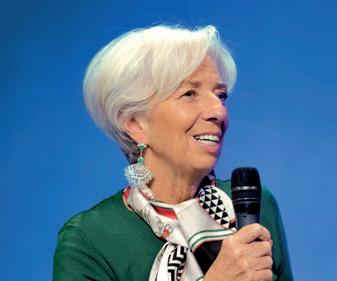













DIGITAL
PLATFORM APRIL 4 / JULY 4 / OCT. 12 INTERVIEW SERIES P AR IS FI N TE C H F ORU M VI DE O S BIMONTHLY FROM MARCH SEASON2 #PFF FINTECH FOUNDERS podcast FALL
CONTENT &
WOMEN IN FINANCE P AR IS FINT EC H F O R U M Lunch OCTOBER 10 n e t w o r ki n g p a r t y PARIS FINTECH NIGHT T h e b e s t 2 02 3 Fin& T e c h MAY 30 P A R IS FINTEC H F OR U M DE BAT E & DINN E R NOVEMBER 28
∞ Networking 10 0 CEOs on stage 50 0 Participants 4 0 Countries Paris ∞ Networking 10 0 CEOs on stage 50 0 Participants 4 0 Countries Paris ∞ Networking 10 0 CEOs on stage 50 0 Participants 4 0 Countries Paris ∞ Networking 10 0 CEOs on stage 50 0 Participants 4 0 Countries Paris ∞ Networking 10 0 CEOs on stage 50 0 Participants 4 0 Countries Paris
A tipping point will soon be reached by the industry, whereby every extra pound spent on compliance will have no additional impact on effectiveness. No one –not industry, not government, not society –
Heroes and villains: The UK’s fincrime debate
Read that the annual cost of financial crime compliance for UK financial services firms is estimated at £34.2billion, and you may raise an eyebrow. Learn that this equates to three-quarters of the UK’s annual defence budget (£46billion in 2022) and you’ll be scraping your eyebrows off the ceiling.
Hats off to the researcher at LexisNexis Risk Solutions who thought to draw that comparison in the firm’s most recent financial crime compliance report. It’s an apt one, given that UK Finance has
labelled rising fraud a ‘national security threat’, a statement endorsed by the National Crime Agency (NCA), which added: “There is a realistic possibility that the scale of money laundering impacting the UK annually is in the hundreds of billions of pounds.”
The UK economy is heavily dependent on its financial sector, yet the industry has developed a reputation for being less than scrupulous when presented with foreign money – even the government acknowledges that London is a laundromat for foreign money trying
to dodge the tax system or elude serious crime fighters (or both. Meanwhile, the Social Market Foundation named the UK the ‘card fraud capital of Europe’ last year, with 134 card frauds per 1,000 people, compared with Germany’s 15.

A shocking 41 per cent of all crime against individuals in England and Wales is fraud – and yet the vast majority of crimes will never be prosecuted, a House of Lords committee report said last year.
In light of this reputation, the NCA rightly warns of criminal and regulatory penalties – imposed on UK firms from the



REGULATION & TRUST: COSTS AND BENEFITS
TheFintechMagazine | Issue 28 ffnews.com
can afford for that to become a reality
LexisNexis Risk Solutions, True Cost of Compliance 2023 Report
40
Eddie Vaughan from LexisNexis Risk Solutions, Jim Winters from Nationwide Building Society and David Callington from HSBC ask if it’s time for a new approach to fighting economic crime
US or EU – and even the withdrawal of major financial institutions from the UK.
Seen one way, the eye-watering compliance costs shouldered by UK firms are a sign that these issues are being taken seriously. But you could also pose the question: how can they be spending so much, and achieving so little?
“It’s multifaceted,” says Eddie Vaughan, sales director at LexisNexis Risk Solutions, the data-driven solutions firm. “Figures suggest that we are actually no more effective now than we’ve ever been, although there’s no definitive measure.”

The LexisNexis Risk Solutions report found that financial services firms spend an annual average of £196million each on financial crime compliance, with retail and commercial banks leading the spending, at around £264.4million and £241.2million respectively. Costs are felt most keenly by smaller firms, whose compliance budgets represent around two per cent of their total revenue; for larger organisations, it’s 0.37 per cent. Most significantly, total annual spend on compliance is up 19 per cent on 2020 figures – and looks set to increase by a further eight per cent over the next three years.
So what are banks spending the money on? Mostly, it’s people, says Vaughan. “Staffing costs in any organisation are going to be a big driver; in the report, we identified that at around 61 per cent.”
But he adds: “The study shows that investment in technology and people are both rising. That does suggest that the underlying strategy and investment in some firms may be fundamentally wrong.”
LexisNexis Risk Solutions covers fraud prevention, identity verification, due diligence, and KYC, many of them supported by big data. Where it has seen an overall slight increase in money spent on technology and a decrease in that spent on people, there’s been ‘much more return on investment’, says Vaughan.
Jim Winters is head of economic crime at Nationwide Building Society and David Callington heads up HSBC’s fraud team and sits on the Advisory Board of Cifas, the UK’s fraud prevention community. For Winters and Callington, financial institutions have no alternative but to increase spending on both.
“Even if the cost of mitigating economic crime is rising, it’s always a strong business case,” says Winters.
Part of that cost-benefit analysis is the catastrophic consequences of loss of faith in the financial system, adds Callington. Every heartbreaking victim story erodes the trust at the very core of a bank’s business model.
“Trust is an intrinsic part of banking, and we shouldn’t lose sight of the customer at the heart of this,” he says.
From the banks’ perspective, both Winters and Callington agree that the technology is already mostly in place – it’s just that it is struggling to keep pace with the fraudsters.
“There was a time when we saw more new approaches becoming available for banks to select, but there isn’t that much that’s new anymore,” says Winters.
“Most large firms use similar technology, including some payment profiling, some behavioural profiling, some biometric profiling, some device insight, and whatever other contextual information you can bring in. You supplement that with good people,
“David’s right” agrees Winters. “This is where we’ve been taking a ‘low-fi’ approach, if you will. All firms invest v ery, very heavily in all sorts of layers of technology, but we’re finding that, in this push for digitisation and everything instant and real-time, some of the controls we used to use aren’t sufficient to ‘break the spell’ in APP. That’s a corny phrase but very accurate when it comes to scams driven by social engineering.
“What we’re finding is that the bad guys, like any other kind of business model, are reinvesting their profits heavily in good quality people. So at Nationwide, we do two things. First, we make sure we invest in humans, as well as systems, so that we can have meaningful interactions with customers and break that spell, because we find that automated approaches are not effective.
“Second, we provide what we call our Scam Checker Service, which is something we publicise heavily, because we want our customers to call us before they carry out a transaction, and we’ll tell them whether it’s genuine or not.”
Losses to APP fraud skyrocketed in the UK in 2021, overtaking losses from card fraud for the first time, although the latest figures from UK Finance show a 17 per cent decrease in APP fraud losses in 2022, down to £485.2million.
with very capable data scientists. There’s a place for machine learning too, but not as a standalone tool.”
NEVER-ENDING STORY
While criminals can up sticks and migrate to new methodologies on a whim, banks have to keep the old holes plugged while racing to address new ones.
”Over the last few years, especially in the fraud space, banks have invested in technology, in terms of unauthorised access,” says Callington. “Now the bad guys have gone back to social engineering, which is why we are focussing on human intervention again.”
Callington’s talking about authorised push payment (APP) fraud, a methodology that tricks victims into making a bank transfer to the account of a fraudster in the belief that they are a legitimate payee.
This is a methodology that exploded onto the scene during the pandemic, so it’s encouraging that banks’ mitigation techniques, like those described by Winters, appear to be working.
“What’s absolutely clear is that with certain areas of fraud, particularly APP, the threat is increasing,” agrees Vaughan. “It’s becoming ever more complex, and because of the victim impact, it’s always going to attract higher interest, including from regulators and government. I agree there isn’t one silver bullet to solve this problem; it’s actually a multi-layered approach that combines both technology and individuals. So, how can we develop technology that enables organisations to identify when there is a true risk?
“We’ve been doing a lot of work around the integration of behavioural biometrics into our device authentication capabilities. So, for example, where we have a customer who might be part of an APP scam, how can we identify if that customer is under pressure?

ffnews.com Issue 28 | TheFintechMagazine
41
Investment in technology and people are both rising. That does suggest that the underlying strategy may be fundamentally wrong Eddie Vaughan, LexisNexis Risk Solutions
“Is the way in which they’re interacting with their devices not the norm, and would that suggest an element of risk? At each and every point of that customer interaction, there are different treatment strategies that need to be instigated.
“That might be technology, but also it may be that human touch. Being able to speak to an operator at a bank to ask questions is fundamentally important, too.”
FIGHTING THE GOOD FIGHT
LexisNexis Risk Solutions has built out a digital intelligence network through which 96 billion transactions are processed annually, and nine billion active devices are identified.

“That richness of insight, through the consortium model, and that ability for all regulated entities that use some of our products to see that insight of both good and bad information and intelligence to establish trust is key,” says Vaughan.


While no one in the industry is putting their heads in the sand, the LexisNexis Risk Solutions report, which surveyed 300 financial services professionals, found that only one in six believe the UK financial sector’s collective efforts in fighting financial crime is ineffective, and the vast majority
under the fraudster’s spell, and that’s been driven by some interactions elsewhere within the ecosystem,” explains Callington.
“We need to look across the ecosystem, at the telcos, the social media companies, the online marketplaces, where this fraud is originating. So, it’s not a traditional bank or fintech challenge; it’s an end-to-end challenge, across the ecosystem. The challenge is breaking the spell.”
This touches upon a broader debate in government: how to legislate to protect UK citizens from online harms without alienating Big Tech and stifling the UK’s innovation scene. As the Online Harms Bill approaches its debut in parliament, banks are continuing to push for online scams to be included in the legislation.
Meanwhile, in May, UK-based business banking platform Tide called on the government to tax social media firms and
financial services. We do a heck of a lot, and we’re collectively investing hundreds of millions of pounds every year into prevention, but we can’t do it on our own.”
It’s clear that legislation will be required to establish a broader community of fraud fighters. But an anonymous respondent quoted in the LexisNexis Risk Solutions report makes an important point: “I think we have too many bits of legislation and it’s like putting another room on your house… it gets to the stage where you need to knock down the house and start again.”
As the regulation debate rolls on, a tension is developing between consumer protection on the one hand, and innovation on the other. For banks, that
believe their organisation is helping to tackle the fraud epidemic. But it’s a lonely fight. While fraud makes up roughly half of all UK crime, specialist economic crime fighters represent only around one per cent of police resources.
When UK Finance conducted an analysis of more than 59,000 APP cases earlier this year, it found that three-quarters of online fraud cases originated on social media. Yet banks have been handed the lion’s share of the responsibility to mitigate financial crime, and take much of the accountability when things go wrong.

“By the time the customer comes to the bank to make the payment, they’re already
City to the Isle of Dogs, even if the proposed levy is yet to generate any support from lawmakers.
“There needs to be more collaboration,” agrees Winter. “The new frontier will be in bringing the insights together from across these different industries, that all have a part to play. If financial services is the focal point for all the controls, you’re effectively making financial services the gatekeeper for all economic crime prevention globally, which isn’t right.
“That’s probably why you see scam losses growing, because you can’t leave it to
tension is drawing a new line between instant, seamless experiences and authenticated safe services.
In Whitehall, the Online Harms Bill is likely to tread on toes across the private sector. WhatsApp owner Meta has already threatened to pull out of the UK if the bill goes through in its current form. Expect similarly hard-nosed responses should Big Tech be drawn into sharing the costs of fraud prevention.
But, unless the siloed approach to financial crime compliance changes, the LexisNexis Risk Solutions report concludes: “A tipping point will soon be reached by the industry, whereby every extra pound spent on compliance will have no additional impact on effectiveness.
“No one – not industry, not government, not society – can afford for that to become a reality.”
42 REGULATION & TRUST: COSTS AND BENEFITS TheFintechMagazine | Issue 28 ffnews.com
We need to look across the ecosystem, at the telcos, the social media companies, the online marketplaces, where this fraud is originating
David Callington, HSBC
If financial services is the focal point for all the controls, you’re effectively making financial services the gatekeeper for all economic crime prevention globally, which isn’t right… We do a heck of a lot and we’re collectively investing hundreds of millions of pounds every year into prevention, but we can’t do it on our own Jim Winters, Nationwide Building Society


or
Is Secure Customer Authentication just a sticking plaster for a patient that’s bleeding out? Linda Weston, MD and Head of Core Products for Barclaycard Payments, Andrew Shikiar, Executive Director of the FIDO Alliance, and Quintin Stephen, Global Business Lead, Authentication at Giesecke+Devrient discuss vital signs and possible interventions
More than a year after Strong Customer Authentication (SCA) became a legal requirement for digital payments in the UK and Europe, the wrangle over how to reach the holy grail of perfect balance between security and usability rumbles on.




Against a background of global payment card fraud that is expected to rise to a staggering $49billion by 2030, the need for extra security around card payments closer to home was highlighted by research based on European Central Bank data, published in 2022.

Analysis by the Social Market Foundation found that the UK had the highest bank card fraud rate in Europe, with 134 card frauds per 1,000 people in
2019. The cost of card fraud per 1,000 people in the UK was put at more than £8,800. By contrast, France saw 115 card frauds per 1,000 people, Spain 37, Italy 19, and Germany only 15.
The vast majority of fraudulent transactions (84 per cent) in the UK involved the card details being used without the physical card being present, pointing to the rising incidence of malware and phishing scams to steal the information.
Secure Customer Authentication is a requirement under the European Union’s Payment Services Directive (PSD2), adopted by the UK ahead of Brexit, and it relies on using something you know, something you have, something you are, to validate a user’s
REGULATION & TRUST: SCA
TheFintechMagazine | Issue 28 ffnews.com 44
identity. Banks are now compelled to use two of those values to verify online payments in what is known as two-factor authentication. The industry standard for authenticating card payments is known as 3D Secure.
The principles of such a multi-factored authentication (MFA) system are starting to be taken up globally. But, despite SCA coming into force in the UK in March 2022, research by Adyen among 500 senior retail decision makers a year on found that more than one in 10 (13 per cent) had still not adopted it, leaving businesses vulnerable to FCA penalties for non-compliance as well as risking losing business as a growing number of issuing banks are declining non-compliant transactions. So why the resistance?
Well, almost a third (32 per cent) of those questioned by Adyen also reported that conversion rates have fallen since SCA came into effect.
It all comes back to that aforementioned holy grail: how to provide a solution that is secure but seamless: make it too difficult and customers will abandon transactions, make it too soft and you risk losing customer confidence in completing transactions.
For its part, Barclaycard Payments, a top payments processor in the UK, has developed a fraud screening process called Barclaycard Transact, which uses AI and machine learning to assess transaction risk levels in real-time. Transactions that are deemed low risk use an exemption under PSD2 which allows customers not to take extra verification steps.
“The biggest challenge facing the payments industry right now is how to balance fraud risk and the customer experience, within the construct of regulation,” confirms Linda Weston, MD of Barclaycard Payments.

“With analysts predicting that payment card fraud is expected to rise from $28billion globally in 2020 to $49billion in 2030, merchants need to act now to protect their future profits and their customer loyalty.
“Retailers must safeguard themselves from cyber fraud with advanced protections, and really utilise technology that does exist in the payments industry, such as Barclaycard Transact. We control and help to manage that process,
minimising the risk of fraud and declines for merchants. Businesses need to provide that smooth, secure, painless payment experience for customers, and this is especially important online.
“Payments providers can really help businesses to thrive, by creating smart, cost-effective payment solutions, that keep customer experience strong and simple. There are some great innovations, and I think, as technology has evolved, machine learning, artificial intelligence, all of those items are combining in order to provide a much stronger capability to detect fraud up front, rather than relying on processes, post the event happening.”
THE MAGIC TOUCH?
The FIDO Alliance is an open industry association with a mission to help reduce what it sees as a global over-reliance on passwords – a key vulnerability to fraud – and develop simpler, stronger authentication. With PayPal among its co-founders in 2012, its ranks now include more than 300 members, including big techs Microsoft, Amazon, Google, Apple and Facebook.
gesture, two-factor authentication, which is possible through biometric sign-ins based on FIDO [Fast Identity Online – a set of technology-agnostic security specifications for strong authentication].”
The rapid advance in the use of biometrics such as fingerprints on smartphones has already had a huge impact on the payments industry. Indeed, recent research by Barclaycard Payments shows that digital wallets now represent 30 per cent of all transactions in the UK, outstripping contactless in-store payments (24 per cent), conventional card payments online (21 per cent) and cash (17 per cent).
That’s particularly significant for retailers, as data shows customers forgetting their passwords is a prime cause of cart abandonment and that even those who accept the invitation to reset their passwords spend less.
Shikiar believes there is already a quantum shift at play.
“Ultimately, I think the conversation is shifting from bottom line, which is your fraud prevention, to top line, which is revenue creation,” he says.
One of the Alliance’s large e-commerce members has found that about 15 per cent of its customers cannot remember their passwords when they sign in.
“And we know there is around a 50 per cent shopping cart abandonment rate for people who don’t know their passwords. That’s a huge opportunity loss,” says Shikiar. “Furthermore, those that actually take the time to do a password reset spend less money. So, with a better authentication method, if we can move the needle on that from, say, 85 per cent signing in to even 86 per cent, that’s a huge top-line benefit.”
FIDO Alliance’s executive director Andrew Shikiar believes biometrics – a technology championed in its standards – offer a superior, safe and seamless customer experience.

“I think we’ve seen some challenges, frankly, with methodologies for two-factor authentication which takes the user out of the transaction flow, perhaps seeking a PIN, or an email, or message, or juggling between devices. That is suboptimal,” he says. “To best aid commerce, we need to find solutions where you have a single
That said, research commissioned by FIDO Alliance, found around 30 per cent of people are reluctant to give up password authentication because they mistrust biometric technology.
A lot of that comes down to education – or lack of it – by the banks, says Shikiar.
“People see a thumbprint to sign in and mistakenly think ’no way am I going to give my thumbprint to my bank’, even though they’re not – the thumbprint is staying on the device. So, while I think biometrics will evolve, consumers at large will need to be educated, and become more comfortable with them.
ffnews.com Issue 28 | TheFintechMagazine 45
With analysts predicting that payment card fraud is expected to rise from $28billion globally in 2020 to $49billion in 2030, merchants really need to act now to protect their future profits and their customer loyalty Linda Weston, Barclaycard Payments
‘
“The cautionary side of this is that it’s very important that service providers and industry protect the integrity of biometrics. This is why we think it’s so important to do everything on device, where the risk of a biometric breach is eliminated, which will help instil further confidence.”
Weston also sees the case for the increased use of sophisticated biometrics.
“The growth in smartphones use has brought biometric authentication to the masses and made it a really normal experience for consumers, which is always super helpful,” she says. “And there are many forms of biometrics – behavioural biometrics is another key area that can be used to support authentication methods.
“Part of the challenge, though, can be that it can take time to build some of those biometric profiles. That means that you have to couple biometric authentication with other forms of authentication in order to remain within the framework of the regulation, and also to protect yourself, and your consumer from potential fraud.”
Quintin Stephen, of security technologies provider G+D, says banks have been slower at adopting biometric technology because there was ‘a concern that you

says partnerships are vital in the future development of payments authentication.
“The whole reason for authentication is because of risk, fraud, and compliance,” he adds. “One bank or one financial institution is not competing against another when it comes to fraud and risk. So, it needs an ecosystem approach because the weakest link is what will get attacked. Partnerships are critical in managing the end-to-end lifecycle of a transaction, as well as how users interact with the system.”
Shikiar strongly agrees: “There is no competitive advantage to isolating yourself. So we’re really looking at security and authentication by community, building best practices, building open standards and common flows, to allow for more secure user authentication.”
In that case, are the guns of the world’s payment regulators being pointed in the
we at the Alliance have been introducing lately is a passkey, which is an alternative to passwords as a primary factor. It provides MFA-type capabilities in a single gesture, possession-based authentication, and is supported by Apple, Google, Microsoft, etc.
“Regulators need to adjust their view on authentication based on these new capabilities. Once the focus is taken away from bolstering passwords, we can actually start solving the problem. And so I’d like to see regulation start to embrace more modern means of authentication that exist today, beyond just layering added
would lose your customer along the way, by changing the way you were authenticating’.
He says, though, that ‘if you add a convenient way of authenticating to the convenience of being able to shop on your mobile device, that only leads to a massive increase in transactions’.
“So merchants obviously find that very attractive,” he says.
As global business lead, authentication at G+D, which works with more than 130 central banks and more than 2,400 commercial banks, as well as all the major payment schemes worldwide, Stephen

Thumbs up: FIDO Alliance members back single-gesture, possession-based authentication

right direction? Shikiar believes that, while regulation has undoubtedly improved security, there remains a big and fundamental challenge to be overcome.
“If you look at PSD2, and all the regulations around authentication, a lot of them are fixated on solving a problem that’s fundamentally tied to the primary factor of authentication that we’ve had for 60 years,” he points out. “Passwords are the problem. Passwords lead to data breaches. Passwords can be hacked. I could guess your password. I could steal your password. I could even steal your SMS one-time password. Any sort of knowledge-based credential can, and will be stolen.
“Two-factor, three-factor, multi-factor authentication – these approaches are certainly stronger than passwords alone but, ultimately, they’re band-aid solutions to address the flawed primary factor. What
factors on top of a flawed first factor, on top of the password.”
Weston takes a more cautious view, saying: “At this stage, we’re a year into the regulatory requirements for PSD2 around authentication. I think we need to give a little bit more time, to really see how that embeds, before we can form a strong frame of view as to what that future evolution could or should look like.”

Stephen raises another issue: that global regulators are not in agreement over how identity verification should be tackled.
“I think this is the biggest challenge,” he says. “PSD2 covers the EU, but there are many markets out there that have varying degrees of regulation, or no regulation. This is a big challenge, especially for banks that operate across multiple countries. The multitude of regulations out there are not really in lockstep – I’m not saying they have to all follow PSD2, but PSD2 is definitely the flagship when it comes to regulation.
“I agree, though, let’s not put another band-aid on the problem when it comes to authentication. Let’s go back to the fundamentals of what this regulation must drive.”
46 REGULATION & TRUST: SCA TheFintechMagazine | Issue 28 ffnews.com
Risk and fraud are not competitive issues… partnerships are absolutely critical in managing the end-to-end lifecycle of a transaction, as well as how users interact with the system
Quintin Stephen, Giesecke+Devrient
If you look at PSD2, and all the regulations around authentication, a lot of them are fixated on solving a problem that’s fundamentally tied to the primary factor of authentication that we’ve had for 60 years, which is the password. Passwords are the problem
Andrew Shikiar, FIDO Alliance


Ohio’s Economic Development Corporation

If Ohio isn’t on your destination list, it should be, says the state’s fintech flagwaver Ron Rock. And fellow Buckeye Jim Marous tends to agree!

Among its many claims to fame, Ohio is the birthplace of rock’n’roll – music that didn’t just take the world by storm, but changed the attitudes of an entire generation, breaking down social barriers and promoting collaboration.
Back then, the so-called Buckeye state was one of America’s industrial furnaces, largely built around the car industry; today it’s a financial powerhouse, ranked the fourth largest financial services economy in the US.


Legacy institutions like US Bank and JP Morgan loom large. But then there are the fintechs, the rock’n’rollers of their day, agitating for change and livening up the status quo. They sit alongside tech giants contributing to the digital economy, like chip-maker Intel, which recently committed a mammoth $20billion to build a manufacturing mega-site locally.
Setting the rhythm for this dynamic ecosystem and helping the members find their partners, is the fintech and financial services unit of the state’s private economic development body, JobsOhio. It was, uniquely in the US, spun out of state ownership with a commercial revenue stream strapped to it – it manages the state’s lucrative alcohol distribution franchise. Heading
up the unit is Ron Rock, a highly-driven executive who spends most of his waking hours extolling the virtues of Ohio as a base for startups and scaleups around the world. Who better to interview him, we thought, than fellow globetrotting Ohioan, fintech influencer and publisher of The Financial Brand, Jim Marous.

JIM MAROUS: What is JobsOhio – and how come it’s in the liquor business?


RON ROCK: JobsOhio is Ohio’s private non-profit economic development organisation. We privatised about 10 years ago to become extremely resilient to economic challenges like recessions. Typically, when states are going through a recession, and their tax revenues are down, the first thing to go is economic development. So, we decided we needed to come up with a different model... and now we own and run the state’s liquor business, and the profits all go to economic development.
I’m responsible for one of nine sectors that JobsOhio is focussed on. My colleagues and I are all looking for international companies, foreign direct investment. When it comes to fintech and insurtech specifically, there are a lot of organisations innovating well beyond where we are in the States, and I’d love to
bring some of those companies to Ohio. So, when I go to events – be it in London, Amsterdam, or France – I’m highlighting the ecosystem that we have here.
In 2019, we created the JobsOhio Growth Capital Fund, which gives us an equity stake in a portfolio of earlier stage companies. There are tonnes out there that I want to put in that portfolio!
JM: I was born in Ohio and I live here now, but it tends to be seen as a ‘flyover state’, right? Is that a challenge for you?
RR: It’s true that people tend to focus on New York and California. The earlier stage companies especially think, ‘I have to be close to the money’, or, ‘I have to be close to this large city’. But I think Ohio’s finally shedding that reputation of the Rust Belt, or the flyover state.
We’re making a name for ourselves, with our three Cs: Cleveland, Columbus, and Cincinnati. We have a healthcare cluster in Cleveland, a lot of startups, banks and insurance companies in Columbus, and banks and insurance companies in Cincinnati, too. There are innovation centres in all of those cities.
Then there’s the talent: 40,000 tech graduates a year from each university – Ohio State University, University of Cincinnati, and Cleveland State.
49 FINTECH FOCUS: JOBSOHIO
ffnews.com Issue 28 | TheFintechMagazine
There are lots of community colleges, too, and we’re changing how education is attained, by working with educators on developing micro degrees and other training programmes, which can be very specific to tech-driven jobs.
Going back to location, remember it can be more of a challenge to turn a profit in those high-cost cities I mentioned; the cost of talent is going to be higher because the cost of living is higher. I’m talking a third of the cost in Ohio, and about a quarter of the cost in rental expense. So, when you take those expenses out of the equation, or at least reduce them, you can get an earlier-stage company to profitability a lot quicker in Ohio than you can on the coast. And we definitely have a friendly business climate – we don’t have any state corporate income tax for a start.
Another thing to note is that we have 50 different regulatory bodies in the United States, which I think turns a lot of people away. But in Ohio, the attitude of the Department of Insurance, for example, is ‘let’s have a conversation about what you want to do’. We've also just launched a financial regulatory sandbox, so it’s all about making it easier to do business.
JM: We know that, in tech jobs in particular, there’s been a huge trend towards remote working. Has that affected Ohio’s pulling power?
RR: Remote working is a double-edged sword for us. People aren’t buying a building, or building a building anymore; they’re being very hybrid, very virtual.
Typically, as I said, people want to operate in Silicon Valley, for instance, to be close to the investors. Then they realise they can get tech talent in pockets that they haven’t been dipping into before. So, we have people here working for Google in California, for example. But that works the other way, too.
There are 240,000 other individuals in
the state who are working in financial services, so it’s not just about pulling talent. If you have a presence here, you’re also part of a community where innovation breeds innovation – you’re incubating ideas, and you have a lot of people doing
the same thing, and wanting those types of new, innovative solutions.
JM: There was a lot of noise around Intel arriving in Ohio. Does its presence here work to your advantage?
RR: I feel there’s going to be a halo effect to Intel’s arrival because it’s going to create a couple of thousand jobs directly, but, indirectly, tens of thousands of jobs are going to be created and that means tens of thousands of people who need financial services. Even if a company isn’t a financial services company, it has to pay people, and it needs to get paid. Technology is needed for that and I could potentially meet a fintech company, or an insurtech company, that might help with that and other cross-sector opportunities.
There’s also been another effect. Prior to the Intel deal, when I was at an event, telling people about Ohio, they’d wonder where it
I think Ohio just has all the pieces of the formula that are necessary to attract businesses. And it’s my job to shout about it. People laugh… they say I’m everywhere! But I try to find platforms to get in front of as many companies as I can because my goals are to create new jobs, create new payroll, and secure capital investment by talking to the companies in Ohio, and also to the companies outside of Ohio who can be introduced to our community.
There are a lot of organisations that they can partner with here and we are known for being a test market. I think that’s a great selling point for a company that’s looking to scale into the States.
JPMorgan Chase has a large presence here, U.S. Bank too, as well as Nationwide – so lots of huge companies with large assets. You have legacy systems in insurance companies and in banking, and they are all looking to innovate. Western & Southern, for instance, a 135-year-old company, is partnering with Fabri, a new insurtech. That’s the epitome of the type of partnership we’re looking for because larger organisations might not be able to organically create innovative solutions.
was – sometimes you’d actually have to circle it on a map. After the Intel deal, they don’t wonder as much.

JM: You’re building an external ecosystem for financial services in Ohio, but individual companies, like Progressive, are also creating their own. How does it all fit together?
RR: Yes, there’s Progressive with Level20. We also have Grange, which has an innovation department, whom we’ve done work with, and they have another partner in Rev1. Nationwide has Nationwide Ventures. Fifth Third has an innovation team that I’m working with constantly. In terms of how it fits with what we do,
it just makes it more of a team effort in being able to comb the landscape, and make sure that, if there’s anything out there that any one of us isn’t seeing, we don’t miss it. We’re talking all the time.
So, when you’re thinking about getting into the ecosystem here, it could be for market share, or for a different customer base, or helping another organisation springboard to the next level. Whichever it is, there’s lots of opportunity.
JM: You’ve given plenty of sound business reasons for coming to Ohio. What’s the personal appeal?
RR: I work in the metropolitan area. But I basically live 15 minutes away – I have green grass, a nice house. I wouldn’t be able to afford that in another city.
And then there’s the people. In the Midwest, they’re very willing to help out. They’re going to answer the phone to you, they’re going to answer your emails, they’re going to be helpful to you.
I think that’s key, especially when you’re looking for partnerships. If you’re an insurtech or a fintech coming into the States, and you’re wanting people to answer your call, we’re definitely going to do that and be very genuine about it.
FINTECH FOCUS: JOBSOHIO
TheFintechMagazine | Issue 28 ffnews.com 50 Changing the business landscape: Ohio is no longer just a name on a map
You can get an earlier-stage company to profitability a lot quicker in Ohio than you can on the coast

BE THE CHANGE YOU WANT TO SEE
“The climate time bomb is ticking,” warned UN Secretary-General António Guterres at the launch of the latest International Panel on Climate Change (IPCC) update earlier this year. But we still have time to defuse if we act now, he urged – and that ‘we’ means everyone, including financial services.
Environmental, social and governance (ESG) opportunities and risks are becoming increasingly relevant for financial institutions as political, regulatory and consumer pressure grows around global warming and social inequality.
Making business operations sustainable on both these counts clearly has benefits for the world, but there’s evidence that it delivers better economic performance, too. Not least is an estimated $125trillion investment opportunity – the amount required for initiatives to mitigate and adapt to climate change globally, with roughly a third of that needed within the next seven years. So, are banks doing enough?
Launching Mobiquity’s A Global Benchmark For Sustainable Banking report late last year, Peter-Jan van de Venn, the company’s director for fintech, said: “While there has been some good progress on placing

sustainable banking at the top of the boardroom agenda, the report shows that there is still an issue with banks saying and not doing.”
That’s despite 129 of the world’s top financial firms, representing about 40 per cent of global banking assets, coming together under the UN-convened Net-Zero Banking Alliance (NZAM) and promising to align their lending and investment portfolios with net zero by 2050. Some, like HSBC, have set their own bar higher, with a target of 2030.
MIXED MESSAGES
Since the Alliance was launched in 2021, of course, we’ve had economic chaos sparked by the pandemic and the Russian invasion of Ukraine. It was against this background that the Mobiquity report, its second annual litmus test of banking boardroom attitudes in the UK, Australia, the US and the Netherlands, found evidence of foot-dragging.
Let’s take the UK, as an example. While all the UK bank chiefs that Mobiquity surveyed claimed sustainability is integral to their business strategy, 41 per cent still didn’t measure their environmental impact as part of sustainability targets. And, as van de Venn observes, if you don’t monitor and measure
your impact, how can you understand where you’re succeeding… or failing?
The report also found that greenwashing – companies making false or misleading claims about their environmental credentials – remains a systemic problem among banks everywhere, but among UK banks in particular.
Keeping a low-emissions flame burning for sustainability is hard when even the UK’s central bank has reportedly put its efforts on the backburner. In March, the Bank of England (BoE) announced plans to reduce spending on climate change work due to increasing cost pressures. Instead, it will redirect the cash to core functions such as financial stability, markets and developing a digital currency for the UK.
That’s in sharp contrast to the BoE’s strong emphasis on climate during Mark Carney’s tenure as governor between 2013 and 2020. Carney went on to become the United Nations’ Special Envoy on Climate and Finance, and while his successor, Andrew Bailey, continues supporting some initiatives, such as the Network for Greening the Financial System (a group of central banks and financial supervisors that aims to co-ordinate best practice on green
Banking reimagined: A committed transformation is required to tackle sustainability issues

52 SUSTAINABILITY: BANKING
TheFintechMagazine | Issue 28 ffnews.com
Is sustainability slipping down the banking agenda? Mobiquity’s Peter van
de Venn
urges them to keep their eye on the prize – being a brand with a purpose
finance and makes recommendations on banks’ roles in climate change), the tone at the top is now very different. In fact, the message the bank is sending is completely contrary to its warning just a year ago that banks and insurers that fail to manage climate risks as a ‘first order’ issue could take a 10-15 per cent hit to annual profits and face higher capital requirements.
Mobiquity’s survey of 602 C-suite banking executives across the four countries didn’t cover sustainability at the level of central banks, but its findings appeared to reflect a similar slippage in commitment.
“The intent is there, but we see there is still a way to go to actually implement,” van de Venn tells us, adding that there are two major factors that will eventually drive climate action within financial services.
“One is that regulation will change. Banks will be forced to work more on ESG. But there is another force. That is a new generation of consumers and employees who want to connect to brands that have a purpose – and ESG is, of course, having a purpose,” he says.
The UK’s Financial Conduct Authority (FCA) already encourages UK-listed companies to publish their net zero transition plans for financial years from January 2022 onwards. In the UK also, both the Financial Reporting Council and the Pensions Regulator joined the Treasury’s Transition Plan Taskforce (TPT) in March to motivate banks to make sustainable targets a reality. The TPT is expected to come up with a gold-standard framework for net zero transition plans for organisations in all sectors this year.
Running parallel with these is the mandatory requirement for climate-related financial disclosures by big banks, in line with the Global Task Force on Climate-related Financial Disclosures, which is at various stages of implementation across the world, including in the US where ESG is becoming a political hot potato in the run-up to the 2024 presidential election.

Despite all this activity, the Mobiquity report showed a perceived lack of universally recognised
regulation and enforcement among bankers was the greatest barrier to banks being sustainable in the UK as well as in Australia and the US.
In his contribution to the report, Dr Ben Caldecott, Director of the Oxford Sustainable Finance Programme at the University of Oxford, pointed out that: “Supervisors and central banks have not been universally impressed by industry efforts to date. And policymakers and wider societal stakeholders have been widely critical of the banking sector’s genuine commitment and authenticity when it comes down to meeting the net zero commitments made [at COP 26] in Glasgow.
show greener investment choices; use big data to measure the environmental impact of banks’ assets; and leverage big data scraping with smart decision-making tools to reduce management costs.
And while all that additional computing power, in itself, has an environmental cost: “Moving that to the Cloud is something that will also help banks reduce their carbon footprint,” says van de Venn.
He maintains that using technology in such a way can be good for the planet and good for business, citing the example of a Dutch bank that is working with Mobiquity on a programme that helps its clients measure and reduce their carbon footprint.
“If the bank can find a way to monetise that, or even use it to reduce costs, while reducing their and their customer’s carbon footprint at the same time, it makes for an interesting business case,” he says. The report urged banks to invest in not only the right commitments are genuine when many of the same banks making them collectively provided $742billion in finance to the fossil fuel industry in 2021, little changed on 2020.
“They argue that it is hard to believe net zero
“In sum, banks should expect greater scrutiny of net zero targets and their implementation, and this will be combined with a tougher and more sophisticated approach from supervisors on climate-related financial risk.”
So, for those who cited a lack of regulation as a reason for slow progress, it could be a case of ‘be careful what you wish for’. As van de Venn pointed out, though, while regulation is the stick, the carrot for change will continue to be customer demand.
“Banks have to understand the impact on their reputation and their brand, in terms of ESG. The question is, what can they do about it?” He believes much of the answer lies in technology.
The report outlined various alternative ways of reducing a bank’s own and others’ carbon footprint by using artificial intelligence (AI), advanced data analytics, tokens, and distributed ledger technologies (DLT). Individually and collectively, they can be used to analyse a bank’s portfolio on sustainability/ESG; measure the impact of green financial products; support consumers to buy sustainable products and
technology
‘but also an A-list team of talent to support the execution of sustainable strategies’. Transitioning to a sustainable business needs to be part of a bank’s culture, believes van de Venn.
“These are big institutions, so it will take time, but it is important that they create a culture of thinking that sustainability is not just a necessity because of regulation, or because it’s important to the bank’s brand. This is also about more than their carbon footprint; it’s about inclusivity. In the longer term, it will be a competitive advantage, because the next generations will focus more on brands with a purpose. You can’t start early enough serving that purpose if you want to have a [financially] sustainable future as a bank, too.”
The 2023 edition of Mobiquity’s Global Benchmark for Sustainable Banking will be published this summer.

53
ffnews.com Issue 28 | TheFintechMagazine
There is still an issue with banks saying and not doing
Keep your digital banking experience relevant for your customers
Customers’ expectations are changing and they are demanding more from banks than ever before. Discover what is globally available in digital banking app features and how to stand out from competition while delighting your customers with a frictionless digital banking experience.

Mobiquity helps clients to create and deliver customer-centric digital products, that maximise revenue and orchestrate effortless digital banking user experiences.


Set your bank apart from the competition!
www.mobiquity.com
M Stand out in a crowded marketplace
M Adopt latest technologies and innovations
M Enhance your customers banking experience
M Maximise revenue
INTERACTIVE GLOBAL BANKING FEATURES RADAR OPEN ACCOUNT MANAGEACCOUNT MANAGE FINANCES SAVEMONEY INVEST MONEY PAYOTHERPEOPLE GET PAID LOANMONEY C TCENNO & TCAPMI SGNIHTYUB & YAP B I L L S DIFFERENTIATORS DELIGHTERS MUSTS MUSTS DELIGHTERS DIFFERENTIATORS
DOWNLOAD RADAR
heat is on The
Sustainable, or green, finance and the demands of modern economies are sometimes uncomfortable bedfellows.
The huge investment needed to convert our existing industries, and alter the way that investment is structured to become more environmentally responsible, is undeniably a drain on resources at a time of testing economic conditions in Europe.
It’s popular to demand that the most profitable companies – many of which have benefited from current crises – take the lion’s share of the responsibility and bear the cost. But some of the biggest and most problematic polluters simply can’t afford to. Who are they? Homeowners.
Buildings account for 40 per cent of EU energy consumption, making them the biggest energy users in Europe. And they are responsible for 36 per cent of energy-related direct and indirect greenhouse gas (GHG) emissions, two-thirds of which can be attributed to residential properties, according to European Commission figures.

The EU’s hugely ambitious Green Deal – a set of policies that aims to make the European Union climate neutral by 2050 – wants to see buildings’ GHG emissions cut by 60 per cent, a decrease in general energy consumption of 14 per cent, and a reduction of 18 per cent for heating and cooling specifically.

And yet the International Monetary Fund in March predicted that a third of all European households could find themselves financially stretched by the end of 2023, rising to 45 per cent under the worst forecasts (who are also responsible for 40 per cent of mortgage repayments).
Not the best conditions in which to push forward with expensive measures to decarbonise housing stock, which could burden families to breaking point. That’s why lenders are being encouraged to incentivise and support them.
NINE NET ZERO TARGETS
ING is a global bank with a strong European base and since 2018 it’s adopted what it calls the Terra approach to steering the most carbon-intensive parts of its portfolio towards net zero by 2050.
Terra was developed in partnership with the 2 Degrees Investing Initiative (2DII), using its Paris Agreement Capital Transition Assessment (PACTA) tool, and it’s focussed on nine sectors that are responsible for most GHG emissions: fossil fuels, automotive, shipping, aviation, steel, cement, commercial real estate – and residential mortgages.
impact we have – through business travel, for instance – and we have a clear target.
“But where we have the most impact, in terms of CO2 emissions, is through the lending we grant to our clients. Using a science-based approach, we have identified nine sectors and have a clear view on how they need to change. We are making sure we foster the changes that are required in those various sectors to decarbonise their activities.”
By far the most contentious of the sectors that come within Terra’s scope is fossil fuels. Major oil and gas producers – whose profits have doubled since Russia began its war in Ukraine – and the banks who fund them have come in for sustained criticism. It’s something Castelnau is keen to tackle head-on.
“Yes, oil and gas is a particularly sensitive area and we are glad to be challenged on that front. I think society needs that kind of debate,” she says. “At the same time, as a bank, we finance the real economy, and we are also conscious of the impact bold changes may have on it. For the next 20 years, the world will continue to need oil and gas, so we cannot just step out.
In its 2022 climate report, ING revealed that it was on track to reach net zero by 2050 with five of these sectors, three were close, and aviation was a long way behind.
Anne-Sophie Castelnau, ING’s global head of sustainability, explains: “We, as a bank, contribute to CO2 emissions. We monitor and we reduce, year after year, our energy use as an institution, but also the

“It is a question of balance between our sustainability ambitions and energy affordability for people, ultimately, to be able to warm their homes, as well as security of supply. We have announced that we’re not willing to be involved in project financing for new oil and gas fields, but also we know that, for a while, we’ll need to continue to support that industry.
“In the meantime, we want to accelerate financing renewables, because this is where we need to ensure sufficient supply comes from in the future.”
ffnews.com Issue 28 | TheFintechMagazine
ING’s Anne-Sophie Castelnau explains how the bank is tackling one of the biggest polluting sectors in its lending portfolio… and it’s not
who you think
55
We finance the real economy and we are conscious of the impact bold changes may have on it
If fossils fuels is the most contentious, then mortgage lending is the most complex asset to tackle under the climate agenda. It’s also the single biggest risk sitting on ING’s book, with approximately €320billion in outstanding home loans, representing around a third of its balance sheet. That could negatively impact the bank’s metrics when it comes to achieving a good ‘green asset’ score under new EU reporting rules.
“In terms of exposure for ING, this is as big as our entire wholesale banking book,” says Castelnau. “We talk a lot about our wholesale portfolio, because this is the big piece that is very visible. But mortgages are a massive part that we are also tackling.”
A WORK IN PROGRESS
While institutions may well be sincere in wanting to avert environmental disaster, they are also under pressure to transform in light of reporting requirements that will inevitably influence shareholder sentiment.
Since the beginning of this year, an EU classification system (the EU Taxonomy) has given lenders criteria for checking if individual financed projects, such as a home loan or a home improvement loan, are ‘green’. Environmentally positive assets will count towards a lender’s published Green Asset Ratio (GAR) from next year. A recent European Banking Association sample of 29 EU banks calculated their average GAR to be in single figures. There’s a long way to go.
ING itself quotes the Buildings Performance Institute Europe (BPIE) when it says: “More than 95 per cent of EU buildings are currently not energy efficient (EPC below A) and the speed of renovation is low. Each year, only one per cent undergo energy renovation. This is too little to reach the EU’s climate ambitions, and shows the need to address the transition of the existing building stock.”
The variations within Europe are revealing. Intelligent home climate management company tado° examined 80,000 homes in 11 European countries between December 2019 and January 2020 and found that Norway and Germany had the lowest home temperature losses: the UK’s lost heat three times faster. The EU Building Stock Observatory points out that most residential buildings in the EU were built before the first thermal standards were introduced in the 1970s.
“We know what needs to happen here,” says Castelnau. “The big difference is the way we engage with retail customers. For wholesale banking clients, we have one-on-one conversations, and we can really understand their journey, and how they tackle CO2. For retail clients, we want to make sure we engage, but that’s not on a one-on-one basis.
“These days, more than half of our contacts are through digital channels, so we need to make sure we have the ability to inform customers and give them access to more products that help them to take action themselves, whilst giving them incentives in that direction.”
In 2019, the bank began introducing lower-interest green personal home loans for up to €10,000. In Holland, it offered customers discounts on ‘sustainable housing’ products and services via its online ING marketplace. They could also take advantage of a free home energy scan and an expert investment plan to upgrade their home.
At the time, about 55 per cent of the homes across all the bank’s mortgages had an Energy Performance Certificate (EPC rating) of D to G (the very worst) and its goal was to upgrade at least half of them to a C by 2022 ‘by making homeowners and homebuyers more aware and motivated to upgrade, while at the same time making the financing simply too good to refuse’.
INSIGHTS TO FUEL CHANGE
ING has learned a lot over the past three years, not least how tough it is to maintain that kind of ambition across multiple countries with different housing stock, different population engagement levels, variations in domestic regulation and different energy mixes in their grids.
In its 2022 Climate Report, the bank said: “While our products have shown the promise of change to come, we note that demand among clients is still not at the level required to drive the transition. We continue to call on governments to implement ambitious and consistent legislation that mandates transition milestones for residential real estate.”


ING now has Eco Mortgages for homes with the highest EPC ratings in most of its territories and is planning to roll out eco renovation lending products to customers in all its markets by 2025.
All of this, says Castelnau, is underpinned by striving for better knowledge of customers’ behaviours, which can give insights into their energy consumption.
“Even more visibility has come with last year’s launch of our carbon footprint tracking app,” she adds. “Developed together with the fintech Cogo, it gives insights into how their spending translates into CO2 emissions. Clients can get an idea of their CO2 footprint, compare themselves to what is happening in their local market, and also get tips on how they can adjust how they act. It’s a knowledge tool, and an awareness tool.
“In the future, we will see apps like these become a one-stop shop, where customers can see in real-time how their behaviour impacts the environment but also how their mortgage incentives respond to those behaviours.
“It’ll all be integrated to give customers a full picture of how they can ultimately lessen their negative impact on the world.”
56 SUSTAINABILITY: HOME LOANS TheFintechMagazine | Issue 28 ffnews.com
In terms of exposure for ING, this is as big as our entire wholesale
Tall order?:
The transition to greener housing still has a long way to go


We’re Putting Payments Under the Microscope Discover payments like never before Scan To Get Started © Copyright ACI Worldwide, Inc. 2023 INSIDE REAL-TIME Become a Real-Time Insider Expert insights Growth predictions Success stories Regional challenges Full report and data sheets
activist bank? The
Short of turning off funding for fossil fuels tomorrow, Martin Richards from HSBC, Clinton Abbott of SunTec and Alex Garkov at EcoVadis explore how banks can effect positive change in the global economy
100,000 businesses, the more environmentally and socially responsible are usually also the more profitable.
bringing that regulation to them, and it’s something they need to focus on, even at the very smallest end of the market.”
That’s the clarion call of HSBC’s Martin Richards, and underlines the huge ambition – and change – they must embrace.

With their continued investment in fossil fuels and other non-sustainable sectors, banks are regularly attacked for both perceived and real failures in switching to greener, more ethical investments. HSBC itself has been a high-profile target. But regulators, activists and stakeholders are all nudging them in the same direction.
And with mounting evidence that an ethical business is also a more profitable one, there’s a commercial incentive for banks to flex that moral muscle faster.
In its annual report in January, HSBC (then just emerging from a bruising sequence of events that dismayed investors and activists alike) identified ‘greenwashing’ as a corporate risk that might hinder its own and other banks’ access to capital markets. It had already followed Lloyds, another of the Big Four UK high street banks, in deciding to stop direct financing of, and offering advisory services to, new oil, gas and metallurgical coal projects.
Given that HSBC was one of the world’s biggest fossil fuel funders, that move in 2022 was widely seen as a signal that other financiers would find difficult to ignore.
Together, banks are, potentially, the single most influential force in the fight against climate change and for social justice – but not just because of their heft in the markets. Through routine lending decisions and their daily business client relationships, they have the power to alter the economics of corporate value.
The good news is that, according to a report published by EcoVadis and analysts Bain & Co in April on how ESG activities impacted the financial performance of
Not only did it find that ESG activities reduced carbon emissions, but also the companies that embraced them tended to have more diverse leadership and talent, the net result of which was higher profitability and revenue growth, customer satisfaction, and employee satisfaction.
However, it noted a big gap between the achievements of listed and non-listed companies, evidenced in the EcoVadis ratings they received. It’s among the latter that Richards believes there’s a particular opportunity for banks to do more.
“Large, listed companies have sophisticated plans to reduce their carbon footprint over time, whereas some of the small and middle-sized companies are just beginning on that journey,” he says.

Put simply, banks can provide two types of green corporate funding, says Richards. One is loans for businesses of all types and sizes to purchase and execute on their sustainability strategies, such as clean power, transportation and lower waste. The other is financing for climate tech companies, which could be early-stage venture debt financing or infrastructure financing for large projects. But what’s important with any of these endeavours is transparency, so everyone can be confident about a business’s ESG intentions and performance, and everyone can avoid allegations of greenwashing.
This is where an ESG ratings business such as Paris-based EcoVadis comes in.
Alex Garkov is a sustainable finance account executive for the firm. He says: “Most ESG ratings providers in financial services are focussed more on the larger corporates, the listed companies, and they’re usually using publicly-available information to produce their ratings, which they then sell as a dataset.


“But most SMEs will sell to larger companies, and they’re going to be in the supply chain of larger, publiclisted firms. Those listed companies are not only addressing their scope 1 and scope 2 [direct] emissions, they’re also looking at scope 3 [their supply chain], so small businesses have to decrease their carbon footprint not just for themselves but also so they can participate in the supply chain.
“That means, even if regulation hasn’t come to smaller firms yet, buyers will be
"At EcoVadis we’re focussed more on smaller businesses, and we work to produce our ratings by engaging with the companies directly to get access to their internal information and systems. This produces what we hope is an accurate rating, or indicator, of their ESG management and ESG performance over time.

“There’s a huge range of ESG ratings and there’s not a lot of standardisation within the industry,” he admits. “But there's certainly a role to play for different types of ratings, especially when it comes

58 SUSTAINABILITY: MAKING A DIFFERENCE
“The world’s economy is going to get restructured as we get closer to net zero and all banks have to be involved in this.”
TheFintechMagazine | Issue 28 ffnews.com
It’s a more holistic, qualitative way to help companies enhance, improve, and change their policies, which can have a real impact on the way that they are acting in the market
Alex Garkov, EcoVadis
to the risk of greenwashing. Because usually, the ratings providers are assessing a company independently, with no conflicts of interest.
“That’s the role I see ESG ratings playing in financial services; providing third-party verification of a company’s performance.”
At a macro level, focus has rested on specific, standardised KPIs for ESG, such as the EU’s Sustainable Finance Disclosure Regulation for investors that comes into force this year. EcoVadis’s focus on the micro level means it can go further than simply

rate a business – it can provide advice to improve their and others’ performance.
“It’s a more holistic, qualitative way to help companies enhance, improve, and change their policies, to have a real impact on the way that they act in the market,” Garkov says.
No bank or business can improve its ESG credentials if it fails to measure its performance – although,
ESG targets go further than a business’s own performance, directors can also assess the performance of partners and potential partners within their ecosystem and fulfilment chain.
UNDERSTANDING THE TASK
SunTec is a business solutions company that works with EcoVadis, providing banks like HSBC with pricing and revenue management solutions that include carbon calculators and offsetting programs.

Clinton Abbott, a senior vice president with the company, based in South Africa, says that data recording by banks is essential to drive change throughout the supply chain. In Africa, development finance institutions (DFI) have demanded improvements in the reporting standards of African banks, which has made them quantify their own ESG performance.
“There has been a very strong driver towards not only the environmental component of ESG, but also the social and governance elements,” he says. “But how do banks take the deliverables, from a board perspective, all the way down to a portfolio perspective? That’s the question.
“If you look at the products that need to be offered, the loan opportunities and credit lines that need to be supplied, how do you make sure that those loans are allocated to the right people?
zero future
surprisingly, a recent Mobiquity survey among 300 banks revealed that nearly half were failing to measure ESG performance against their own sustainability targets.
Crucially, Garkov points out, there should be no good or bad rating at the start, adding ‘the idea is simply to provide that transparency, as a baseline, to then benchmark performance in the future’.
Once a reliably transparent system of ESG measurement is in place, directors can determine whether their policies are being delivered at the coal face. And, given that
“Banks have always had a strong focus on credit risk but they haven’t worked to understand a client’s back-end operations before. How does their whole governance structure work? Are they doing the right thing? Do they run their company in the right manner? Ratings agencies, such as EcoVadis, can provide the transparency that helps a bank to better understand their customers. Examining the non-financial aspect means that, rather than simply relying on an industry sector code, as most banks do, they can truly understand what the organisation does. That allows banks to de-risk their portfolio.”
As one of the world’s biggest banks, HSBC has a target of achieving net zero in its own operations and supply chain by 2030, and in its financing portfolio by 2050.
It is two years into a five-year Climate Solutions Partnership with the World Resources Institute and WWF, which will see the bank invest $100million to scale up climate innovation ventures and fund nature-based solutions.
59
ffnews.com Issue 28 | TheFintechMagazine
Grasping the nettle: Banks are getting to grips with the challenges of a net
Advice and mentoring are very much part of HSBC’s overall strategy to reach net zero, says Richards, alongside the provision of funding.
He says: “There's our existing portfolio of over 1.3 million companies that we’re working with to transition to a net-zero future. Smaller enterprises typically don’t have huge teams to help them decarbonise so we’re taking best practices from our largest clients to our smaller clients, where it’s appropriate and industry significant.
“And, as those larger global companies try to decarbonise, we’re taking our climate tech companies, that have new technologies addressing hard-to-abate sectors, and introducing their technology to them. That
firms that, for example, don’t have enough capital to electrify their transport fleet, but where, over the life of the fleet, it would make economic sense for them to switch.
“With the evolution of technology and the cost curve, you can buy an electric car, or put a heat pump in place, and that would not only be good for the planet but also be good for your business, economically.”
WHAT’S IN IT FOR ME?
As banks seek to encourage ESG spending there has been the emergence of products with incentives that reward the customer. Since banks will be increasingly rated on the sustainability of their portfolios it’s a trend we’ll see grow with ever more imaginative carrots to go green, says Abbott.
“Take the example of a loan facility a bank puts down. Instead of looking at just the pay-off facility, the bank could offer an interest rate discount if the customer meets certain objectives,” he says.
bank are aligned, and everybody walks away with benefits.“
Abbott says banks have an opportunity to drive ESG by understanding their customers’ supply chains and resulting value chains. But they can go further than using their own financial products to incentivise and meet clients’ needs by sharing knowledge, building networks and, ultimately, ESG-focussed ecosystems.

“A customer may benefit from using solar power because there are tax benefits for using it, as well funding benefits, and banks can assist customers to work better with that,“ he explains. “At the same time, because, as a bank, you have the insights into that customer, you can start expanding to build an ecosystem between customers. The bank can give discount pricing, or free transactions, while growing that ecosystem and uplifting their own portfolio.”
Martin Richards, HSBC helps the climate techs scale and the large companies to transition.”

Richards says HSBC is focussed on financing the development of sustainable, scalable infrastructure such as wind farms, green batteries and utility scale solar.
“For the early-stage technologies, such as direct air capture or green hydrogen, there are a lot of lab-proven technologies that need to make commercial scale,” he says. “And we’re seeing a lot of capital being deployed in a blended structure, where you may have a venture capital company coming in, with a bank on top; you may have a government giving a grant, or a guarantee with debt financing on top.
“It’s both a race to deploy existing technologies as fast as possible and innovate new technologies as fast as possible… and then not take as long as we did in getting solar and wind out there.
“For our other companies, the non-climate tech companies, we want to finance
“So, if the customer reduces their carbon component over the next year by putting solar financing into their organisation, they get a two per cent reduction on the interest component. If they meet X, Y, and Z additional criteria, say they make $100,000 of payments through other mechanisms to meet zero-emission goals, they get a discount on that pricing, or they could be given a 50 per cent discount on Swift transfers, for instance.
“Because of digitisation, all of this is managed automatically – and there are tracking mechanisms happening in real-time now – it’s clear if a customer has met their targets. So, it’s possible to make sure the customer and the
Abbott, Richards and Garkov stress that joining the dots with effective ESG measurements, working together in ecosystems and gearing finance to incentivise ESG goals will be a key path
to reaching net zero and meeting the world’s commitment to contain global warming to 1.5°C.
Richards says: “Between here and there, every company, every bank, and every country is going to have to do more and it’s a huge opportunity.”
Realising it, however, goes beyond ratings, says Abbott.
“I think the more people talk about it, the more it becomes not just a nice ESG logo but something tangible.


“When you can physically see the difference you’re making as an individual, then you know you’re making a difference as an organisation.
“It’s not necessarily a dollars and pounds measure, rather it’s an acceptance that we all need to make a difference.”
60 SUSTAINABILITY: MAKING A DIFFERENCE TheFintechMagazine | Issue 28 ffnews.com
It’s possible to make sure the customer and the bank are aligned, and everybody walks away with benefits
Clinton Abbott, SunTec
It’s both a race to deploy existing technologies as fast as possible and to innovate new technologies as fast as possible… and then not take as long as we did in getting solar and wind out there
Call to arms: The clamour for change in our environmental behaviours will become irresistible














The Global FinTech Ecosystem. C onnected. BE AT THE CENTRE OF THE FINTECH REVOLUTION 6th-7th December 2023 ExCeL London SAVE THE DATE LEAD SPONSORS fintechconnect.com/events-london info@fintechconnect.com SIGN UP TO FINTECH CONNECT 2023 NOW! EUROPE’S ONLY EVENT FOR THE ENTIRE FINTECH ECOSYSTEM HEAR FROM 200+ INNOVATIVE SPEAKERS JOIN 3,000+ FINTECH LEADERS SPONSORS
Tropical cyclones are one of the most destructive natural disasters. According to Aon, over the last 10 years, they have caused in excess of $1trillion in economic damages globally, with less than 50 per cent of those damages insured.
This presents a major issue – and opportunity – for the financial services industry and insurance markets, and the clients they serve. The ability to accurately forecast the number, impact, and location of hurricanes, cyclones, and typhoons has always been very challenging, especially as they have grown in intensity due to climate change.
As a result, the financial services sector and re-insurance markets have developed a much greater need to understand climate risks. These businesses are reliant on a clear view of how weather systems are changing in an increasingly volatile climate, so they can prepare for the extent to which their physical assets, infrastructure, business models, and customers are exposed.

Not only does this help to inform insurers’ strategies around climate variability, but it improves capital management and relative volatility of global exposures, and helps to quantify and hedge risk in response to shorterterm extreme weather expectations.
Fortunately, through advances in technology, research, and the use of AI and machine learning, new solutions, such as those from Reask, are emerging to provide decision-makers with the data they need to confidently change their
assessment of potential catastrophe risks over multiple time horizons.
The weather does not see borders, which is one reason why the limitations of traditional natural catastrophe (Nat Cat) models, built region by region, are being challenged.
Fresh thinking, improved AI and machine learning, and increased computing power are now enabling experts to understand climate variability better than ever, including the potential impact of the frequency and intensity of natural disasters, worldwide.
Today’s climate models, with a more automated and scalable process, enable experts to get a more interconnected understanding of global climate risk. At Reask we have built robust algorithms to transform this climate model output into risk data that dynamically captures tropical cyclone wind variability down to a neighbourhood scale, over multiple time horizons.
Nevertheless, the ultimate aim is to have a consistent view, born out of one methodology, irrespective of where the exposure happens, from the South Pacific near Australia, to the north Indian Ocean, the Gulf of Mexico, or the Atlantic.
THE LEARNING CURVE
Traditionally, historical data and statistical modelling techniques have been used in models over the last 30 years to approximate the likely risk of future tropical cyclones.

Creating these models involves many PhD scientists building one model for one country at a time, then switching to another, or maybe region by region, with each of these models manually taking months or even years to build.
Further, while these models still have some value, they leave many questions unanswered, such as what happens when risks we observe hit new levels? What if they behave in ways that are different from what we have observed in the historical data? And how can we make a model aware that the underlying climate may be different to the historical data?
To successfully and accurately create one global model requires climate pattern extraction with a globally connected framework and machine learning approach. This involves embedding the latest climate knowledge into algorithms that allow the model to know the physics that underpin tropical cyclone risk and build risk distributions accordingly.

By looking into the atmosphere and, to a certain extent, the hydrosphere, we can now understand how the climate impacts the extreme perils that are phenomena of that particular environment.
Furthermore, we need to look at so-called pattern recognition often referred to as ‘unsupervised learning’. These are algorithms that can go through vast volumes of data and figure out what is worth using. Afterwards, human experts need to assess the data to make

62 SUSTAINABILITY: CLIMATE CHANGE
TheFintechMagazine | Issue 28 ffnews.com
Traditional models underestimate the role of climate as a driver of past events. Jamie Rodney, CEO of Reask, explains why a new approach, using climate-aware AI, is needed
sure we understand the physics being picked up, but it is close to a fully automated process.
A lot of what’s been done in the past has been by experts looking at data and picking up global patterns. The typical example would be the ENSO patterns, which cover things like water temperature. They are usually, however, very simplistic. Unsupervised learning allows us to use machine learning algorithms to do that job instead, faster and more accurately.
What we have found at Reask is that we gain much in terms of predictive skills, and we can trust the machine to pick up the right signals to speed up the process considerably.
How often this data is updated depends on what one is trying to do with the data and what part of the model is being looked at. The global climate products available from either the US agencies or the European centres are excellent; their data is available every month and provides the ability to look at hurricane activity in the coming season.
However, for tropical cyclone wind structure and what happens to the winds when they travel overland, new datasets are needed. At Reask, we use a weather forecasting model and run it at very high resolution on hundreds of historical cases. This has been the training data we use for machine learning.
Many firms will have invested heavily in Nat Cat models over the years, thus it is important to understand that their existing models still have value and can be integrated with the models and approach we are discussing.
Organisations can have a collaborative view of risk, and augment their existing models with this new, next-gen approach. For example, where firms don't have coverage in certain regions, these models can provide a consistent view across all territories.
One way to think of the operational side is that newer models, like Reask’s, answer questions that other models don't because of the global approach. A client can look at relativities in the long-term view of risk we have, versus a particular season in the Caribbean or US, for instance.
insurance coverage. This is a huge area of opportunity, and it is already plugging protection gaps, worldwide.
Beyond insurance, the climate-aware nature of our model is being used across operational risk and resilience to assess the impact of climate change on economic and operational resilience of companies and the investments they make.
We have also successfully provided operational forecasts for the ILS industry for four years in a row. Now including where we see more risk, including for hurricanes hitting landfall.
What we are discussing is new, breakthrough science. The market determines, in the end, what is an appropriate approach to take about assessing this risk, and that encompasses all of their internal risk appetite and approach to risk management.
Today, Reask’s model is being utilised across the climate risk and insurance value chain. The resolution and accuracy of the model is being used to underwrite insurance policies exposed to tropical cyclones more efficiently.
The global consistent nature and granularity of the risk data is being used to innovate the parametric insurance space, by allowing risk carriers to offer globally consistent tropical cyclone

Communication is vital and we are in regular exchange with decision-makers across the market to constantly inform others and evolve our methodology. It is a very transparent process. We also write publications that are peer-reviewed and we make that information available to them.
Managing tomorrow’s climate risk today remains a challenge; one that we at Reask are addressing. However, we are very fortunate that all our clients are sophisticated users of risk assessment, catastrophe modelling, and hazard modelling tools.
From ILS firms to reinsurance intermediaries and global insurers, the way they incorporate and utilise our information is varied and unique. The one consistent is how our clients are turning a climate challenge into an opportunity.
Winds of change: The use of algorithms will transform weather modelling
63 ffnews.com Issue 28 | TheFintechMagazine
Beyond insurance, the climate-aware nature of our model is being used across operational risk and resilience to assess the impact of climate change on companies and the investments they make

SmartStream CTO Roque
SmartStream and the expanding number of markets it’s opened the door on. AIR (artificially intelligent reconciliations) was just the start.
SO, WHAT DOES IT DO?
When SmartStream unveiled its Cloud-native, AI-driven software-as-a-service SmartStream AIR at Sibos in London in 2019, most of us hadn’t even heard of ChatGPT or had the vaguest idea what generative AI and large language models were all about.
OpenAI’s Generative Pre-Trained Transformer #1 had only been knocking about for a year at that point and wasn’t the head turner that it’s younger sibling #4 would turn out to be. Which is to say that things change mighty fast in the world of artificial intelligence – not just in terms of the technology’s capability, but in what it’s applied to.
SmartStream, a company that for decades had largely been focussed on automating reconciliations in trade processing, is testament to that.
Back in 2019, its management clearly understood that the AI being developed by its in-house team of specially recruited data scientists in its AI lab in Vienna, was the key to unlocking a whole new era – or should that be AIR-er – for the company. In 2020, it rebranded, adopting an infinity symbol as its logo.

Now, it’s becoming apparent just how impactful AI could be – for both
For Roque Martinez, the company’s CTO, AIR’s basic (which is not to say simple) task is to remove friction in a financial institution’s middle and back office processes.
“That, after all, is why AI, machine learning and robotic process automation, which all fall into this realm, have taken off – because organisations are looking to remove that friction,“ he says.
“In reconciliations, you want to take two files, onboard them quickly, have them reconcile and then whatever exceptions come out, you deal with them.
“With SmartStream AIR the point is that you don’t spend hours, days, months trying to build rules to reconcile those data sets. That’s what the product does. It says, ’we know what these things look like,’ reconciles the records and moves them on. There’s a significant reduction in friction because people aren’t doing it, machines are.“
It’s AI’s ability to spot patterns in real-time in data that are simply too large and complex for the human brain to handle, that SmartStream is now looking to leverage for other outputs.
“One of the models that we’ve been talking about especially is around cash and liquidity management,” says Martinez.

It’s a timely thought, given the domino collapse of Silicon Valley Bank, Signature Bank and First Republic in the US. There are accepted ways of measuring if a bank is healthy or not, some introduced after the great financial crisis to avoid a repeat of the failures seen then. The three liquidity indicators used by regulators and analysts are usually liquidity ratio (LiqR), liquidity creation (LiqC) and net stable funding difference (NSFD). If observers keep an eye on those, they should get a heads up on any bank in distress.
But, as recent events proved, that’s not always soon enough – and, for regular counterparties whose job isn’t to watch the numbers and are just sending or receiving funds from a bank that’s in freefall, there are sometimes no signs, other than word of mouth or Twitter jitters – which is why many were caught out when SVB came off the rails.
AI see the future
65 ARTIFICIAL INTELLIGENCE: BEYOND RECONCILIATIONS ffnews.com Issue 28 | TheFintechMagazine
Martinez reveals how the company’s significant investment in AI is taking it into new and surprising markets
As Martinez explains: “If someone starts funding every day, let’s say it’s 12 o’clock that they make their payments, and then it slips to 12.15, then 12.30, one o’clock… is there something in those events that is saying ‘this counterparty is starting to have some liquidity issues and maybe they should be shut off?’.
“Instead of a human saying, ’I just got a call from risk to tell us to stop making those payments’, is there something that could flash red on the screen that says, ’wait, don’t do anything’?”
Another model SmartStream is examining is more general in nature – the objective being to provide as much clean
The clarity of data: Natural language processing can sharpen-up anti-fraud measures

customers sign off on, so they can extract all of those fees for doing the trades,” says Martinez. “We can onboard these schedules much faster, and then get those savings to our customers, which then goes to their customers; if they’re paying less in fees, because they’re doing more transactions with a certain broker, both sides are getting the benefit.”
will return ‘here are possibilities’. Before, without that technology, it had to match or it didn’t. Now, it doesn’t have to match; it can just sound the same, because the AI will conduct phonetic searches as well as text searches. We have a bank in Asia, that we’re testing this with now.”
reference data for the markets as possible so that their own engines can produce better quality algorithms.
“If what goes in is garbage, that’s what comes out. If you have a lot of breaks because your identifiers aren’t correct, you need to get a provider, such as us, to give you clean data and ensure your algorithms work properly,“ says Martinez.
“SmartStream uses the three Vs. Data has to be verified, so it has to be data that we know is trusted from an organisation. There has to be value to that data – it has to be something that we know will help us get somewhere. And, finally, there has to be volume – it just can’t be one record, there have to be several records.”
It’s also starting to explore AI applications around its fees and expense management product. “One is to use it to understand and read the documents that
An entirely new area of work for SmartStream AIR itself could be in natural language processing for text reconciliation when compiling sanctions lists to reduce the likelihood, for example, of an individual or institution finding themselves on a list because a single letter has erroneously been mis-entered. It’s what Martinez refers to as ‘fuzzy matching’.
“While we were working internally, with AIR, and some of its offshoot projects, internally, we realised that text is a big topic of reconciliation,” says Martinez.
“The point is, we can use that technology not just for numbers, but also for text. We can do anti-money laundering, know your customer. When someone gives you a name to match against a sanctions list, you can ask the AI ‘is this person on any of these lists that we are aware of?’ and it
Looking ahead, Martinez predicts large language models and generative AI like ChatGPT will impact some areas of the financial services industry in a fundamental way.
““In my opinion, artificial intelligence is not going to be finding better algorithms. We’re there already. But, similar to what we’re seeing with ChatGPT, the way AI is
going to start changing finance is by processing data in a way that allows new securities and products to be put together. With technologies like GPT, you could say, ‘I’d like to have some kind of interest-type product‘, and the technology will say, ’here are the 10 ways you can do something like that’. That’s what this new technology is doing: using neural networks to make attachments to things that a human may not have thought of because we’ve never been able to put those neurons together.

66 ARTIFICIAL INTELLIGENCE: BEYOND RECONCILIATIONS TheFintechMagazine | Issue 28 ffnews.com
In my opinion, AI is not going to be finding better algorithms. We’re there already. But, similar to what we’re seeing with ChatGPT, it is going to start processing data in a way that allows new securities and products to be put together

 Organised By
Organised By
Tech billionaire Elon Musk has pledged to create a ‘TruthGPT’ to address the bias that has plagued machine learning and led to perverse outcomes for consumers. Meanwhile, the CEO of OpenAI, which created ChatGPT, has called on US legislators to regulate artificial intelligence.

So, given that AI is now an indispensable technology in financial services, how does the industry ensure it’s working to the benefit of everyone?
We put together a global panel of experts to find out. And we started by asking for a definition of AI…
That proved to be a tricky question. Ash Booth, a researcher in machine learning now working for HSBC bank, said that, despite AI being around for six decades, there still isn’t consensus among academics.
“A loose definition that many of us like to use is that it’s a field of computer science that focusses on the development of machines that can think, reason, and perform tasks that humans usually do. To do that, it encompasses different technologies, like machine learning, natural language processing, computer vision, even robotics. Generative AI is part of that subset: it refers to AI systems specifically that create new content, or generate new ideas, based on data they’ve been trained on, and a prompt that’s provided at the time of use.”
While generative AI is stealing all the headlines currently, there have been other major advances in more traditional areas of machine learning that are enabling better decision-making, improved automation, and more personalised customer experiences.

One of those is incremental learning, a machine learning method that is well suited for environments in which data


changes constantly, making it difficult for other models to keep up – in weather modelling, for example... or fighting fraud.
In 2021, payments solutions company ACI Worldwide received full patent approval for an incremental learning technology that had been developed specifically to give enhanced fraud protection for merchants and financial institutions, and which was embedded into its ACI Fraud Management suite. It’s designed to give the payments industry a fighting chance in a threat landscape
where the bad actors’ agile modus operandi, armies of well-remunerated data scientists and superior tech, challenge financial crime teams every day.
ACI’s Tanya Kopytina, took up the story: “Incremental learning allows artificial intelligence to
The future is now: AI is embedded into much of our daily financial lives
68 ARTIFICIAL INTELLIGENCE: PROGRAMMING
TheFintechMagazine | Issue 28 ffnews.com
continuously learn and adapt as new data comes into the system, so, in the fraud context, that’s as soon as new fraudulent patterns have been established.
“In the hands of ACI, it’s used to address a number of threats. The first one is in account takeover fraud where criminals gain access to the customer’s account or internet banking details, with the purpose of making unauthorised transactions.
“Another is card fraud. That could include card-not-present fraud, or card-present fraud, using a stolen or counterfeit card, which could be the result of online data breaches, some other point of compromise such as BIN attacks, card testing events, or ATM skimming.
“Last but not least is phishing and social engineering scams. But in all cases, the main benefit is that technology enables us to analyse large volumes of data in real
time, and to identify fraudulent patterns as they emerge in real time.”

A BIASED PERSPECTIVE
Beyond fraud detection, there is an ongoing debate, though, as to the inherent risks and advantages in incremental learning models, which highlights wider concerns around bias in artificial intelligence. Ash Booth highlighted some of them: “When you’re learning on the fly, as new data comes in, you have to be particularly careful about monitoring things like data bias or model bias in real time. That’s not to say it’s not possible, but you have to be very careful about that. Because the algorithm might start to focus too much on recent examples, or you’re just not detecting shifts in bias, that sort of thing.
“Another potential issue is ‘catastrophic forgetting’, which is where your model is focussing too much on that recent data, and can ‘forget’ important trends that it hasn’t seen for a while, particularly when new information and old information start to conflict.”
He acknowledged that there are ways to mitigate some of those downsides.
Tanya Kopytina explained ACI’s approach: “In order to enable the incremental machine learning technology for fraud detection, first and foremost we need to have the technological capabilities of a fraud detection platform to receive and process data in real time, but also be able to develop machine learning models within the same platform.
“Secondly, to mitigate data bias and ‘catastrophic forgetfulness’ we need to develop features more precisely and more accurately, as part of the model development process. We need to create dynamic features that would be capable to adapt automatically to the changes in fraudsters’ behaviour. When we put these features into the model, the model will be continuously retrained, in a natural manner, and fraudsters basically will be telling us how the model will develop and evolve over time.
“I think it will depend on a combination of technology, fraud, and data science expertise, to be able to apply AI for fraud detection, and ACI has patented its technology for the implementation of that solution.”
Gürer Kural from Rabobank believed that incremental learning was adding a lot of value to AI systems, but cautioned that, beyond fraud detection, there were inherent problems in applying it to other financial use cases: “When it comes to, let’s say, applying it to credit loans it’s trickier, because you cannot say to a customer, ‘your loan request is declined. But if you try tomorrow, maybe you will get it, because our AI system keeps learning!’.
“That’s something that we need to be careful about, because the financial environment, and the trust in the financial environment, is quite fragile, and we know how easy it is to break things.

“So, maybe we can adjust the use cases, and the learning frequency, according to the topic and use case. Because, as Ash mentioned – if you train something on its own data, it will favour its own data and then, once you lose control of the incremental learning, maybe it’s too late, and you will see a model that’s drifted away from its first course – and we don’t want to have model drift or ‘catastrophic forgetfulness.’”
One way to safeguard against such an eventuality and make AI accountable is through an obligation on developers to produce specific AI software engineering documentation that validates procedures and will help in identifying unintended bias and explain decisions that a machine is making.

OUR SPEAKERS
Tanya Kopytina is an experienced fraud consultant, based in Australia, with a specific interest in automation, advanced analytics and machine learning. She works with real-time payment software company, ACI Worldwide.


Gürer Kural is an analytics consultant at Rabobank, in the Netherlands, where he deals with strategic change and risk management. He’s currently involved in ethical and generative AI.

Ash Booth is head of artificial intelligence for the markets and securities services business at HSBC bank in London, working with the trading, sales, structuring, quant research and operations team in the bank’s markets business.

69
ffnews.com Issue 28 | TheFintechMagazine
and ‘catastrophic forgetfulness’ we need to develop features more precisely and more accurately, as part of the model development process
Tanya Kopytina, ACI Worldwide
There are well-known examples of groups of people discriminated against by AI, not because the programmer intended it, but because the data on which the AI was based itself obscured a bias. That results in a clear pattern of unfairness emerging. But it’s harder to identify where a random bias has occurred and challenge it.


Take the real case of a COO at a UK financial institution who, to his dismay, discovered that his own company’s AI had flagged him as a possible gambler. It had based that on the fact that he frequently used an ATM that happened to be next to a betting shop. Most ordinary people would never find out why a system had assigned them the label it had.
Such cases highlighted the need for true focus on fairness and explainability, said Ash Booth: “Explainability, in the sense of ‘what are the things that are driving my model?’. In this case, it seemed to be really focussing on where cash was withdrawn. And then you should ask, ‘is that fair? Is that a reasonable metric? What spillover might that have? Do I, as a person creating this model, believe that basing our decision on the location of cash machines is fair,
Where we see it falling down is when the right governance isn’t in place.”
That struck a chord with Tanya Kopytina: “I absolutely agree. It’s up to the data scientists to be able to interpret this data – to collect and aggregate the data in a way that helps us to generate some insights from the model development.
“If I come back to fraud, we need to have some fraud expertise, to be able to aggregate the data in a way that we could gather some insights about a typical customer’s trusted behaviour, so we can compare that to the current suspicious or unknown activity. Those insights could be done with the data, though – that’s basically the beauty and the art of machine learning model development.

as possible, and the most structured, easy-to-work-with. So, I think smaller banks can benefit from using machine learning focussed on specific use cases where they have a competitive advantage, or a unique expertise, whether that’s small business lending or niche markets.
“They could take advantage of this early stage of AI by organising their data better than banks that have to contend with a lot of tech debt, and by building their data architecture in an AI-first way.”
Gürer Kural agreed: “There’s a tendency to think that the more data you have, the better your model will be. This is wrong. The better the data you have, the better your model will be. When it comes to data, it’s quality over quantity.
“That means the larger datasets that international banks have, for instance, might be a problem for the developers, because you will lose time and effort
Ash Booth, HSBC
reasonable, and ethical?
What other implications might that have?’.
“You need to be able to unpack your model in that way, and you should be doing it when you have a human training a model. When these models go live and they’re updated in real time, we need to have the systems in place to monitor for these sorts of biases in real time, too.
“There’s so much you can do to measure for and mitigate bias. The statistics and the practices exist to make sure this bias doesn’t happen. But, ultimately, it’s about thoughtful and sensible governance around training and deploying of AI models, that look for things like these proxy measures.
“Another important point with regards to the fraud detection and incremental learning, is the need for accurate, consistent and complete fraud automapping. If we can provide the feedback about what fraud looks like to the system, our models will be able to generate better insights, as a result.”
Finally, we wanted to know if this was inevitably an area of financial services where the biggest institutions that had access to the largest repositories of data were at an advantage.
Yes – and no – said Ash Booth: “Larger financial institutions have more data available to them, and perhaps that’s giving them an advantage in training larger or more widely representative machine learning models. However, managing massive numbers of diverse datasets is a tricky technological problem.

“If I’m trying to solve a problem, I want to use the least amount of data
untangling it, whereas with the smaller banks, maybe it’s easier.”
For Tanya Kopytina, working in the field of financial crime, there was more advantage in large and small banks sharing data – or at least patterns of data: “ACI has developed a Network Intelligence Module that enables financial institutions to collaborate. So, when a big bank detects fraudulent activity or identifies some point of compromise, they can share these fraud signals with smaller banks, which can use that information in a preventative manner.
“We are not sharing private or sensitive information, it’s more a mathematical formula, but it could really help a smaller organisation to fight fraud more effectively by utilising insights they don’t possess.
“That could also promote fairness and accountability because they can avoid their AI models alerting on an unfairly targeted audience, such as specific demographics. And that actually promotes transparency as well as really disrupting the whole chain of fraudulent activity.”
70 ARTIFICIAL INTELLIGENCE: PROGRAMMING TheFintechMagazine | Issue 28 ffnews.com
The better the data you have, the better your model will be. When it comes to data, it’s quality over quantity
Gürer Kural, Rabobank
It’s really about thoughtful governance. Because the statistics and the practices exist to make sure this [bias] doesn’t happen. Where we see it falling down is when the right governance isn’t in place

Universal Aggregator IQ PAYMENTS & CASH AGGREGATOR | MESSAGING & CONNECTIVITY AGGREGATOR SECURITIES AGGREGATOR | FRAUD & FINANCIAL CRIME MANAGEMENT | DATA & ANALYTICS Accelerate your digital transformation strategy today! Securely communicate, reconcile, and manage the data in financial transactions within, and between Banks and Non-banking Financial Institutions, both locally and internationally. Visit: bottomline.com/UAIQ
The Powerof Partner ships
Justus Roux, Head of Solutions Engineering, EMEA, at Mambu, says that trust and compatible culture can deliver best-in-class customer journeys

THE FINTECH MAGAZINE: ‘Partnerships’
is one of the current buzzwords in finance. What does it mean to you?
JUSTUS ROUX: To define that, we need to step back and ask who those partners are because within the solution engineering side at Mambu, we normally see three types of partnerships.
One is technology partners. Mambu is but one part of building a banking ecosystem, so we have different technology partners that we integrate with, either on the card side or the front-end. We also have the service integrators. Think of these as the big consulting companies, among which are some niche consulting firms that know specific markets well. We have been blessed by having great relationships with different top-line consultancies, specifically in EMEA, and also worldwide.
And then, obviously, because we build in the Cloud, we also have the Cloud service providers. How you focus and deal with each of these partners is different because they each have their own needs.

TFM: So, what are the key ingredients to make any partnership work?
JR: Ultimately, it comes down to one thing – culture. You need to be aligned in terms of what you want to build. With Mambu, we’ve been fortunate in where some of our biggest success stories are; speedboats or spin-offs of banks, which have a culture that is different from the legacy approach.
Instead of having multiple committees signing things off and taking four or five years for implementation, there is a recognition of the need to push something to the market in three
months, six months, and see if it works. Now, that’s a partnership.
We have the client, but, as I said earlier, we don’t do everything – we are one part of a bigger ecosystem, so we need to have partners that also have the same culture and value set to be able to deliver. And we all sell trust, right? A partnership is a trust agreement. So, if we know where we’re going, and what we want to move towards, then it’s a lot easier to get to that success point.
TFM: How does Mambu operate within its partnerships?
JR: We are transparent, first and foremost. When we talk to potential partners, in terms of the ecosystem, we tell them exactly where we are and what we want. We know what’s best for the client is also what’s best for us.
72 TECHNOLOGY STRATEGY: PARTNERSHIPS
TheFintechMagazine | Issue 28 ffnews.com
It always comes back to building that constant relationship and being honest with ourselves, as an organisation, and also with our customers, and our partners, in where we stand with each other, and what we want. If we have the same culture, the same vision, and the same approach, everything falls into place.
TFM: How do legacy banks fit into this new environment? Are they nimble enough to deliver the ultimate customer experience?

JR: I think this is fascinating because a lot of legacy banks will build a new app for customers, or build a particular user journey, because that’s what the market wants. But they can only build so much, depending on how good their foundations are. Legacy banks have big old cores – and fine, it worked for them – but they can’t have that snappy new specific channel or new app, because they are limited to what the core makes available to them.
So, it’s all about asking, ‘how can I make the user experience better for my clients?’. If you have cool and innovative journeys, or you interact with other value-added services – such as insurance, maybe buying electricity, or playing the lotto – these things all need to come together in a space that customers trust and want to engage with. This is where other fintechs, like Mobiquity, that we partner with, build the secret sauce through a customer
experience that differentiates one bank from another – because, at the end of the day, a card is a card, a loan is a loan, right?
If we think of an API-first, Cloud-native solution, like Mambu, we expose various different APIs for these front-end guys to be able to build the best user journeys.
So, once we understand what the customer wants, we need to make sure we have the architecture underneath to service that.
TFM: Do you think we’ll get to a point where you’re not just buying a banking product through your banking app, but any product you want?
JR: I think we’re already there. Some sub-Saharan African, Middle Eastern and European banks already have the ability to integrate various other services.
example. This comes back to the idea of creating a one-stop shop. We’re talking here about a bank being the underlying provider, but it might be someone else doing it, in future.
TFM: You mention trust being a key component, but how can newer banks compete on that when the more traditional financial institutions seem to command consumer confidence?
JR: It’s true that digitisation sometimes seems to go against this notion of trust. Digital banks have so many abstract processes – everyone is trying to take the human connection away, building bots, etc – when sometimes, as a customer, you just want to speak with someone to open a bank account personally or when something goes wrong.
The high street banks already have that component of trust, so, how do we introduce it into the digital process so the customer feels that they are being listened to? That’s where clever AI, data learning, and communication come in, because trust is developed through user experience.
At the end of the day, as the market changes, you have to ask where are providers getting value? Banks currently get value back in deposits and in lending, but there are insurance plays that we can talk about, there is crypto investment, for
HAND IN HAND: THREE PARTNERSHIPS IN PRACTICE
Since 2011, Mambu has partnered with nearly 200 clients across the globe, including both legacy banking providers and digital-first challengers. Among some of the most notable are Western Union, Commonwealth Bank of Australia, N26, BancoEstado, OakNorth, Raiffeisen Bank, ABN AMRO, Orange Bank, Bank Islam, TNEX, Cake, Timo, Bank INA and Bank Jago.

MAMBU AND ORANGE BANK
In April this year, Orange Bank, the mobile bank launched by French telecom Orange in 2017, announced that it would migrate its services in France to Mambu’s Cloud banking platform, hosted on AWS. It follows the 2019 launch of Orange Bank in Spain on Mambu’s
operating system and signals the bank’s intention to operate a single banking platform, allowing it to scale Europe-wide.
Mambu CEO, Eugene Danilkis said: “Orange Bank is a great example of how Mambu empowers companies to scale with flexibility and agility, while leveraging the Cloud. Our platform was born to empower our customers to create delightful financial experiences quickly.”
MAMBU AND ALLICA BANK
Allica Bank, a UK neobank focussed on serving the needs of established SMEs, announced the purchase of Allied Irish Bank’s GB small and medium-sized business customers in November 2021.
This complex loan portfolio required a technology solution to help Allica migrate customers in a matter of months.
If a client can get the feedback they want, even if it’s from a ‘person’ who is AI-generated; if they can interact with their bank in a way that makes them feel heard, then the rest is easy. What we need to have at the back of our minds on this digital journey is that trust is about relationships and talking to each other.
Mambu’s composable architecture seamlessly integrated with Allica’s Cloud-led tech stack and the platform now supports Allica in delivering bespoke lending products that are specifically designed with small and medium-sized businesses in mind.
MAMBU AND BANCOESTADO
Chile’s only state-owned bank and largest financial institution, serving 13 million customers, called on Mambu to digitise its transactional services in 2021.
BancoEstado said its aim at the time was to implement ‘innovative technology that includes an open architecture that offers modern integration models to create an easy-to-use bank’.
73
ffnews.com Issue 28 | TheFintechMagazine
It comes back to being honest with ourselves, as an organisation, and with our customers and partners, in where we stand with each other and what we want
TECHNOLOGY STRATEGY: MID- AND LOWER TIER BANKS
Despite all predictions to the contrary, the UK’s banking giants still reign supreme, rising above fears that rival fintechs will eat away at their customer base, steal their talent and drive them to the outer rim of the financial services universe where they will exist as mere utilities. It hasn’t happened.

According to the union Unite, profits at the UK’s big four banks have spiked by 42 per cent since before the pandemic. They posted a record £33billion between them in 2022. And, together, they still oversee more than three-quarters of all current accounts.
UK retail and commercial banking continues to be relatively concentrated, with a notable absence of mid-tier competitors of scale, which is why there has been so much debate in recent years over how far the government, now that the UK is outside of the EU, should subject them to the same costly and operationally time consuming risk measures as bigger institutions. But could a combination of more proportionate regulation and a new wave of more affordable and flexible technology begin to level the playing field for small players?
The UK Government’s post-Brexit financial services shake-up, known as the Edinburgh Reforms, has an underlying rationale to ‘unleash’ financial services to ‘drive investment and growth’ by creating an open, sustainable, and technologically advanced sector.
Contained
among a myriad of proposals is changing the Building Societies Act to give UK building societies greater flexibility to raise wholesale funds, enabling them to grow and compete with retail banks.
And there are also plans to modify – perhaps eventually replace – the ringfencing regime, designed to protect customers of a bank’s retail division from shocks elsewhere in the business if a bank is holding more than £25billion (currently) of deposits.
The government is conscious that the UK’s mid and lower tier, challenger and specialist banks play an important role: a diversified banking system is a stronger and more resilient one, after all. And these banks have real-world impact on the economy: they are a major and growing source of lending to small businesses, reaching a record high of £35.5billion in 2022, according to the British Business Bank’s latest Small Business Finance Market report.
In many cases, they also provide better value for customers. Major banks have only recently been warned by regulators of possible intervention if they fail to pass on the Bank of England’s decade-high interest rate to customers’ saving accounts, for instance. Many smaller institutions immediately raised returns.
So, if the regulatory environment is moving in these smaller players’ favour, there’s also likely to be a growing need to adopt technology to scale their services.
The problem for mid- and lower tier financial services providers is that often

they don’t have the advantage of a big bank’s huge internal IT resources, nor the budget for full-scale transformation.
But they don’t have to, says Rajesh Saxena, CEO for retail and central banking business unit (iGCB) at Intellect Design Arena. A publicly listed company in India, it’s put its mind to solving the dilemma for mid- and lower tier institutions in the UK by introducing a regulatory compliant platform this year, called eMACH.ai.
LEVELLING THE PLAYING FIELD
If you’re not familiar with MACH, it’s an acronym that stands for Microservices (individual segments of business functionality that are independently developed and managed); API-first (all functionality is exposed through an API, making it possible to tie together applications or services); Cloud-native (often a software-as-a-service that gives elastic scaling and the ability to update functionalities easily); and Headless (the front-end user experience isn’t tied to back-end logic, giving more design freedom and interconnectivity).
Fully aware of the difficulties smaller organisations have in matching the technology spending power of their Tier 1 competitors, Intellect Design Arena chose to pre-integrate with key fintechs and partners in the UK market in developing the eMACH.ai platform. That acts as a big leveller, says Saxena.
“Typically, when you want to launch a new product, a new business or a new service, the maximum of time, effort and investment is required in integrating with parties, such as a credit bureau, a know-yourcustomer (KYC) registry, or a government agency. So we have pre-identified
Mix MACH and
74
TheFintechMagazine | Issue 28 ffnews.com
some of these fintechs and partners, integrated them, and put this on the Cloud.
“Let’s take the example of a private bank that wants to do SME financing, which is a very hot topic at the moment. You can leverage our platform to compose and extend the product. And that is available to you on a pay-as-you-grow basis, pre-integrated with most of the key bureaus. So, your cost is really reduced, and you can quickly launch new products, segment-specific propositions, on the fly.
“Where technology has become the backbone of banking, the inability to spend as much as the big banks is one of the key challenges these providers are facing,” continues Saxena.”But the good news is that they can use platforms like ours on a non-capex model. They can pay as they grow, with a very limited up-front investment. And that is kind of democratising. This is how we believe Tier 3 and Tier 4 banks can really compete with the high street or Tier 1 banks. It’s a very interesting stage in the market.”
There are, he says, six compelling reasons to adopt the eMACH.ai platform.
“The first is that it’s a comprehensive banking platform,” he says. “It offers all your core banking: savings, deposits, lending – which could be loan origination, loan management and collection, credit cards, anti-money laundering (AML), treasury, etc. And, depending on your need and the products you want to offer, you can pick and choose.

“The second USP is that it’s a very modern architecture. It’s microservices-based, event-driven, API-enabled, Cloud-native and headless, with some underlying embedded AI.
“The third, which is very important for banks, is its composability and extensibility. The bank staff, whether it’s the product team or the technology team, can compose new user journeys themselves, by using microservices, and partner microservices,
through a tool called iTurmeric, and launch them to the market. They don’t have to go to the vendor and say, ‘I want to launch this new product’, and wait six months for them to configure and test it. In terms of extensibility, let’s take an example where regulation asks you to capture a couple of extra fields that were not in your earlier program. We have a tool where banks can add them themselves.
“The fourth real value is in a UK-ready marketplace, pre-integrated with key fintechs and partners.
“And the fifth USP is the pay-as-you-grow model. So you could be paying per loan account that you open, rather than £1million prior to even starting the work.

“The final feature, which is an important trend that we are seeing in the UK and Europe, is that customers want to become net zero. So we have built in sustainability through an ESG rules engine. The bank can show the carbon footprint that the
better service to customers. Full technology transformation doesn’t have to happen overnight; rather, bite-sized digital acceleration in some areas can happily co-exist with legacy tech, says Saxena. That gives them the option to focus in on specific features or business lines without disrupting the beating heart of the bank.
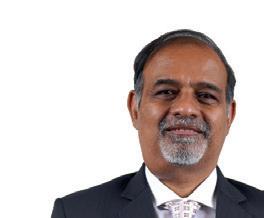
“Most of them are first looking at digital and omnichannel experience, especially how they can do zero touch customer onboarding. Many banks see SMEs as a big market opportunity, also buy now, pay later.”
From his own analysis of the UK market, he believes opportunities abound for midand lower tier banks and building societies, particularly if they embrace the evolving open data frameworks. And eMACH.ai is, says Saxena, oven-ready for open finance.
“I was intrigued by the customer affinity that building societies and mortgage banks in particular have, and the certain sets of customers they have,” he says. “Now there is an opportunity for these banks to leverage open finance to really embed themselves in their customers’ lifestyle journeys.
“The platform we have launched will enable these specialised and lower tier banks, to increase their market opportunity; drive a comprehensive financial canvas for their customers’ stated and unstated needs.”
customer is creating by each and every transaction, and how they can green those transactions.”


In other words, eMACH.ai gives smaller institutions affordable flexibility to carve out a niche for themselves and compete with dominant players by giving an incrementally
Balancing the banking industry: Platforms like eMACH.ai could be the true leveller
75
The UK’s smaller banks and building societies could help ‘unleash’ economic growth in line with the government’s Edinburgh Reforms. But to take full advantage of that they need access to affordable tech… Rajesh Saxena from Intellect Design Arena believes he has the answer
Where technology has become the backbone of banking, the inability to spend as much as the big banks is one of the key challenges these providers are facing
ffnews.com Issue 28 | TheFintechMagazine
You can’t be it, if you can’t see it
In a stubbornly homogeneous industry, Man Group is leading by example on inclusion and diversity. It’s hard but worthwhile work, says Rachel Waters, its Deputy Head of Trading Platform Technology, who shares her experience of what it’s like to be in the minority


“My first job was as a graduate trainee at an investment bank. At the job interview, there were probably 200 candidates, maybe a dozen women, and all of the women got the job.
“I went back to the recruitment consultant and said, ’Is this positive discrimination?’ and they shrugged. That’s quite a burden to have when you’re starting out in your career.”
This was how Rachel Waters began her working life, and it was an experience she says left her with imposter syndrome for years. Though the financial industry
runs many schemes to improve inclusivity, a Goldman Sachs study into the US investment market last year revealed that all-male teams accounted for 70 per cent of funds and nearly 60 per cent of assets under management. For all-women teams, the figures were two per cent of funds and one per cent of assets.
It concluded that: “Without intentional practices to address structural barriers or implicit barriers, the industry will continue to skew toward men”.
And it’s not just men, but anyone who’s identifiably different to the incumbent majority.
“We’re starting from a very low bar in terms of the makeup of the community we have in the investment industry,” says Waters, who went on to become investment giant Man Group’s deputy head of trading platform technology. She believes that if the industry is serious about tackling bias against any group, it must be addressed from beginning to end – from recruitment to job promotions – and that it shouldn’t assume there is a one-size-fits-all solution.
“What might work for women might not work for social mobility, for instance,” she says. “Diversity isn’t something that you do, it’s something that you get from doing
equity and inclusion. It’s about trying to make sure everyone feels absolutely able to be themselves fully at work.”
Nurturing diversity in organisations has been formalised by environmental, social and corporate governance frameworks that run right through modern businesses. But Man Group has rolled up its sleeves and gets involved, even before candidates walk through the door.

It recognised that a lack of diversity in the industry means whole sections of society will be unaware of jobs in investment finance and the possibility of building a career there. So Waters’ own department works with an organisation called Code First Girls that helps recruit female technologists.
She says: “We simply weren’t receiving CVs from women, so we came to the conclusion that we would have to fix the pipeline. It’s about having an open door and bringing people in, maybe when they’re not entirely qualified for the roles that are on offer.
“Code First Girls offers free IT training to women, non-binary people, anybody –school leavers, graduates, career switchers, returners – and they are bringing us even more diversity than we bargained for.
76 TRADETECH: INCLUSION & DIVERSITY
TheFintechMagazine | Issue 28 ffnews.com
“We knew we were going to get more women and non-binary people, but what we’re getting is lots of different disciplines as well. They offer free training to anyone who is a graduate, so we’re getting a real range of people, which is fantastic.”
Code First Girls provides a 12-week training course, then participants enter the industry as full-time employees. But Waters says you cannot expect new starters to arrive ready to go from day one.
“To be fair, no one comes into this industry fully formed,” she says. “But we’re doing a little bit more investment lower down in the pipeline to get people up the curve so that they can start to participate fully, so they can feel that they’re comfortable to start fully contributing to the team.
“To someone who doesn’t know anyone who’s had a professional job, or has never been into an office like this, it’s all really strange and unusual, with all sorts of encoded behaviours.”
Looking back on her own experience in her first developer role in banking, Waters says there were so few female role models that when she received a promotion or project opportunity she’d wonder if she was getting special treatment because of her sex. That’s not something she’d want anyone from any group in the minority at work to feel. So she’s interested in boosting representation in as many ways as possible – including through interventions before someone joins the industry, and sponsorship once they’re hired.
She says: “I’ve heard that just four interventions in somebody’s early life can convince them there is a path into these careers for them. If someone goes into a school, talks to pupils about this job and they hear that message, or we invite them into the office for an insight day, they may start thinking, ‘If I work hard, and I’m smart, I can do these jobs, and this is an option for me’.
“Regarding sponsorship, that’s something I’ve benefitted from in my own career. I think having someone who’s advocating for you when you’re not in the room, almost like an uber allyship, if you like, is really important.

“If we’re not sponsoring people who don’t look like us, then that’s ultimately putting a barrier in place for underrepresented groups as they try to move on in their careers.”
CHAMPIONING DIFFERENCE
Man Group, which has 1,600 permanent staff of 70 nationalities working in 11 countries, publishes a diversity, equity and inclusion report each year to explain its internal efforts to boost all of them.
Among the initiatives highlighted are hosting events for Girls Are Investors, which seeks to promote asset management as a career choice for women and non-binary people, and it works with EnCircle which runs mentoring for Black people in the industry.
The business has ‘Drive Networks’ for employees, which promote equity and inclusion for groups and causes, supporting women, LGBTQ+, Black employees, family life, South Asian people, social mobility, new starters, neurodiverse employees, forces veterans, Latin and Hispanic employees and people with disabilities. In his report introduction, outgoing chief executive Luke Ellis explains: “There should be no particular ‘type’ of person that joins the financial services industry.”

By the end of the year, the highest office holders in Man Group will be proof of that sentiment. Ellis’ replacement is Robyn Grew, a woman with a formidable CV in investment banking, and the incoming chairwoman is Anne Wade.
Grew, who has a wife and son, and is currently the President of Man Group, was described in the Financial Times by her peers as ‘an empathetic colleague and a vocal champion of difference – not diversity in the box-ticking sense but diversity of thought, talent and approach’.
It was the groundbreaking British theatre director Marianne Elliott who said ‘if you can’t see it, you can’t be it’ when talking about women’s career choices specifically, and both Grew’s and Wade’s appointments will send a very public signal to anyone who might feel that the investment industry is intolerant of individuals who don’t conform to the stereotype, that things are changing – in this firm, at least.
The Group’s annual diversity, equity and inclusion report contains measurements of progress with regard to the firm’s gender pay gap, and Waters says such measurement is crucial for progress.
“I know it sounds a bit dry, but if you don’t measure something you don’t know where you are, you don’t know if the things that you’re trying to do are moving the needle,” she says. “Signing up for things like the Tech Talent Charter and some of the social mobility initiatives going on in the City of London, we have to publish our data back, externally and publicly, and that gives us accountability. I think that’s super helpful. It raises awareness internally in the firm as well about how important diversity is as an initiative.
“How diversity impacts on output is quite difficult to measure and I’m not going to make any claims for that. But I would say it’s about the way that the team interacts. I’ve worked on teams where you’ve got two people who’ve done the same course, at the same university – that’s not conducive to challenge, or debate, or creativity.
“The idea of having diversity of background and diversity of thought, is that it generates new ideas, new ways of thinking, and challenge to the conventional way that we’ve been doing things for the past 25 years. That’s what we’re looking for.”
Ultimately, Waters hopes that efforts to improve diversity and inclusivity will mean that a young Rachel in the not-too-distant future won’t be ‘fighting against their nature to succeed in an environment that isn’t set up to work for someone like them’.
“What I would love to see is that nobody walks into a meeting, or a team – at Man Group, or anywhere else in this industry – and sees nobody who’s like them. That should be the norm, that people feel at home when they come into the industry, and I don’t think we’re there yet.
“We can look at the pipeline and look at fixing that at entry level, but then we have to think about retention and promotion, and question ourselves about every opportunity we hand out to people, whether that’s team leading, project work or new challenging projects to do.
“We must ask, ‘Who are the people that we give those to?’ and challenge everybody, so that we can start to create the pathway for people to become future leaders.”
77
ffnews.com Issue 28 | TheFintechMagazine
What I would love to see is that nobody walks into a meeting, or a team – at Man Group, or anywhere in this industry – and sees nobody who’s like them
speak to TradeTech chair and diversity champion Julia Streets about the opportunities and challenges the metaverse presents to the investment industry
When Mark Zuckerberg changed his company’s name from Facebook to Meta in 2021, the term ‘metaverse’ became part of the mainstream.
The same year, a digital artwork called Everydays: The First 5000 Days set a record for a non fungible token artwork when it sold through Christie’s for $69million.
For some time, gaming had embraced an early version of the metaverse, with the likes of Fortnite, boasting 250 million average monthly players, delivering an open-world concept and in-game currency. But suddenly everyone was talking about the new world of virtual reality as a business opportunity.
To rewind for a moment, it’s probably helpful to nail down exactly what the metaverse is. The dictionary definition says it is a ‘version of the internet that incorporates three-dimensional virtual environments’, but this doesn’t really go far enough. Perhaps a more useful description is that the metaverse represents a spatial computing platform meant to replicate the real world, with all the key aspects of a fully functioning society, like social settings, currency, economy and trade.
And it is in those last three contexts –currency, economy and trade – that many in the investment industry are treating the metaverse as the next evolution in how
they will do business. The industry wants and needs to be anywhere that wealth is created and assets are traded, and the metaverse potentially allows it to connect with a whole new generation of potential investors, customers, and clients.
The direction of travel seems clear. In June 2022, Publicis, the international PR firm that represents many major financial services companies, revealed that it now had more than 1,000 employees dedicated to developing metaverse projects for clients. Those staffers include a digital avatar called Leon who serves as the company’s new chief metaverse officer.
In February 2022, JP Morgan announced it would be the first bank to establish a presence in the metaverse, opening a lounge in the popular blockchain-based world, Decentraland. According to a JP Morgan report, the economics of the metaverse – or metanomics – offers a market opportunity of US$1trillion in annual revenue.
In late 2022, DBS bank partnered with The Sandbox, the largest virtual world in terms of transaction volumes, to launch DBS BetterWorld to demonstrate how the metaverse can be used as a force for good.

Then, this month (June), Apple announced the launch of its Vision Pro VR headset, billed by many as the iPhone of virtual reality. Taking on competitors like Microsoft’s Hololens, Meta’s Oculus and Magic Leap, Apple has called its new device
BRAVE NEW WORLDS
‘a revolutionary spatial computer that seamlessly blends digital content with the physical world, while allowing users to stay present and connected to others’.
Vision Pro is most likely to become, literally, something of a game-changer – and anywhere these highly valuable big tech, trend-setting companies go, traders are sure to follow.
After a couple of years in which more temporal concerns took bosses’ minds off the virtual to concentrate on the very real implications of war and recession, Apple has put decentralised worlds back in the headlines. Shares in Unity, the game-development software maker that Apple’s working with on the product, jumped 26 per cent, while Disney shares also got a boost after saying its Disney+ service would be available on Vision Pro.
Julia Streets, founder and CEO of Streets Consulting, a business development, marketing and communications consultancy working with many in the investment sector, has been keeping a close eye on how this new technology and the way we experience it will impact the financial industry.
A former global head of communications at Atos Euronext Market Solutions and head of marketing and sales development at agency-broker Insteint, her company has been operating a virtual business model for over a decade. In 2023, she launched a fascinating online show called

78 TRADETECH: METAVERSE
TheFintechMagazine | Issue 28 ffnews.com
We
Metaverse: What Matters, a head-to-head with Dr Catriona Wallace, the founder of the Responsible Metaverse Alliance, in which the two women’s avatars discuss the key opportunities and challenges that the new technology brings. Dr Wallace, in Australia, and Streets in the UK, meet virtually in the metaverse. It’s a fun and strangely compelling way to deliver content and take an honest look at a potentially exciting new medium.
Some of the issues it raises echo themes in Streets’ other long-running podcast DiverCity, now in its 15th season, in which a real Streets chats with a broad spectrum of leaders – from the Governor of the Bank of England to small, unheard-of networks – about areas of transformation and aspects of diversity and inclusion in financial services and related industries.
“I have posed the question quite a few times that if we are fighting to keep digital talent today, what is this going to look like in the future?” Streets says. “There is this great big metaverse beast cantering over the hill, so, if you’re not maintaining a really strong culture to attract and retain your digital talent, watch out, because that is going to be a very attractive place to play.
“And this is definitely not going away. It’s certainly on people’s minds. We know the investment is going in; $120billion last year alone went into building out metaverse technology and infrastructure. So how is the investment industry going to react to this new environment?”
In Metaverse: What Matters, Dr Wallace, an ethical AI specialist and Streets addresses a number of key issues.

“Like what do we need in terms of governance?” says Streets. “Who’s going to regulate it? How are we going to protect certain constituents within the metaverse? How is content going to be created? How are we going to interoperate between different metaverse worlds, and also the real world?
“When we consider what we’ve learnt from social media, and Web 2.0, how do we bring some of that best thinking into good governance and good metaverse behaviours?” continues Streets.
“And then also thinking about the diversity, equity, and inclusion piece, because that’s really important.”
DIVERCITY LAND?
In investment management, the world Streets knows best, the data on diversity and inclusion isn’t encouraging. A 2019 Knight Foundation analysis, as reported by Forbes, found that firms owned by white men manage 98.7 per cent of the $69trillion handled by the US asset management industry.
“Number one is leadership. So, right from the very top, take it seriously, and be authentic, and live and breathe it every day,” she says. “Then take it down to your next level of management, which is point two, and create enlightened leaders. This is the age of enlightened leadership. What you have learned about how you run your businesses in the past, doesn’t apply today, because of technology, climate change, and some other big questions that weren’t on the agenda a while ago, like hybrid working. We’re managing teams like we’ve never managed teams before.
“The third thing is recruitment. How do you write your job descriptions? How do you attract talent? And then how do you retain that talent? That’s where culture really comes in; a culture to retain aspirational talent within your organisation.
“Which leads on to the fourth thing, which is role models and allies. Making sure that your senior leadership team, and also your employees and teammates, are coming forward as role models and allies for each other. This flows into the fifth, which is the power of networks, individual networks around particular employee resource groups, but also the intersectionality between networks. And once they begin to start working together, as leaders at the top of your organisation, they will tell you everything you need to know.”
Furthermore, a 2017 survey found that 88 per cent of senior fund managers are white and the pipeline of talent looks very much like them: junior positions such as analysts and associate managers are more than 70 per cent white. Women, meanwhile, make up only eight per cent of professional investors. Clearly, organisations have been falling behind in their governance when it comes to diversity.

With that in mind, and using knowledge gleaned from her career and interactions with her audiences via her podcasts, Streets has come to her own conclusions on what will drive diversity – of gender, age, ethnicity, sexual orientation, faith, physical ability, and neuro diversity – in organisations such as the ones she deals with every day.
But competition for skills increasingly needed by the investment industry is also those for which there is the hottest competition. According to a PwC survey last year, 46 per cent of companies across the board are hiring people with metaverse-related skills – including software engineers and developers, and AI engineers. If the choice is between working in an overwhelmingly white, male-dominated environment and a vibrant, diverse and inclusive one, most young recruits are likely to choose the latter.
That doesn’t have to be the case in future, says Streets: if the mindset is right, she believes meaningful change is achievable in the investment industry.
“It’s all about purpose; purpose-driven organisations will attract and retain the best talent across the entire spectrum,” she says.
“I firmly believe that rather than just looking in the same pools and turning up the same results, the talent can be found right beneath our noses, we just need to think differently.”
79
ffnews.com Issue 28 | TheFintechMagazine
There is this great big metaverse beast cantering over the hill, so, if you’re not maintaining a really strong culture to attract and retain your digital talent, watch out
New worlds order: The metaverse will trigger a fight for digital talent
A modernthoroughly Man
Man Group is an active investment management firm with $144.7billion in assets under management. It is the world’s largest listed hedge fund manager.
At the heart of the firm, and driving its performance, are two technology divisions. Alpha Technology is responsible for innovation and building the infrastructure that, ultimately, drives all its investment decisions; Trading Platform and Core Technology powers the day-to-day execution of trade.
Last year was a financially strong one for Man Group, with full-year core pre-tax profit coming in 18 per cent higher than 21/22 at $779million –largely due to the firm’s computer-driven macro funds.
We spoke to Gary Collier – who oversees around 230 engineers and data scientists as CTO of Man’s Alpha Technology Division – about strategy, access to data and what traders of the future will need.

THE FINTECH MAGAZINE: How do you build a strong core data set, and how do you then build off that component?

GARY COLLIER: Data isn’t just something that comes in from the outside world and drives our investment decision-making; it also underpins every single part of
our value-generation process, across the firm – that’s data ingestion, the quant modelling that we do, the portfolio construction, the risk modelling and trade execution. So, think of data as the foundation, which underpins every single part of that value chain.
In different parts of that chain, there are different challenges that need to be thought about quite deeply. Not just the standard ‘extract, transform, load’, but also mapping data into something we’re going to trade.
There are bigger and bigger volumes of data, and we need to build more and more complex models, to handle it because the pursuit of alpha is hard and doing that at scale, and doing it efficiently, is harder still.
TFM: How do you make the most of that data and make sure your traders, or portfolio managers, are able to access it when they need it?
GC: Having investment professionals with market knowledge and access to the right tools and data, so they can self-serve, optimises the end-to-end of data being available and the action being taken off the back of it.
So, we can look at things from a purely technical perspective and say ‘how do we minimise latency?’ or ‘how do we make
the computer systems faster?’, but the broader way of looking at timeliness of data, is to put it in the hands of people who can make actionable decisions off the back of it, and look to make sure we can optimise that, end to end.
If we want to put data to good use, therefore a number of different pillars come into play.
The first consideration is that our investment professionals increasingly need to be well-versed in Python; that’s pretty much the de facto language now for dealing with data and doing data science. So, to make sure our investment professionals are suitably equipped, we have an internal programme providing Python and data science training.
Then we have a powerful, rich technology platform, that provides those professionals with the tools they need, in a very easy-to-access fashion. Literally, anyone in the firm can go to a web browser, type ‘Python’ into the URL bar, and a Python environment materialises for them in which they can start writing code.
Finally, there is the data itself; the fuel to that process, all of which is accessible via an in-house data catalogue. People can search for the data; the data being appropriately permissioned for their job function. The licensing considerations
80 TRADETECH: DATA-DRIVEN INVESTMENT
TheFintechMagazine | Issue 28 ffnews.com
No alpha, no business: MAN Group’s Alpha Technology Division builds the infrastructure for trade success
Gary Collier, CTO of investment manager Man Group’s Alpha Technology Division, describes how tech augments today’s traders and how it will in the future
are all taken into account and then the Python code they need to run to access that data is presented to them.
By building all of those pillars, the training, access to the technology, and access to the data, it helps optimise that end-to-end process, from data coming into the firm, to actionable insight being taken as a result.
TFM: You’ve just released a new data-focussed product, ArcticDB. Can you tell us a bit more about it?

GC: Regardless of the form data takes when it comes in from the outside – it might be numeric tables, text documents, etc. – it is typically the case that you won’t be able to proceed too far into it before you end up dealing with DataFrames of data.
Imagine an Excel spreadsheet at an industrial scale, with hundreds of thousands of columns, millions or billions of rows. That’s DataFrames – the sort of complex quant modelling we do might see a model that’s composed of thousands, or tens of thousands of these very large frames of data.
Simply put, ArcticDB, allows our investment professionals to interact with DataFrames, the natural unit of what we’re doing here, in as seamless a fashion as possible. It does lots of other clever stuff behind the scenes, too, that are attuned to some of the problems in our industry, such as bitemporal modelling or the ‘point-in-timeness’ of data – not just knowing what the data is now, but what it looked like when it was published, which supports complex back testing.
But I wouldn’t pigeonhole ArcticDB as just a tool for a particular corner of quant finance. Anywhere that you’re doing data science, you’re probably using Python, and wherever you’re using that technology, be it in quant or the discretionary space, there’s a place for it.
TFM: Is it difficult to strike a balance between speed and reliability of data needed to empower your investment managers?
GC: On the face of it, these are two competing concerns, as you imply. There is the need to be agile, but also – when managing billions of dollars’ worth of client funds – the need to be very accurate and reliable.
I think of our technology in terms of two estates. Firstly, there is the research and development estate, the type of technology platform that allows investment professionals to iterate very quickly, in what amounts to a financial laboratory with lots of compute cores, lots of access to data, lots of Python. It’s an environment that facilitates interactive, iterative research and where models are developed and back tested.
Of course, when we take our higher conviction models, and want to trade those in production with real money, different rules apply. Here, there’s a completely different part of our technology estate involved, which I’d refer to as our production estate. And it’s one that’s very carefully locked down.
I’m a CTO, and even I don’t have access to that part of the system; indeed, only a dedicated group of operations specialists do, and they’re the folks who are responsible for making any changes.
That isn’t to say we’re not agile there, too; indeed, we’re releasing roughly 5,000 changes per annum to production. To make sure this is done as safely as
People talk about ‘tech’ and ‘the business’ as two separate entities; they’re not…
Roughly half of my team are embedded in investment management teams, working side by side with quants and portfolio managers
possible we adopt a very progressive approach to engineering: continuous integration, continuous deployment, a substantial amount of automated testing, automated deployments, etc.
One thing I’d add – in terms of organisational construct – is that I dislike it when people talk about ‘tech’ and ‘the business’ as two separate entities; they’re not.
Tech is an integral part of Man Group’s business and that’s reflected in the way i n which a lot of the alpha tech engineers work. Roughly half of my team are embedded in investment management
teams, so they’re working side by side with quants and with portfolio managers.
TFM: Earlier this year Man Group ran an experiment with ChatGPT to find out what it ‘thought’ about investment strategy. The results, it would be fair to say, weren’t particularly impressive! So where do you see automation and AI being used in this industry in the next two to five years?
GC: I think there will be an almost relentless focus on general automation efficiency, and using that to help drive innovation across everything we do.
Secondly, there are certainly some pockets readily identifiable now as areas where we will see, or are seeing, increased automation. If we look at the electronification of different asset classes, then credit, for example, is probably following a path like equities took some years ago, in terms of greater electronic market access of liquidity.
When it comes to generative AI, which of course is very topical, absolutely, there’s scope for these technologies to help automate some of the toil that’s inherent in writing software – for example, automation of construction of unit tests as a first pass. It doesn’t take the role of the engineer away, but it certainly gives them a starting point.
TFM: What skills would you advise future traders to be looking at, given an ever-changing ecosystem where suddenly they’ll be able to employ automation and use generative AI tools?
GC: I’d focus on the power of combining deep market knowledge with technical knowledge and with the ability to manipulate data. If you can master those three skills, then it will be an enormously powerful combination to bring to bear on the job, and be enormously impactful upon the organisation you work for.
In terms of specific advice for traders, learn Python, learn data science tools, learn about that ecosystem.
It will offer a deeper understanding of how markets work, but it will then also allow you to look at the algorithms your organisation has built and ask how are those algorithms performing; is there scope to fine-tune them?
Collectively, I think those skills provide a very powerful arsenal.
81
ffnews.com Issue 28 | TheFintechMagazine
Where now for ambitious tech?
What do neobanks Monzo, Revolut and OakNorth, financial management app Wealthsimple, trading platform eToro, credit and fraud analyst Trade Ledger, and insurtechs Marshmallow, ManyPets and Zego, have in common? OK, so they’ve all featured in these pages – well spotted, loyal readers. The majority of them are unicorns, you’re right. And yes, they all started in the UK. But beyond that?
If you’re a Tech Nation alumni or one of the many talented and committed individuals who helped the not-for-profit growth accelerator stamp success on more than 4,000 startups and scaleups over a period of eight years, you’ll know the answer.

The Tech Nation concept was one of David Cameron’s ideas as Prime Minister. It was both a statement of the UK’s ambition to reposition itself as a new technology-led economy and an interactive data project to track the growth of digital businesses and where clusters of them were emerging.
When Tech Nation took physical form as the result of a merger between Tech City UK, based in London, and Tech North, it chose Manchester as its base – a signal that this was an economy-driver that everyone could steer, not just from the capital.
According to a 2023 report, compiled by FinTech North, Whitecap Consulting and others, the Greater Manchester fintech sector is now the largest ecosystem for the
industry outside of London. It’s home to around 150 fintech firms, the vast majority of them startups and scaleups, whose number has trebled over the last three years. Starling Bank moved into the city this year, joining BankiFi, Adyen, Worldpay, Ebury and Xero, among others. Manchester Met University is the first provider of a fintech masters course in England.
While it contributed hugely to propelling the UK into the top three global destinations for tech investment, Tech Nation embedded itself in the regional economy and created a halo effect that helped to convince founders they didn’t need to be in London. The proven benefits of having a more geographically diverse tech sector have been demonstrated.
In 2014 there were just four places in the UK where you could spot a tech unicorn grazing; now there are populations of them in 20 or more locations.
More than a third of those stellar-growth companies graduated from a Tech Nation programme; collectively they raised more than £28.1billon in venture capital and on capital markets. While 80 per cent of startups fail within two to five years, more than 95 per cent of those that went through Tech Nation programmes successfully scaled – that is an outstanding statistic. Bang for bucks, the organisation delivered.
But Tech Nation was the victim of a curious funding decision last year. During Liz Truss’ short and economically disastrous
term as PM, the government decided to give an annual £12million that Tech Nation relied on to Barclays Bank to work with startups and scaleups through its Eagle Labs. The decision was widely condemned by founders and VCs – comments ranged from ‘baffling’ to ‘anti-competitive’.
The sense of bewilderment (and genuine sadness) was still evident six months later at Tech Nation’s valedictory event in March to present the last of its annual reports. This one was a bit different: it was leaving behind a roadmap for how the country could sustain conditions for growth now Tech Nation was exiting.
The current economic climate does not work in founders’ favour, and the UK tech ecosystem was at an inflection point –‘either the bubble risks being burst, or future growth can be promoted, and augmented’, it said. If anything, now was the time to double down on mentoring startups and scaleups to make them investment ready and facilitate those introductions. But, as one VC commented, with the decision to effectively pull the plug on Tech Nation, ‘the idea of government as a provider of startup advice to founders backed by Tier 1 VCs is finished’.
It’s now emerged that global entrepreneur network, VC-backed Founders Forum Group has acquired Tech Nation. But there’s still no explanation for the decision to leave the organisation stranded. And what does it say about government’s commitment to building a true tech nation?

82 FINTECH FOCUS: STARTUPS/SCALEUPS TheFintechMagazine | Issue 28 ffnews.com
Full of ideas: But founders need support
The curious
of Tech
in a
demise
Nation
period of investment uncertainty
Let’s talk about the next wave in AI, Machine Learning & Managed Services
SmartStream’s fully integrated suite of solutions and platform services for middle- and back-office operations are more relevant than ever – proven to deliver uninterrupted services to critical processes in the most testing conditions. Their use has allowed our customers to gain greater control, reduce costs, mitigate risk and accurately comply with regulation.
With AI and machine learning growing in maturity, these technologies are now being embedded in all of our solutions and can be consumed faster than ever either as managed services or in the cloud.

Simply book a meeting to find out why over 70 of the world’s top 100 banks continue to rely on SmartStream.
info@smartstream-stp.com
smartstream-stp.com
Experience composable banking with Mambu's SaaS cloud banking platform.
Learn more


























































































































































































































































































































 Organised By
Organised By

























































